
14 Types of Small Boats
Explore the world of small boats with our guide on 14 types, featuring essential details on sizes, features, and vivid photos for travelers.
Boat lovers all over the world first found their fondness while fishing aboard a small canoe, riding down rapids on a kayak, or on some other small boat. Those looking to recapture that initial feeling, hoping to share it with others, or wanting to own a small boat for any other reason, will find a multitude of options.
There are a huge assortment of small boats on the market, all with various uses and in different sizes. From dinghies to Jon boats, to skiffs, and beyond, small boats can be a valuable asset for any boater. These specialized boats can help solve problems larger boats can’t handle and offer an additional way to enjoy the water.
However, with so many options, finding the right one for your specific needs can be a challenge. This is especially true if you aren’t familiar with the terminology or names of the many different types of small boats.
Below is a list of many of the most common small boats on the market, and an explanation about each one’s use. So, whether you’re looking for a fishing boat for the weekends, a small boat as a companion to a larger one, or something else, you’ll know what to look for.
What Are the Different Types of Small Boats?
Now that it’s understood that there is a wide array of options to choose from, let’s dive into the specifics of the most popular options out there. After this article, you’ll feel confident that you know what you’re looking for to meet your specific needs.
Pontoon boats

Pontoon boats are a great option for those looking for a casual boat option either for fishing or cruising short distances. These boats offer a lot of room on board for seating and are distinguished by the Catamaran style hull keeping it afloat.
Most pontoon boats are between 15 and 30 feet long. They have a flat profile with aluminum tubes spread around the boat for added support.
The flat profile allows for plenty of passengers and equipment to be stored on board, however pontoons are not suited for long distances. This is a casual cruiser or fishing boat, not an intracoastal voyager.
Inflatable boats

There are two main types of inflatable boats, the RIB kind and the SIB kind. RIB stands for rigid inflatable boats. These types of boats have a rigid flooring or hull with an inflatable component. SIB stands for soft inflatable boat. These types of boats are soft all the way through.
Both the RIB and SIB have their advantages and disadvantages. The RIB offers added structural integrity, but due to its rigid hull, cannot be easily stored. The SIB lacks the structural integrity of the RIB, but its completely soft body allows it to be easily stored anywhere.
Inflatable boats typically range in size from 6 feet to 22 feet and have a variety of uses. They work great as lifeboats aboard a larger vessel, but can also be great for recreational use.

Those looking for a simple but reliable boat for recreational use, cruising, or fishing, will find exactly what they’re looking for with a jon boat. This kind of boat is characterized by its flat bottom, affordable price, bench seats, and motor.
Jon boats are most commonly used as cruisers and fishing boats. Their relatively small and simple construction makes them easy to transport, making them perfect for a quick weekend trip.
Additionally, the light and simple construction of the Jon boat makes it perfect for fishing in shallow waters, where other boats might have trouble. The simple construction also means that they require very little maintenance, meaning you can spend more time on the water.

Skiffs are one of the more ambiguous boat types in this list. Skiffs are characterized by their small, simple, and open design, but can be used to categorize many other kinds of boats. Skiffs are made up of a simple hull, an outboard engine, and some seats.
Skiffs are ideal for recreational use, fishing, and cruising short distances. The simplicity of a skiff is one of its main draws. With a skiff you won’t have to worry about maintenance or have to worry about mastering many moving parts.
Their compact size also makes them easy to transport and easy to maneuver in the water. However, their small size also means that less people can be aboard at a time. Additionally, they have no natural protection from the elements, so you will have to find a safe space for storage.
If you’re looking for a simple boat ideal for recreational use at a moderate price, then a skiff might be for you.
Personal Watercrafts

Sometimes referred to as water bikes, water scooters, “boatercycles,” or jet skis, personal watercrafts, or PWC’s, offer a lot of fun. These small “motorcycles” of the water are great for the adventurous looking for a thrilling time on the water.
Jet skis are recreational watercrafts suited for cruising and some light fishing. They can range in horsepower from 60 to 300, so you can get some serious speed if you want it. PWC’s can only hold one or two people, so keep that in mind if you’re looking to get more people on the water.
Personal watercrafts come in sit down and stand up versions, so make sure you know which one you’re getting when you buy.

If you’re looking to go fast but want something larger than a personal watercraft, then a jet boat is for you. These boats use a high powered nozzle to propel you quickly through the water. These boats are great recreational boats for cruising and water sports.
Jet boats typically vary in size from 14 to 24 feet in length. They can’t fit as many people as some other boat options, but you will still find space to bring along a few passengers. The main draw for a jet boat however, is the speed and maneuverability.
Jet boats are great for speeding along the water even in shallow areas and participating in water sports. While you could also fish from a jet boat, you would probably be better off with a different option, as these are built for speed.

Dinghies are another type of boat that come in a variety of shapes, sizes, and forms. Dinghies can be sailed, rowed, or motored, but a common aspect is they are small and often used alongside a larger boat.
Some dinghies will be inflatable while others may be fiberglass, aluminum, or wood. They are typically between 8 and 10 feet long, making them one of the smallest options in this list. They also have varied amounts of seating, depending on the specific kind you get.
Dinghies are best used as companions to larger boats to reach areas that the larger vessel can’t reach. Their compact size makes them perfect for towing along with a larger boat. They can also be used as small fishing boats or for relaxing on the water.
Aluminum Fishing Boats

Aluminum fishing boats are one of the most reliable and utilitarian options on the market for fishing. Their relatively small size, between 8 and 24 feet in length, make them easy to transport to your favorite fishing spot for the weekend.
Aluminum fishing boats are great for navigating even the most shallow of waters, and their simple construction makes them durable. You won’t often find yourself worrying about maintenance with this type of boat.
Some fishing boats must be rowed, but most will be motored. They often have plenty of floor space for sitting, walking, and storing equipment.

Canoes are one of the most popular options of boat on the market for their simple construction, low maintenance, and ease of use. Canoes are propelled by rowing and are great for a fishing trip, or for coasting along a river.
These types of boats are moderately priced and easy to transport, making them perfect for recreational use. They offer plenty of seating for passengers, given their small size, which you’ll be thankful for when rowing.
Canoes are simple and offer plenty of fun for everyone involved. They come in a variety of shapes as well, some prioritizing speed, others prioritizing coasting, and more.

Kayaks are very similar to canoes in their simple construction, but vary in a few key ways. While canoes offer an open interior to store things and sit, Kayaks seal off your legs and are used primarily for traversing a body of water.
Kayaks typically only sit one or two people and are propelled by rowing. They use a double bladed paddle as opposed to two separate oars.
Kayaks are also more suited for maneuverability, and will often be seen as the boat of choice on rapids. These types of boats are ideal for coasting along a body of water or racing down rapids.
If you’re looking for a boat with speed but want a more comfortable seating area than a jet boat has, then the deck boat is for you. This type of boat varies in length from 25 to 35 feet, and offers plenty of seating and comfort for all your passengers.

The wide deck is what gives the deck boat its name. Its large deck space makes it ideal for just about any water activity. Its high powered engine makes it great for watersports, while its wide deck makes it suitable for parties.
Deck boats can be used for fishing, some longer distance travel, and much more. These are the ideal boat for someone hoping to take a lot of people out on the water.

Runabout boats are another catch-all term used to describe a variety of boats. Runabouts include bowriders, deck boats, jet boats, and more. The two primary factors that distinguish a runabout boat are that they are powerboats, and that they are relatively small.
Bowrider Boat

Bowriders are another great option for those hoping to take several people out onto the water. They typically range in size from 16 to 28 feet in length and are characterized by their v-shaped hull.
Bowriders are great for just about any water activity from fishing to cruising, to watersports, and beyond. They are known for their versatility.
What's the Smallest Boat?

The smallest boat on the market is the jet ski, the largest being only around 11 feet long. While there are some dinghies, kayaks, and other boats of similar size, jet skis at their smallest take the title. The stand-up models are even smaller than the sit-down style.
What Is a One-Person Boat Called?
There is no one singular name for a single-person boat, as there are numerous kinds of boats that are built for individuals.
Some of these types of boats include kayaks, rafts, sculls, and dinghies. However, there are many more, and some of these have models that fit more than one person.
What Is a Small Pleasure Boat?
Small pleasure boats can refer to a variety of boats on the list above. While there is no official designation for what makes a “small” boat, most people agree that smaller than the upper 20s in feet is the cut-off.
Some small pleasure boats may include bowriders, runabouts, jet boats, and car toppers among many more. What distinguishes a small pleasure boat is that it fits within the loose definition of “small boat” and can be used as a personal water vehicle.
Kit Evans is a seasoned marine journalist and naval architect, bringing over 20 years of multifaceted experience in the boating industry to his writing and consultancy work. With expertise ranging from boat design and marine surveying to charter operations and vessel restoration, Kit offers unparalleled insights into all aspects of maritime life. When he's not penning articles for top boating publications or hosting his popular YouTube channel, Kit can be found sailing his lovingly restored 1960s Columbia 29 on the Chesapeake Bay, embodying his commitment to both preserving nautical heritage and embracing modern innovations in boating.
Recommended Reads

Best Boat Brands for Leisure: Ranked by a Marine Journalist
From luxurious yachts to versatile day cruisers, navigate the waters of boat buying with insider knowledge and hands-on experience.

The 25 Best Things to Do in Sarasota, FL
From powdery beaches to world-class art, Sarasota blends coastal charm with cultural sophistication for an unexpectedly diverse Florida getaway.

3 Days in Miami: The Perfect Miami Itinerary
Discover sun-soaked beaches, vibrant art scenes, and Cuban-infused culture in this tropical metropolis. Follow this 3-day Miami itinerary for best results!

Top 25 Things to Do in Miami
From art deco glamour to Little Havana's sizzle, Miami serves up a spicy blend of cultures, cuisines and cutting-edge cool.
Trending Reads

15 Best Lobster Boat Tours in Maine
Explore the top 15 lobster boat tours in Maine for an unforgettable experience. Learn to catch lobster, enjoy marine life sights, and more. Ideal for travelers!

How Much Does Freedom Boat Club Cost?
Explore Freedom Boat Club costs state by state! Learn about membership fees, benefits, and why it's a budget-friendly option for boating enthusiasts.

20 Best Liveaboard Marinas in North Carolina
Explore the top 20 liveaboard marinas in North Carolina, perfect for travelers seeking a unique on-water living experience with all amenities included.
Your trusted source for travel guides, tips, and insights since 2020. Empowering adventurers with expert advice for smarter, more rewarding journeys.

11 Types of Small Boats
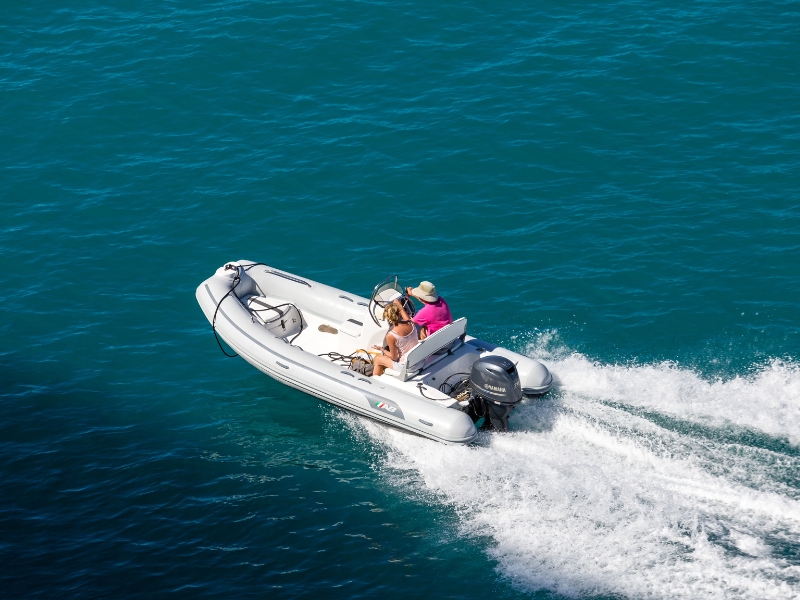
Want to buy a small boat and don’t know what to choose? Here’s a comprehensive guide to 11 types of small boats and their uses.
Small boats serve various purposes: recreation, transportation, commercial use, search and rescue, military use, environmental monitoring, work boats, and personal use.
Moreover, small boats are often used for recreational activities such as fishing, water sports, exploring, socializing, and transporting people and gear to and from larger boats or to reach the shore.
The most common small boat types and their uses
- Jon boats – a flat-bottomed boat that is typically used for fishing, hunting, or utility purposes
- Skiffs – a small open boat typically used for recreational boating, fishing, and other water activities
- Dinghies – a small, lightweight boat often used as a tender to transport people and gear to and from larger boats. They can also be used for recreational purposes
- Inflatable boats – convenient for portability and ideal for recreational use, fishing, and as a tender
- Aluminum fishing boats are made from aluminum or other lightweight metals.
- Pontoon boat – a type of boat with a flat deck supported by two or more pontoons. They are also used for other purposes such as socializing and relaxing
- Car-Topper boats are small, lightweight boats designed to be transported on top of a car. They are typically made from lightweight materials like aluminum or plastic and are small enough to fit on the roof of most cars
- Canoes and kayaks – versatile for recreational use, fishing, and transportation on calm waters
- PWC (Personal Watercraft) boat: a PWC, also known as a jet ski, is a type of boat that uses a jet of water for propulsion. They are often used for recreational purposes, water sports, and exploring
- Jet boat: a jet boat is a type of boat that uses a jet of water for propulsion instead of a propeller
- Deck boat is characterized by its wide and open deck layout and high-performance design.
Small boats can also be used for commercial purposes, such as fishing or diving, or for providing water-based tours. They are also utilized by rescue teams, coast guard units, military forces, and researchers for search and rescue operations, patrolling, reconnaissance missions, and environmental monitoring. Additionally, small boats can be used in work-related applications, such as construction, surveying, and oil and gas exploration.
Jon boats
Jon boats are known for their stability, simplicity, and versatility, and are often used in shallow waters and small lakes and rivers. These boats are typically made from aluminum or other durable materials, and are characterized by their flat bottom, low profile, and square bow and stern. They are usually propelled by oars, small outboard motors, or electric motors, and are designed for use in calm waters where a deep draft is not required. Jon boats typically have a small, open deck and a simple design, with basic features like bench seating, a transom, and a small console. They are also often equipped with fishing gear and accessories, such as rod holders and live wells, making them an ideal choice for anglers.
Generally, Jon boats are a practical and reliable option for recreational boaters who want a simple and stable watercraft for fishing, hunting, or other utility purposes.
Skiffs boats
A Skiff is a type of small, open boat that is typically used for recreational boating, fishing, and other water activities. Skiffs are characterized by their shallow draft and flat bottom, which makes them ideal for use in shallow waters and for accessing hard-to-reach areas. Skiffs are usually propelled by oars, small outboard motors, or electric motors, and are typically made from lightweight materials like aluminum or fiberglass. They often have a simple and minimalist design, with basic features like bench seating, a transom, and a small console.
Skiffs are versatile and well-suited for a variety of activities, including fishing, diving, exploring, and leisurely cruising. They are also often equipped with fishing gear and accessories, making them a popular choice for anglers.
Overall, skiffs are a practical and reliable option for recreational boaters who want a lightweight and versatile watercraft for fishing, exploring, or other water activities. They are typically easy to handle and operate, and are well-suited for use in shallow and calm waters, making them an ideal choice for many recreational boaters.
A dinghy is a type of small boat that is typically used as a tender to transport people or goods to and from a larger boat. Dinghies are usually less than 12 feet in length and are lightweight and easy to handle. They are often used for short trips to shore, for fishing, and for recreational activities such as swimming and sunbathing. Dinghies are typically powered by oars, paddles, or a small outboard motor. They can be constructed from various materials, including wood, fiberglass, inflatable materials, and plastic. Some dinghies can be deflated and packed away for easy transport and storage, while others are designed to bestowed on the deck of a larger boat.
Dinghies are an essential accessory for larger boats, as they provide a convenient and safe means of transportation to and from shore. They are also popular for their ease of use and affordability, and can provide a fun and enjoyable boating experience for families, groups of friends, and individuals.
Inflatable boats
Inflatable boats are a type of small, portable watercraft that are made from PVC or rubber material and are filled with air to create a buoyant platform. Inflatable boats come in a variety of shapes, sizes, and configurations and are used for a range of activities, including fishing, diving, whitewater rafting, and recreational use. These boats are lightweight and easy to transport, making them a popular choice for boaters who don’t have a lot of storage space or who need a boat that can be easily moved. They are also easy to set up and inflate, and some models can be inflated in just a few minutes.
Inflatable boats are designed to be durable and safe, and they come in different materials and configurations, including inflatable kayaks, rafts, and canoes. Some models can be equipped with inflatable seats, oarlocks, and other features, making them suitable for a variety of boating activities.
Overall, inflatable boats are a versatile, affordable, and convenient option for boaters who want a boat that is easy to transport, store, and set up. They offer the freedom and flexibility to enjoy a wide range of boating activities, making them a popular choice for many recreational boaters.
Aluminum fishing boat
Aluminum Fishing Boats are designed specifically for fishing and are characterized by their stability, durability, and low maintenance requirements. Often equipped with fishing gear and accessories, such as rod holders, live wells, and storage compartments, to make them an ideal choice for anglers. They are typically powered by small outboard motors or electric motors, and are well-suited for use in freshwater and coastal waters. The lightweight and durable nature of aluminum makes it an ideal material for fishing boats, as it provides good stability, allows for a shallow draft, and reduces the overall weight of the boat. This makes aluminum fishing boats easy to handle, transport, and launch, and also makes them well-suited for use in remote locations.
Altogether, aluminum fishing boats are a practical and dependable solution for fishermen looking for a long-lasting and low-maintenance fishing vessel. They are often well-equipped for fishing, simple to operate, and suitable for usage in both freshwater and coastal waterways, making them an excellent choice for many leisure boaters.
They may also come equipped with additional features like a trolling motor, anchor system, and a canopy for sun protection. It typically has several key features including:
- Ample storage for fishing gear, bait, and catch.
- A spacious deck for ease of movement and maneuvering while fishing.
- Rod holders for secure storage of fishing rods while not in use.
- LiveWell: A system for keeping live bait or catch alive and in good condition.
- Navigation equipment, a GPS, fish finder, and VHF radio for safety and fishing efficiency.
- A reliable power source such as an outboard motor or inboard/outboard motor.
- A specialized hull design that allows for a smooth ride and efficient handling in various water conditions.
Pontoon boat
A pontoon boat is a type of flat-bottomed boat that is characterized by its two or more aluminum or composite pontoons, or “tubes,” that are attached to a platform and provide stability and buoyancy. Pontoon boats are designed for recreational use and are typically used for leisurely cruising, fishing, sunbathing, and entertaining.
Pontoon boats are often equipped with a variety of features and amenities, including comfortable seating, shade structures, sound systems, fishing gear, and even cooking facilities. They are typically powered by outboard motors, inboard motors, or inboard/outboard motors, and are known for their stability and slow, steady pace.
Pontoon boats are typically larger than other types of small boats and can accommodate larger groups of passengers. They are also easy to handle and operate, making them a popular choice for recreational boaters who want a leisurely and relaxed boating experience.
Nevertheless, pontoon boats offer recreational boaters who seek a sturdy and roomy vessel for cruising, fishing, sunbathing, and entertainment a flexible and comfortable option. They provide a wide range of features and facilities, making them the perfect option for families, parties of friends, and anyone looking to take it easy and leisurely while on the water.
Car-Topper boats
Car – Trooper boats are usually propelled by oars, paddles, small outboard motors, or electric motors, and are often used for recreational boating, fishing, and exploring. They are characterized by their portability, easy handling, and low maintenance requirements, making them an ideal choice for recreational boaters who want a versatile watercraft that can be taken anywhere.
Car-Topper boats are also often equipped with basic features like bench seating, a transom, and a small console, making them well-suited for a variety of water activities.
Overall, Car-Topper boats are a practical and convenient option for recreational boaters who want a small, lightweight, and easy-to-transport watercraft for fishing, exploring, or other water activities. They are typically well-suited for use in calm waters, and are an ideal choice for many recreational boaters who want a portable and reliable watercraft.
Canoes and Kayaks
Canoes and kayaks are two types of small boats that are designed for different purposes and activities.
Canoes are usually wider, more stable, and have an open deck, making them ideal for recreational activities like fishing, camping, or exploring. Canoes are typically propelled by paddles, and can accommodate multiple passengers and gear.
Kayaks, on the other hand, are typically slimmer, faster, and more maneuverable than canoes. They are often used for more athletic activities like touring, racing, or whitewater kayaking. Kayaks are usually propelled by double-bladed paddles and are often designed for solo use.
Both canoes and kayaks are lightweight and portable, making them easy to transport and launch. They are also often made from durable materials like plastic or composite materials, making them ideal for use in a variety of environments. Both are versatile and practical small boats that are well-suited for a variety of water activities. They are a popular choice for recreational boaters, and are available in a wide range of sizes, styles, and materials to suit different needs and preferences.
PWC (Personal Watercraft) boat
A Personal Watercraft (PWC) boat is a type of small, high-performance watercraft that is designed for recreational use. PWCs are characterized by their small size, lightweight design, and powerful engines. They are typically powered by a jet drive that propels the boat through the water, providing high speeds and maneuverability. PWCs come in different models and sizes, and are commonly used for a variety of recreational activities, including riding waves, skiing, wakeboarding, and fishing. They are also popular for exploring and discovering new waterways, as well as for leisurely cruising and sunbathing.
PWCs are operated by standing or sitting on the craft, which is typically equipped with a handlebar for steering and control. They are designed for one or two passengers and are often used for solo riding or for riding with a companion
PWCs are a popular alternative for recreational boaters looking for a high-performance watercraft with speed, maneuverability, and versatility. They provide an exciting boating experience and are suitable for a variety of activities, making them a favorite choice for many recreational boaters.
A Jet Boat is another small boat type that is propelled by an impeller and jet nozzle, which creates a powerful stream of water that pushes the boat forward. Jet boats are designed for high speed and maneuverability and are typically used for recreational activities such as water skiing, wakeboarding, tubing, and recreational boating. Jet boats are typically powered by high-performance engines and are characterized by their unique hull design, which allows for precise handling and improved stability at high speeds. They are also equipped with advanced steering and control systems, making them easy to handle and operate.
Jet boats come in a variety of sizes, from small one or two-passenger models to larger models that can accommodate up to 12 passengers. They are often equipped with a variety of features and amenities, including comfortable seating, sound systems, and fishing gear. Jet boats are often a well-liked option for recreational boaters who desire a high-performance vessel that delivers speed, maneuverability, and versatility. They are a popular option for many recreational boaters since they provide an exhilarating boating experience and are suitable for a variety of activities.
Deck boats are designed for maximum passenger comfort and are typically used for leisurely cruising, sunbathing, and entertaining.
Deck boats are often equipped with a variety of features and amenities, including comfortable seating, shade structures, sound systems, and fishing gear. They are typically powered by outboard motors or inboard/outboard motors and are known for their stability and smooth, steady ride. Deck boats come in a variety of sizes and can accommodate small to large groups of passengers. They are typically larger than other types of small boats and are often used for group boating activities, such as family outings and parties.
Overall, deck boats are a versatile and comfortable option for recreational boaters who want a spacious and stable watercraft for cruising, sunbathing, and entertaining. They offer a variety of features and amenities, making them an ideal choice for families, groups of friends, and anyone who wants to enjoy the water in a leisurely and relaxed way.
Why you Should Invest in a Small Boat
When considering a small boat, it is important to determine your specific needs and requirements. You should consider the type of water you will be using the boat on, the activities you plan to do, and the number of people who will be using the boat. It is also important to research the different types of boats available, compare features and specifications, and read reviews from other boaters.
It is also recommended to test-drive different boats and speak with a knowledgeable salesperson or experienced boater to gain additional insights and information.
- Affordability: small boats are typically more affordable than larger boats due to lower costs for materials, manufacturing and maintenance. This makes them a popular choice for budget-conscious boat buyers or those who are just starting out with boating
- Versatility: small boats can be used for a variety of activities such as fishing, exploring, and recreation. They can be fitted with fishing gear for angling, equipped for exploring and sightseeing, or used for leisure and recreation, such as water sports or relaxing on the water. This versatility makes small boats a great option for those who want to use their boat for multiple purposes.
- Ease of use: small boats are easier to handle, store and transport than larger boats due to their smaller size and lighter weight. They can be launched and retrieved from smaller boat ramps, stored in smaller spaces such as garages or storage units, and transported on smaller trailers. This makes them a convenient and practical choice for those who want a boat that is easy to use and maintain.
- Low maintenance: small boats require less maintenance and upkeep than larger boats due to their smaller size and simpler systems. This can result in lower maintenance costs, making them an attractive option for those who want a boat but don’t want to invest a lot of time and money into maintaining it. However, it’s important to remember that maintenance and upkeep are still important for ensuring the safety and longevity of the boat.
- Accessibility: small boats can navigate shallow waters and smaller docks because of their small draft, giving access to more locations, which larger boats may not be able to access. This makes them a great option for exploring and accessing shallow waterways, coves, and inlets. Additionally, small boats can tie up at smaller docks and marinas. This can provide a greater range of boating opportunities and allow for more adventurous or scenic trips.
Things to Consider When Buying a Small Boat
Additionally, consider the following when choosing a small boat:
- Safety features and equipment, such as life jackets, fire extinguishers, and a VHF radio
- Budget and affordability, including initial cost, maintenance, and operating expenses
- Trailer and towing capabilities, including the weight and size of the boat
- Storage and maintenance, including where you will store the boat and the required maintenance
- Licensing and regulations for operating a boat in your area and obtaining any required licenses
- Purpose: What do you want to use the boat for? Will it be for fishing, exploring, recreation or a combination of these?
- Budget: what is your budget for the boat and expenses such as maintenance, storage, and transportation? Determine your budget and ensure the boat you are considering fits within your price range.
- Location: consider where you will be using the boat and what the requirements are for that area.
- Experience: take into account your level of experience with boating, and whether you are comfortable with operating a certain type of boat.
- Storage: Do you have the necessary space? Think about where you will store the boat and what storage requirements the boat has.
- Maintenance: Are you prepared to invest time and money into maintaining the boat? Consider how much time and money you are willing to invest into maintaining the boat.
- Safety: What safety features are important to you and are they available on the boats you are considering? Ensure the boat you are considering meets your safety requirements.
By taking these aspects into account, you can determine which sort of small boat is best suited to your needs and budget, allowing you to make an informed decision when purchasing your boat. When selecting and operating a small boat, it is critical to conduct extensive study and take all necessary safety procedures.
Leave a Comment Cancel Reply
Your email address will not be published. Required fields are marked *
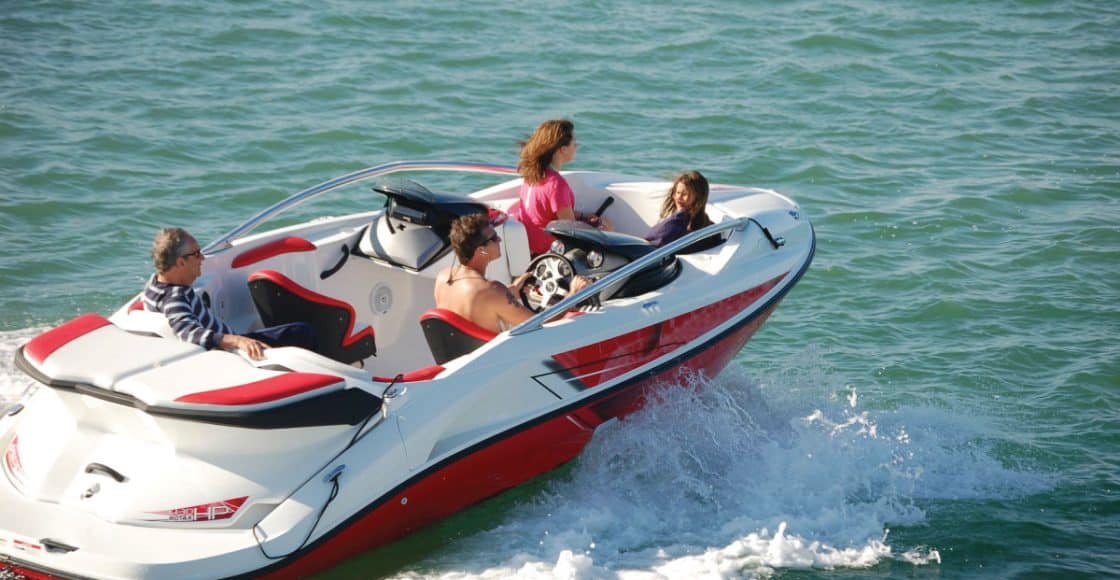
Small Boats: What Type is Right for You?

Table of Contents
Last Updated on August 17, 2023 by Boatsetter Team
When it comes to boats, sometimes “small” is a good thing. This is especially the case with our friend, the powerboat (under 16 feet in length) .
Here, we highlight the advantages and explain the disadvantages of owning a small powerboat. We’ll also look at some of your options when considering the various small boat types.
Pros of owning a small powerboat
Cons of owning a small powerboat.
Read all the way through and catch all Pro Tips .
List your boat & start earning an avg. of $20K yearly with Boatsetter
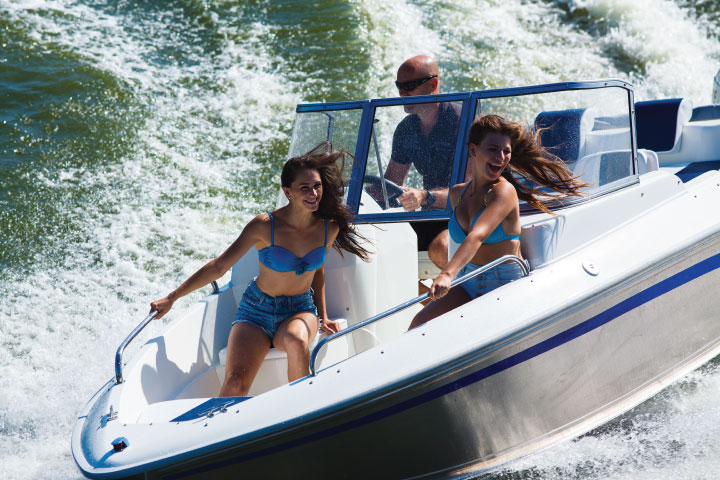
- Lower purchase price: When comparing boats of the same type, a smaller boat will almost always cost less than a bigger boat.
Pro Tip: This is not always the case because some brands command a premium price despite the model’s size. Take, for example, this small Boston Whaler , and it may cost more than a mid-size runabout by another brand.
- Lower insurance cost: Boat insurance premiums are based primarily on the boat’s value , so a lower-cost boat will cost less to insure than a bigger boat.
- Lower cost to operate: Fuel is the highest cost of operating any powerboat, and a small boat needs a small engine, which will use less fuel than a bigger boat.
- Easier to tow: Most boats under 16 feet in length weigh less than 5,000 pounds on a trailer and can be towed with a mid-size SUV, van, or compact truck. No need to invest in a monster truck!
- Easier to store: A small boat may fit in your garage, especially if the trailer has a swing-away tongue.
- Easier to handle on the water: If you’re a novice boater , a smaller boat may be easier to handle around the dock, easier to launch and load off the trailer, and generally less intimidating than a bigger boat.
READ MORE: Boat Rentals by Owners- Here’s What to Expect
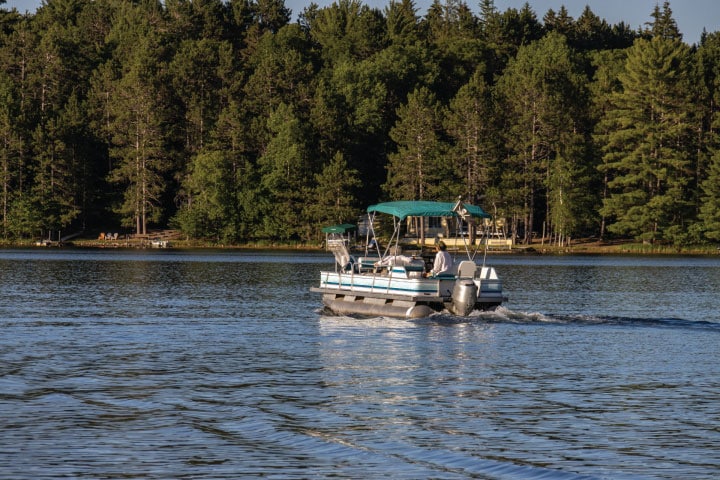
- Small boat = small crew : Seating and weight capacity will limit the number of people you can comfortably and safely have aboard. You’ll also have less room for coolers, tubes, and other gear.
- Fair weather boating: A small boat will not be comfortable if the water gets rough. Ideally, you’d use a small boat on a smaller lake or river less prone to stiff chop or big waves and wakes.
- Limited power & performance: You don’t expect to go fast in a small boat (with the exception of a PWC), if you’re interested in water sports, like tubing or wakeboarding, a small boat may not be the one.
Pro Tip: Pulling a big tube without a struggle usually requires at least a 150-hp outboard.
Interested in buying a small powerboat?
You’ll have many choices when considering a powerboat. Here are some of the most popular powerboats in sizes under 16 feet.
Pontoon boats : No small boat may offer more elbow room than a compact pontoon, such as the Lowe Ultra 160 Cruise and the classic Sun Tracker Bass Buggy 16 . Compact Sea Doo Switch pontoons feature jet propulsion. These boats are very stable, easy to handle, and can carry up to seven people.
Runabout boats: Also called a bow -rider, this is a great all-around family boat. Compact runabout models like the Bayliner 160 Bowrider and the Tahoe T16 are outboard-powered.
Deck boats: A deck boat offers a layout with more interior space than a runabout. There are a few examples in the under-16 class, most notably the Bayliner Element M15 .
Fishing boats : Most fishing boats in this size range will have rugged aluminum construction. Check out these fishing boat options:
- The Lund WC-16 (also offered in 12- and 14-foot lengths) uses a tiller-steer outboard, saving space and decreasing the price.
- The Tracker SuperGuide V-16 SC has a small console with remote steering.
- Compact aluminum bass boats like the Lowe Skorpion 16 have a mod-v hull shape, lower freeboard, and a casting deck .
Jet boats: A jet boat is propelled by a jet of water which allows it to power through shallow waters. Jet boats are also easy to maintain , agile, and a blast to drive. Check out the Scarab Jet 165 ID .
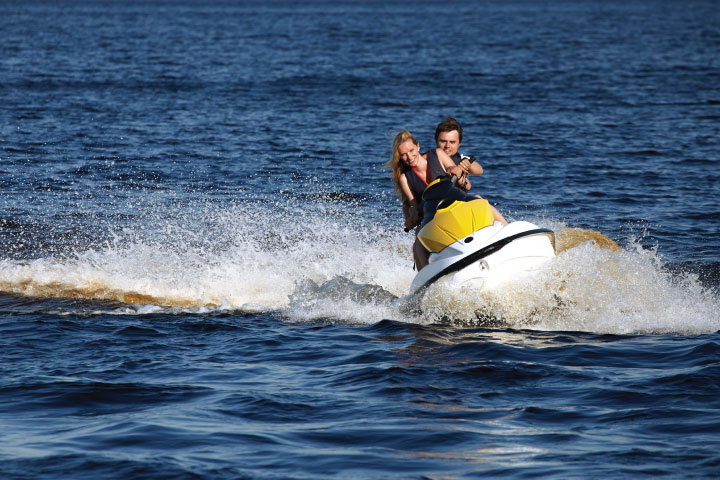
Personal watercraft (PWC): Top PWC models measure about 13 feet in length and can accelerate like a rocket to a top speed approaching 65 mph.
Pro Tip: Luxury models can be equipped with touring seats, audio systems, and GPS navigation, and there are specialized models designed for fishing and wake sports. Three-passenger models are the most popular, as they can be used as a tow sports vehicle in most states. Check out the PWC models at Sea Doo , Yamaha WaveRunner , or Kawasaki Jet Ski .
Utility boats: Most boats in this category are made from rugged aluminum, and may have a vee, mod-vee, or flat-bottom jon boat hull. The vee hull is more comfortable in choppy water, while the mod-vee and jon styles like the Crestliner Jon series draw very little water and are popular for rivers and shallow back-waters and marshes. These are great boats for hunting and fishing but typically offer very few creature comforts. The smallest examples may fit in the bed of a pickup truck.
Inflatable: Inflatable boats are rugged and can be easily stored in the off-season – just let out the air, and most soft-bottom models roll up into a carry case. Inflatable boats are offered in a very wide range of sizes and prices.
Pro Tip: Those with a rigid bottom (made of fiberglass), such as the West Marine RIB 330 offer more performance and better handling than soft-bottom models like the Beluga 14 .
There’s no rush in purchasing a boat. Taking your time and experimenting with different boat types, brands, and manufacturers will give you a better idea of the type of boat owner you want to become.
Take your time and browse through boat types , don’t forget to book to take out for a test cruise. Of course, we’ll be there for you once you buy a boat, too! List your boat for free on Boatsetter to offset boat ownership costs.
Boatsetter is a unique boat-sharing platform that gives everyone — whether you own a boat or you’re just renting — the chance to experience life on the water. You can list a boat , book a boat , or make money as a captain .

Charles Plueddeman is a self-employed writer and photographer based in Wisconsin. A staff editor and contributor to Boating Magazine since 1986, he is the author of its “Off My Dock” column. In the marine realm he specializes in engine technology and trailerable boats. His editorial work has appeared in many national publications, including Popular Mechanics, Men’s Journal, Playboy, Popular Science, Cycle World, and Harley-Davidson Enthuisast .
Browse by experience

Explore articles
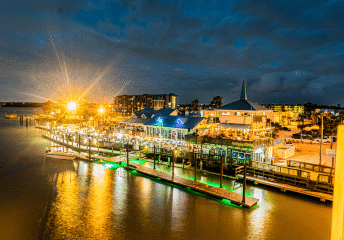
7 Best Tampa Restaurants on the Water to Get to By Boat

How to Clean a Boat
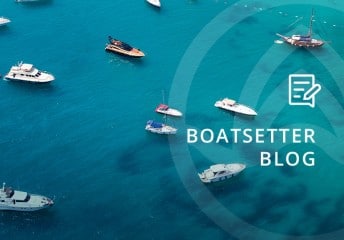
This Week in Miami: The Bacardi Cup & Sailing Week
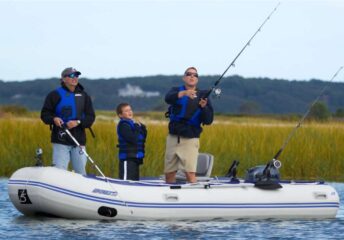
10 Cheap, Affordable Boats for 2024

10 Best Small Sailboats (Under 20 Feet)
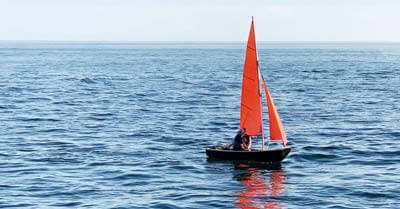
Last Updated by
Daniel Wade
December 28, 2023
Compact, easy to trailer, simple to rig, easy to maintain and manage, and affordable, the best small boats all have one thing in common: they offer loads of fun while out there on the water.
So whether you're on a budget or just looking for something that can offer ultimate daytime rides without compromising on safety, aesthetic sensibilities, alternate propulsion, and speed, the best small sailboats under 20 feet should be the only way to go.
Let's be brutally honest here; not everyone needs a 30-foot sailboat to go sailing. They come with lots of features such as electronics, entertainment, refrigeration, bunks, a galley, and even a head. But do you really need all these features to go sailing? We don't think so.
All you need to go sailing is a hull, a mast, rudder, and, of course, a sail. And whether you refer to them as daysailers, trailerable sailboats , a weekender sailboat, or pocket cruisers, there's no better way to enjoy the thrills of coastal sailing than on small sailboats.
There are a wide range of small boats measuring less than 20 feet available in the market. These are hot products in the market given that they offer immense thrills out on the sea without the commitment required to cruise on a 30-footer. A small sailboat will not only give you the feel of every breeze but will also give you the chance to instantly sense every change in trim.
In this article, we'll highlight 10 best small sailboats under 20 feet . Most models in this list are time-tested, easy to rig, simple to sail, extremely fun, and perfect either for solo sailing or for sailing with friends and family. So if you've been looking for a list of some of the best small sailboats , you've come to the right place.
So without further ado, let's roll on.
Table of contents
{{boat-info="/boats/hunter-15"}}
The Marlow-Hunter 15 is not only easy to own since it's one of the most affordable small sailboats but also lots of fun to sail. This is a safe and versatile sailboat for everyone. Whether you're sailing with your family or as a greenhorn, you'll love the Hunter 15 thanks to its raised boom, high freeboard, and sturdy FRP construction.
With high sides, a comfortable wide beam, a contoured self-bailing cockpit, and fiberglass construction, the Hunter 15 is certainly designed with the novice sailor in mind. This is why you can do a lot with this boat without falling out, breaking it, or capsizing. Its contoured self-baiting cockpit will enable you to find a fast exit while its wide beam will keep it steady and stable no matter what jibes or weight shifts happen along the way.
This is a small sailboat that can hold up to four people. It's designed to give you a confident feeling and peace of mind even when sailing with kids. It's easy to trailer, easy to rig, and easy to launch. With a price tag of about $10k, the Hunter 15 is a fun, affordable, and versatile boat that is perfect for both seasoned sailors and novices. It's a low-maintenance sailboat that can be great for teaching kids a thing or two about sailing.
Catalina 16.5
{{boat-info="/boats/catalina-16-5"}}
Catalina Yachts are synonymous with bigger boats but they have some great and smaller boats too such as Catalina 16.5. This is one of the best small sailboats that are ideal for family outings given that it has a big and roomy cockpit, as well as a large storage locker. Designed with a hand-laminated fiberglass sloop, the Catalina 16.5 is versatile and is available in two designs: the centerboard model and the keel model.
The centerboard model is designed with a powerful sailplane that remains balanced as a result of the fiberglass centerboard, the stable hull form, and the rudder. It also comes with a tiller extension, adjustable hiking straps, and adjustable overhaul. It's important to note that these are standard equipment in the two models.
As far as the keel model is concerned, this is designed with a high aspect keel as the cast lead and is attached with stainless steel keel bolts, which makes this model perfect for mooring or docking whenever it's not in use. In essence, the centerboard model is perfect if you'll store it in a trailer while the keel model can remain at the dock.
All in all, the Catalina 16.5 is one of the best small sailboats that you can get your hands on for as low as $10,000. This is certainly a great example of exactly what a daysailer should be.
{{boat-info="/boats/hobie-16"}}
There's no list of small, trailerable, and fun sailboats that can be complete without the inclusion of the classic Hobie 16. This is a durable design that has been around and diligently graced various waters across the globe since its debut way back in 1969 in Southern California. In addition to being durable, the Hobie 16 is trailerable, great for speed, weighs only 320 pounds, great for four people, and more importantly, offers absolute fun.
With a remarkable figure of over 100,000 launched since its debut, it's easy to see that the Hobie 16 is highly popular. Part of this popularity comes from its asymmetric fiberglass-and-foam sandwiched hulls that include kick-up rudders. This is a great feature that allows it to sail up to the beach.
For about $12,000, the Hobie 16 will provide you with endless fun throughout the summer. It's equipped with a spinnaker, trailer, and douse kit. This is a high-speed sailboat that has a large trampoline to offer lots of space not just for your feet but also to hand off the double trapezes.
Montgomery 17
{{boat-info="/boats/montgomery-17"}}
Popularly known as the M-17, The Montgomery 17 was designed by Lyle C. Hess in conjunction with Jerry Montgomery in Ontario, California for Montgomery Boats. Designed either with keel or centerboard models, the M-17 is more stable than most boats of her size. This boat is small enough to be trailered but also capable of doing moderate offshore passages.
This small sailboat is designed with a masthead and toe rail that can fit most foresails. It also has enough space for two thanks to its cuddly cabin, which offers a sitting headroom, a portable toilet, a pair of bunks, a DC power, and optional shore, and a proper amount of storage. That's not all; you can easily raise the deck-stepped mast using a four-part tackle.
In terms of performance, the M-17 is one of the giant-killers out there. This is a small sailboat that will excel in the extremes and make its way past larger boats such as the Catalina 22. It glides along beautifully and is a dog in light air, though it won't sail against a 25-knot wind, which can be frustrating. Other than that, the Montgomery 17 is a great small sailboat that can be yours for about $14,000.
Norseboat 17.5
{{boat-info="/boats/norseboat-17-5"}}
As a versatile daysailer, Norseboat 17.5 follows a simple concept of seaworthiness and high-performance. This small sailboat perfectly combines both contemporary construction and traditional aesthetics. Imagine a sailboat that calls itself the "Swiss Army Knife of Boats!" Well, this is a boat that can sail and row equally well.
Whether you're stepping down from a larger cruiser or stepping up from a sea kayak, the unique Norseboat 17.5 is balanced, attractive, and salty. It has curvaceous wishbone gaff, it is saucy, and has a stubby bow-sprit that makes it attractive to the eyes. In addition to her beauty, the Norseboat 17.5 offers an energy-pinching challenge, is self-sufficient, and offers more than what you're used to.
This is a small, lightweight, low-maintenance sailboat that offers a ticket to both sailing and rowing adventures all at the same time. At about 400 pounds, it's very portable and highly convenient. Its mainsails may look small but you'll be surprised at how the boat is responsive to it. With a $12,500 price tag, this is a good small sailboat that offers you the versatility to either row or sail.
{{boat-info="/boats/sage-marine-sage-17"}}
If you've been looking for a pocket cruiser that inspires confidence, especially in shoal water, look no further than the Sage 17. Designed by Jerry Montgomery in 2009, the Sage 17 is stable and should heel to 10 degrees while stiffening up. And because you want to feel secure while sailing, stability is an integral feature of the Sage 17.
This is a sailboat that will remain solid and stable no matter which part of the boat you stand on. Its cabin roof and the balsa-cored carbon-fiber deck are so strong that the mast doesn't require any form of compression post. The self-draining cockpit is long enough and capable of sleeping at 6 feet 6 inches.
The Sage 17 may be expensive at $25k but is a true sea warrior that's worth look at. This is a boat that will not only serve you right but will also turn heads at the marina.
{{boat-info="/boats/laserperformance-laser-sb3"}}
Having been chosen as the overall boat of the year for 2008 by the Sailing World Magazine, the Laser SB3 is one of the coolest boats you'll ever encounter. When sailing upwind, this boat will lock into the groove while its absolute simplicity is legendary. In terms of downwind sailing, having this boat will be a dream come true while it remains incredibly stable even at extraordinary speed.
Since its debut in 2004, the Laser SB3 has surged in terms of popularity thanks to the fact that it's designed to put all the controls at your fingertips. In addition to a lightweight mast, its T- bulb keel can be hauled and launched painlessly. For about $18,000, the Laser SB3 ushers you into the world of sports sailing and what it feels to own and use a sports boat.
{{boat-info="/boats/fareast-18"}}
As a manufacturer, Fareast is a Chinese boat manufacturer that has been around for less than two decades. But even with that, the Fareast 18 remains a very capable cruiser-racer that will take your sailing to the next level. In addition to its good looks, this boat comes with a retractable keel with ballast bulb, a powerful rig, and an enclosed cabin.
Its narrow design with a closed stern may be rare in sailboats of this size, but that's not a problem for the Fareast 18. This design not only emphasizes speed but also makes it a lot easier to maintain this boat. Perfect for about 6 people, this boat punches above its weight. It's, however, designed to be rigged and launched by one person.
This is a relatively affordable boat. It's agile, safe, well-thought-out, well built, and very sporty.
{{boat-info="/boats/chuck-paine-paine-14"}}
If you're in the market looking for a small sailboat that offers contemporary performance with classic beauty, the Paine 14 should be your ideal option. Named after its famous designer, Chuck Paine, this boat is intentionally designed after the classic Herreshoff 12.5 both in terms of dimensions and features.
This is a lightweight design that brings forth modern fin keel and spade rudder, which makes it agile, stable, and faster. The Paine 14 is built using cold-molded wood or west epoxy. It has varnished gunnels and transoms to give it an old-time charm. To make it somehow modern, this boat is designed with a carbon mast and a modern way to attach sails so that it's ready to sail in minutes.
You can rest easy knowing that the Paine 14 will not only serve you well but will turn heads while out there.
{{boat-info="/boats/wd-schock-lido-14"}}
Many sailors will attest that their first sailing outing was in a Lido 14. This is a classic sailboat that has been around for over four decades and still proves to be a perfect match to modern small boats, especially for those still learning the ropes of sailing.
With seating for six people, the Lido 14 can be perfect for solo sailing , single-handed sailing, or if you're planning for shorthanded sailing. While new Lido 14 boats are no longer available, go for a functional used Lido 14 and you'll never regret this decision. It will serve you well and your kids will probably fall in love with sailing if Lido 14 becomes their main vessel during weekends or long summer holidays.
Bottom Line
There you have it; these are some of the best small sailboats you can go for. While there are endless small sailboats in the market, the above-described sailboat will serve you right and make you enjoy the wind.
Choose the perfect sailboat, invest in it, and go out there and have some good fun!
Related Articles
I've personally had thousands of questions about sailing and sailboats over the years. As I learn and experience sailing, and the community, I share the answers that work and make sense to me, here on Life of Sailing.
by this author
Best Sailboats
Most Recent

What Does "Sailing By The Lee" Mean?
October 3, 2023

The Best Sailing Schools And Programs: Reviews & Ratings
September 26, 2023
Important Legal Info
Lifeofsailing.com is a participant in the Amazon Services LLC Associates Program, an affiliate advertising program designed to provide a means for sites to earn advertising fees by advertising and linking to Amazon. This site also participates in other affiliate programs and is compensated for referring traffic and business to these companies.
Similar Posts

Affordable Sailboats You Can Build at Home
September 13, 2023

Best Small Sailboats With Standing Headroom

Best Bluewater Sailboats Under $50K
Popular posts.

Best Liveaboard Catamaran Sailboats

Can a Novice Sail Around the World?
Elizabeth O'Malley
June 15, 2022

4 Best Electric Outboard Motors

How Long Did It Take The Vikings To Sail To England?

10 Best Sailboat Brands (And Why)
December 20, 2023

7 Best Places To Liveaboard A Sailboat
Get the best sailing content.
Top Rated Posts
Lifeofsailing.com is a participant in the Amazon Services LLC Associates Program, an affiliate advertising program designed to provide a means for sites to earn advertising fees by advertising and linking to Amazon. This site also participates in other affiliate programs and is compensated for referring traffic and business to these companies. (866) 342-SAIL
© 2024 Life of Sailing Email: [email protected] Address: 11816 Inwood Rd #3024 Dallas, TX 75244 Disclaimer Privacy Policy
Small boats: Small boats: A comprehensive guide to choosing the ideal vessel
- Small boats: A comprehensive guide to choosing the ideal vessel
Are you an adventure lover who wants to explore the high seas? Or do you have a deep-rooted love of fishing and want to enjoy a quiet day on the lake. Whatever your reason, investing in a small boat can transform your water adventure. In this article, we'll delve into the world of small boats, exploring their different types, features, and factors to consider when making your purchase. Join us on a journey to find the perfect small boat that fits your needs and preferences.
Small boats offer a variety of options for recreational activities on the water. From fishing and recreational cruising to water sports and exploring hidden coves, these compact watercraft provide unparalleled versatility and freedom. Whether you prefer the tranquility of paddling or the thrill of gliding through the waves with a powerboat, there's a small boat waiting to become your perfect companion.
Types of small boats
Small fishing boats.
Small fishing boats are designed with features and amenities tailored specifically for fishermen. They offer stability, manoeuvrability and plenty of storage space for all your fishing equipment. These boats come in a variety of configurations, including bass boats, jon boats and boat boats, so you can choose one that suits your fishing style and environment.
Small motor boats
Small motor boats, also known as powerboats, provide the convenience of an engine for propulsion. They are ideal for covering longer distances or when speed is a priority. Whether you opt for a small motorboat or an outboard motorboat, these vessels offer an exciting experience on the water and allow you to reach your destination quickly.
Small open boats
Small open boats, such as dinghies and rowboats, are often used for recreational cruising and exploring shallow waters. They are lightweight, easy to handle and ideal for solo adventures or intimate outings with a partner. These boats offer a calm and meditative experience that allows you to connect with nature while gliding through calm waters.
Small skiffs
Skiffs are versatile small boats that can be used for a variety of purposes, including fishing, transportation and leisure activities. They usually have a flat bottom, which increases stability and allows for navigation in shallow waters. Skiffs are known for their simplicity and durability, making them a popular choice among boating enthusiasts.
Miniature boats
Often referred to as toy boats or model boats, miniature boats satisfy everyone's inner child. These small replicas of real boats are perfect for displaying, collecting, or simply for nostalgic fun. Although not suitable for real water activities, miniature boats have a special charm and bring joy to enthusiasts of all ages.
Factors to consider when choosing a small boat
When it comes to buying a small boat, there are a few key factors that should guide your decision. Let's explore these factors in detail so you can make an informed decision:
1. Size and capacity
Consider the size of the boat based on the number of people you intend to accommodate and the activities you intend to engage in. Make sure the boat has sufficient seating capacity and enough room for equipment, refrigeration and other necessities.
2. Hull material
The hull material determines the durability, weight and performance of the boat. Common hull materials for small boats include fiberglass, aluminum, and wood. Each material has advantages and disadvantages, so choose one that fits your needs and preferences.
3. Stability and manoeuvrability
Stability and maneuverability are essential for a pleasant and safe boating experience. Look for a boat with a stable hull structure and features such as keels or pontoons that improve balance. Consider the maneuverability of the boat in different water conditions, as this will affect your ability to navigate and control the vessel effectively.
4. Storage and transportation
Evaluate the boat's storage options, including deck compartments, fishing rod holders, and live tanks. In addition, consider the weight and size of the boat in relation to your transportation options. Make sure it can be easily transported to and from the water without causing undue inconvenience.
5. Engine power and fuel consumption
If you opt for a small powerboat, carefully consider engine power and fuel efficiency. The engine should provide sufficient power for your needs while being fuel efficient to minimize operating costs and reduce environmental impact.
Read top articles in our magazine on topics such as sailing, cruising tips and destinations .
Fishing on a small boat: Tips and techniques
Fishing from a small boat can be a rewarding and memorable experience. Here are some tips and techniques to help you enhance your fishing adventures:
1. Basic Small Boat Fishing Equipment
Make sure you have the necessary fishing equipment, including fishing rods, reels, tackle boxes and safety equipment. Be sure to bring a fish finder or GPS device so you can locate fish and navigate efficiently.
2. Safety precautions
Prioritize safety by wearing life jackets, having a first aid kit on board, and familiarizing yourself with boating safety regulations. Check weather conditions before setting sail and avoid taking to the water during storms or rough seas.
3. Choosing the right fishing spots
Research and explore the different fishing spots in your area to find the ones that offer the best chance of a successful catch. Consider factors such as water depth, vegetation and underwater structures that attract fish.
4. Best practices for catching and releasing fish
Follow catch-and-release principles when fishing responsibly. Handle fish with care, minimize stress and release them back into the water immediately. This helps conserve fish stocks and ensures sustainable fishing practices.
5. Maintenance and cleaning
Regularly maintain and clean your small boat to prolong its life and maintain its performance. After each use, rinse the boat and engine with clean water, check for signs of wear or damage, and perform routine maintenance tasks as recommended by the manufacturer.
Buying a small boat: New vs. used: buying a new boat
When buying a small boat, you have the option of buying new or used. Consider the following advantages and disadvantages to make an informed decision:
1. Advantages and disadvantages of new small boats
Pros: 1. Small boats are suitable for small boats that are equipped with the new small boat navigation system:
- Latest features and technology
- Warranty and after-sales support
- Customization options
- No previous wear and tear or damage
Cons: Unsatisfactory condition that could be considered the worst in life:
- Higher initial cost
- Declining value over time
- Limited availability of some models
2. Advantages and disadvantages of used small boats
- Lower initial cost
- Wide range of options
- Potential room for negotiation
- Immediate availability
Disadvantages:
- Greater risk of wear and tear or damage
- Limited or no warranty coverage
- May require maintenance or repairs
3. Tips for inspecting a used small boat
When considering the purchase of a used small boat, perform a thorough inspection to ensure its condition and performance. Look for signs of wear, inspect the engine, test the boat in the water if possible, and ask for maintenance records and any available warranties.
4. Warranty and financing options
If you decide to buy a new small boat, find out about warranty coverage and understand the terms. In addition, research financing options to determine the best approach for your budget and financial situation.
5. Where to buy small boats
Small boats can be purchased from a variety of sources, including boat dealers, online marketplaces and private sellers. Research reputable dealers, read customer reviews and compare prices to find the best deal.
Small Boat Engines: outboard motors and more
The engine is the heart of any small powerboat. Let's explore the different types of small boat engines and their features:
1. Outboard motors for small boats
Outboard motors are the most common type of motor used in small boats. They are portable, easy to maintain and offer excellent manoeuvrability. Outboard motors can be folded down or completely removed, allowing for convenient storage and maintenance.
2. Deck motors and radial engines
Deck motors are usually found in larger boats, but can also be used in some models of small boats. They are installed inside the hull and provide a smoother ride due to the weight distribution of the engine. Boat drives combine inboard engines with outboard propulsion and offer a balance between power and manoeuvrability.
3. Electric motors and alternative propulsion systems
Electric motors are increasingly popular for small boats due to their environmental friendliness and quiet operation. These engines are battery powered and offer a clean and efficient alternative to traditional fuel-powered engines. In addition, alternative propulsion systems such as solar-powered engines and paddle-wheel drives are becoming increasingly popular among environmentally-minded boaters.
4. Maintenance and problem solving
Regardless of the type of engine chosen, regular maintenance is essential to ensure optimum performance and longevity. Follow the manufacturer's instructions for maintenance tasks such as oil changes, fuel line checks and spark plug cleaning. Familiarize yourself with common troubleshooting techniques so you can address any minor problems.
5. Upgrading a small boat engine
If you want to increase the performance of your small boat, upgrading the engine can be a worthwhile investment. Consult experts or boat mechanics to determine the compatibility and feasibility of an engine upgrade based on your boat's specifications.
Small boats offer endless opportunities for adventure, relaxation and exploration on the water. By understanding the different types of small boats, considering the essential factors in your purchase, and choosing the right engine, you can embark on unforgettable journeys and create memorable moments. Whether you're fishing in a calm lake or cruising along a scenic coastline, your small boat will be your gateway to new water experiences.
So what are you waiting for? Browse our range of charter boats and head to some of our favourite sailing destinations .
FAQ Selection of the best small boats
How much does a small boat cost?
The price of a small boat can vary depending on its size, features and condition. Prices can range from a few thousand dollars for basic models to tens of thousands of dollars for more specialized boats.
Do I need a licence to operate a small craft?
The requirements for a small craft licence vary depending on location. Check with your local boating authority for specific regulations and licensing requirements in your area.
Can I use a small boat for water sports?
Yes, many small boats are suitable for water sports such as tubing, wakeboarding and water skiing. Make sure the boat has enough power and stability to safely support these activities.
How often should I service my small boat engine?
We recommend following the manufacturer's instructions for engine maintenance. Regular servicing, including oil changes, filter changes and inspections, should be performed at recommended intervals or according to the number of hours of operation.
Can I store a small boat in my garage?
Depending on the size of your boat and the dimensions of your garage, it is possible to store a small boat in the garage. However, make sure you have enough space and consider any local regulations regarding boat storage.
Discover the Best Types of Small Boats for Every Water Adventure
In the realm of miniature vessels, a unanimous chorus sings the praises of small boats. These compact aquatic conveyances hold sway with a multitude of compelling arguments .
- Initially , their allure stems from their cost-effectiveness, offering a wallet-friendly gateway to the aqueous wilderness.
- Secondly , their unparalleled ratio of time spent afloat to maintenance time sets them apart from their larger counterparts.
- Thirdly , their lightweight design and portability make them effortlessly reachable, truck-fittable, and stowable in remote alcoves.
- Lastly , they serve as exceptional tutors for honing boat handling proficiency, whether in the hands of the youthful or the mature; skills cultivated in small vessels readily translate to their larger brethren.
Amidst this favorable backdrop, the greatest appeal of small boats lies in the abundance of diverse options available. A cornucopia of small boat types caters to an array of aquatic activities . Even those with substantial vessels often keep a small counterpart on standby for specific tasks or when the grandiose boat's logistics prove daunting.
Which variety of small boats aligns with your aspirations ? The ensuing guide categorizes them into a dozen distinct genres, encompassing rowing dinghies, sailing boats, kayaks, and petite powerboats, to name a few.
📢Read also: Best Liveaboard Boats to Live On Full-Time
Types of Small Boats

Defining a precise threshold for small boats remains a subjective endeavor. However, consensus typically pegs them at under 30 feet in length and, in some circles, considerably shorter . Your ideal choice among small boats hinges on the intended aquatic pursuits and launch locations. Herein, an overview of the fundamental small boat types awaits your exploration.
Flat-Bottomed Jon Boats

Characterized by their aluminum construction, flat hulls, squared bows, outboard engines, and bench seating, Jon boats emerge as uncomplicated and economical options. Their simplicity extends to ease of launching, loading, and maintenance . The cost of the engine bolsters the affordability of these boats.
The Versatile Skiff

Skiffs, occupying the midrange in cost and complexity, beckon those seeking simplicity at a reasonable price. Typically featuring uncomplicated hulls, outboard engines, and seating, skiffs may sport center console helm stations in contemporary iterations . Maneuvering a boat proves relatively straightforward, with minimal maintenance requirements, and their compact size facilitates diverse launch locations.
Diverse Dinghies

The term " dinghy " encompasses various vessels, including sailboat racing classes. Dinghies generally measure up to 10 feet, though sail-equipped variants may extend to 15 feet or more. They derive propulsion from sails, motors, oars, or paddles and boast varied materials, such as fiberglass, aluminum, wood, or inflatable construction. Some serve as tenders for larger vessels, enabling access to shallow waters and shores .
Inflatable Options

Inflatable boats come in two primary forms. The first type is entirely inflatable and collapsible, allowing for convenient storage within larger vessels . The second variant combines a rigid fiberglass hull with inflatable sides. Inflatables span from 6 to over 40 feet, often serving as tenders for sailboats. Their versatility makes them adaptable to a range of scenarios.
Lightweight Aluminum Fishing Boats

Aluminum fishing boats excel in practicality, offering lightweight construction, ease of transport, and minimal upkeep. They typically cost less than their counterparts and exhibit commendable fuel efficiency . Lengths vary from 8 to 24 feet, with shorter models resembling Jon boats and longer versions boasting sophistication and speed.
💥See also: Best Catamaran Fishing Boat Brands 2024
Pontoons Boats

Pontoon boats come in diverse sizes and shapes, from compact fishing pontoons to performance-oriented cruisers. Ranging from 15 to 30 feet, they flaunt a spacious, flat profile accommodating numerous passengers . Affordability, easy trailering, and launch capabilities enhance their appeal.
👀Look at this: 12 Best Pontoon Boat Brands for Your Money in 2024

Canoes endure as a cherished traditional choice, celebrated for user-friendliness, low maintenance, and portability. These paddle-powered vessels navigate various shallow waters and typically accommodate multiple passengers . Canoes adopt diverse shapes, catering to speed enthusiasts, leisurely cruisers, and avid anglers alike.
The Modern Appeal of Kayaks

Modern kayaks garner popularity for many of the same reasons as canoes. Designed primarily for one or two occupants, kayaks propel through water with double-bladed paddles. Some feature enclosed cockpits, distinct from open-canoe designs . Innovations include foot pedal propulsion and submerged fins for efficient navigation.
Jet Boats for Thrills

Jet boats come to the fore for enthusiasts seeking exhilarating speed and maneuverability. Ranging from 14 to 24 feet, these vessels prioritize velocity and excitement . Jet engines generate thrust by directing high-pressure water through a nozzle, with options for both inboard and outboard configurations.
Personal Watercraft: Compact and Speedy

Personal watercraft, often known by brand names like Jet Ski, represent some of the smallest and swiftest boats available. Designed for one or two occupants, they zip across the water's surface at impressive speeds . Available in sit-down and stand-up variations, these water bikes and water scooters offer a broad selection from various manufacturers.
Deck Boats: Space and Power

Among the larger small boats, deck boats stretch up to 26 feet, affording ample room for passengers and gear. Their open deck layout , forward and aft seating , and powerful engines cater to family outings and recreational activities on the water.
Bowriders: Versatile Watercraft

Bowrider boats, while occasionally extending beyond 30 feet, offer smaller versions measuring under 20 feet . Featuring V-shaped hulls for wave-cutting efficiency, they excel in maneuverability and adapt to diverse aquatic settings, accommodating various activities.
🚨You may be interested in: 12 Best Bowrider Boat Brands to Buy for Your Money
Types of Small Motorboats

Small motorboats, collectively known as cruisers and runabouts, encompass various powerboats . These boats may employ inboard or outboard motors, with representations like bowriders, deck boats, and jet boats.
Types of Small Sailing Boats

Small sailboats, usually under 25 feet long, embrace masts, rudders, and sails. Varieties include daysailers, small sloops, " cat " rig boats, and multihulls with two or three hulls for stability. Expect the possibility of a lively journey when the wind picks up.
⚡️Another article: Small Sailboat Types: Your Guide to the Perfect Vessel
Types of Small Fishing Boats

While most small boats can serve as fishing vessels, aluminum fishing boats and jon boats are especially well-suited for anglers. Their versatility extends to diverse waters, including narrow inlets, bays, flats, and shallow shores . From kayaks to skiffs, these boats can come equipped with angling-specific features.
👀Look at this: The Best Small Fishing Boat Brands
Types of Small Boats for Lakes

Selecting the ideal small boat for lake navigation hinges on seamless travel around the lake . Options span from manually powered canoes and kayaks to larger powerboats like deck boats, tailored to match the lake's wave conditions and size.
🚨You may be interested in: Exploring the Most Popular Types of Lake Boats
Types of Small River Boats

River boating mandates constant downstream drift, necessitating motor-equipped boats for returning upstream. Small river boats, including Jon , pontoon , deck , and jet boats , accommodate this requirement, enabling fluid river exploration.
In embracing the diversity of small boats, one can embark on aquatic adventures that align with their desires and the water's character. The world of petite vessels beckons, promising memorable journeys on the open water .
Was this page helpful?
Save my name, email, and website in this browser for the next time I comment.
Boat Boat Go
Love Boat Party Life

7 Most Common Types of Small Boats: A Comprehensive Guide
Small boats are a popular choice for leisure boating and fishing enthusiasts. With a variety of types available on the market, it can be challenging to determine which one is the best fit for your needs. In this article, we will explore the seven most common types of small boats and their features.
Table of Contents
Understanding Small Boats
Small boats are typically defined as boats that are less than 26 feet in length. They are perfect for activities such as fishing, leisure boating, water sports, and transportation. Small boats come in various types, each with its unique features and benefits. Here are some of the most common types of small boats:
Fishing Boat
Fishing boats are designed to help anglers catch fish. They come in different sizes and shapes, but they all have features that make fishing easier, such as rod holders, livewells, and fish finders. Some fishing boats are designed for specific types of fishing, such as freshwater or saltwater fishing.
Dinghy Boat
Dinghy boats are small, lightweight, and easy to maneuver. They are typically used as tenders for larger boats or for short trips around the harbor. Dinghies can be inflatable or rigid and are usually powered by an outboard motor.
Deck boats are ideal for families and groups of friends who want to spend time on the water. They have a wide, flat deck that provides plenty of space for seating, sunbathing, and water sports. Deck boats are also equipped with a swim platform and ladder for easy access to the water.
PWC or Personal Watercraft Boat
PWCs, also known as jet skis, are small, agile boats that are perfect for water sports such as wakeboarding and water skiing. They are designed to be ridden standing up and are powered by a jet propulsion system.
Pontoon Boat
Pontoon boats are great for leisure boating and entertaining. They have a flat deck that sits on top of two or three pontoons, which provide stability and buoyancy. Pontoon boats are equipped with comfortable seating, a swim platform, and a ladder for easy access to the water.
Jet boats are designed to be fast and agile. They are powered by a jet propulsion system that allows them to navigate shallow waters and perform tight turns. Jet boats are perfect for water sports such as wakeboarding and water skiing.
Runabouts, also known as bowriders, are versatile boats that can be used for fishing, leisure boating, and water sports. They have an open bow area that provides extra seating and a spacious cockpit for the driver and passengers. Runabouts are usually powered by an outboard motor.
Inflatable Boats
Inflatable boats have become increasingly popular in recent years due to their portability and ease of storage. They are lightweight, easy to inflate, and can be deflated for convenient storage. Inflatable boats are also relatively inexpensive compared to traditional boats, making them a great option for those on a budget.
Dinghies are small, inflatable boats that are typically used as a tender for larger boats. They are usually made of PVC or Hypalon and can be inflated using a foot pump or an electric pump. Dinghies are perfect for short trips to shore or exploring shallow waters. They are also great for fishing and can be easily transported in the trunk of a car.
Tenders are similar to dinghies but are usually larger and have more features. They are designed to transport people and goods to and from a larger boat or shore. Tenders can be used for water sports such as wakeboarding and water skiing, and they are also great for fishing. They can be powered by an outboard motor or rowed.
Inflatable Kayaks
Inflatable kayaks are a great option for those who want to explore calm waters. They are lightweight and easy to transport, making them perfect for camping trips or day trips to the lake. Inflatable kayaks are available in single and double versions, and they can be inflated using a foot pump or an electric pump. They are also relatively inexpensive compared to traditional kayaks.
Aluminum Fishing Boats
Aluminum fishing boats are a popular choice among anglers due to their durability, lightweight, and low maintenance requirements. They are also less expensive compared to fiberglass boats.
One of the most established brands in aluminum boats is Lund Boats. With over 70 years of experience in building watercraft, Lund offers a full range of aluminum models suitable for any fishing application. The Lund Alaskan is a popular model that comes in various sizes and features a deep-V hull design, making it ideal for fishing in rough waters.
Another popular aluminum boat brand is Crestliner. The Crestliner XFC 189 is a top choice for crappie anglers. It features 23-gallon livewells with removable bait buckets in both the bow and stern, making it easy to keep bait alive and fresh.
Tracker Boats is also a well-known brand in the aluminum boat market. The Tracker Pro Guide V-16 SC is a versatile boat that can be used for both fishing and family outings. It features a deep-V hull design, a spacious cockpit, and plenty of storage compartments.
When it comes to aluminum boats, Lowe Boats is another brand worth considering. The Lowe FM 1625 SC is a popular model that features a spacious interior, a durable hull, and a comfortable ride. It also has a large livewell and plenty of storage space for fishing gear.
Bass boats are specialized boats designed for anglers who want to fish for bass. They are typically small boats that are fast, maneuverable, and equipped with features that make them ideal for bass fishing. Bass boats come in a variety of sizes and designs, but they all share some common features.
One of the most important features of a bass boat is its shallow draft. This allows the boat to navigate in shallow waters where bass tend to congregate. Bass boats are also designed to be fast and agile, which makes it easier to chase after schools of bass that are on the move.
Another important feature of a bass boat is its fishing equipment. Bass boats are equipped with features such as rod holders, live wells, and fish finders that make it easier for anglers to catch bass. Many bass boats also have specialized seating arrangements that allow anglers to fish from different positions on the boat.
Bass boats are typically made of fiberglass or aluminum. Fiberglass boats are more expensive but offer better performance and durability. Aluminum boats are less expensive but are more prone to damage from rocks and other obstacles.
Some of the most popular bass boat brands include Nitro, Ranger, Skeeter, and Bass Cat. Each brand offers a variety of different models with different features and price points. When choosing a bass boat, it is important to consider factors such as size, price, and features to find the best boat for your needs.
Bowriders are one of the most popular types of small boats, designed for recreational activities like water sports, fishing, and cruising. They are typically 17 to 30 feet in length and have an open bow area with seating, making them perfect for socializing and enjoying the sun and water.
Bowriders are versatile boats that can be used for a range of activities, from fishing to water skiing. They are perfect for families and groups of friends who want to spend time on the water together. Bowriders have a number of advantages over other types of boats, including:
- Versatility: Bowriders can be used for a variety of activities, making them a great all-around boat.
- Comfort: Bowriders have plenty of seating and storage space, making them comfortable for long days on the water.
- Affordability: Bowriders are generally less expensive than other types of boats, making them a great choice for first-time boat buyers.
Some of the most popular bowriders on the market today include:
- Sea Ray SLX 350: This high-end bowrider is known for its sleek design, high-tech features, and impressive performance.
- Yamaha SX210: This affordable bowrider is perfect for families and groups of friends who want to enjoy the water without breaking the bank.
- Bayliner VR6: This versatile bowrider is perfect for water sports, fishing, and cruising, and is available at an affordable price point.
Catamarans are boats that have two hulls instead of one, which makes them more stable and faster than monohull boats. They are popular among sailors and boaters who want to enjoy a comfortable and smooth ride. There are two main types of catamarans: sailing catamarans and power catamarans.
Sailing Catamarans
Sailing catamarans are designed for sailing and are often used for cruising, racing, and day sailing. They are faster than monohull boats and can sail closer to the wind. They are also more stable, which makes them a popular choice for people who suffer from seasickness. Sailing catamarans come in different sizes and styles, from beach catamarans to cruising cats to high-performance catamarans.
One advantage of sailing catamarans is their spaciousness. They have a wide beam, which means more room for living space and storage. They also have two hulls, which means two separate cabins, making them perfect for families or groups of friends. Sailing catamarans are also easier to handle than monohull boats, as they have two engines and two rudders.
Power Catamarans
Power catamarans are designed for speed and comfort. They are often used for fishing, cruising, and day trips. They are faster than monohull boats and more fuel-efficient, which makes them a popular choice for people who want to cover a lot of distance in a short amount of time. Power catamarans come in different sizes and styles, from small fishing boats to luxury yachts.
One advantage of power catamarans is their stability. They have a wide beam, which means they are less likely to roll in rough seas. They also have a shallow draft, which means they can navigate in shallow waters. Power catamarans are also more spacious than monohull boats, with more room for living space and storage.
In conclusion, small boats are a great way to enjoy the water and have fun. There are many different types of small boats to choose from, each with its own unique features and benefits. Whether you are looking for a fishing boat, a personal watercraft, or a deck boat, there is sure to be a small boat that meets your needs.
Related posts:
- The Best Sail Types for Different Boating Conditions and Uses: A Comprehensive Guide
- Sail Material Options for Boats: A Comprehensive Guide
- The Future of Boat Sails: Exploring Innovations and Advancements in Design and Technology
- Essential Tips for Taking Your Dog Boating: Ensuring a Safe and Fun Trip
Terms and Conditions - Privacy Policy
Small Yacht: Essential Buying Guide for New Owners
The world of yachting has seen a steady rise in popularity. With that has come a growing interest in small yachts.
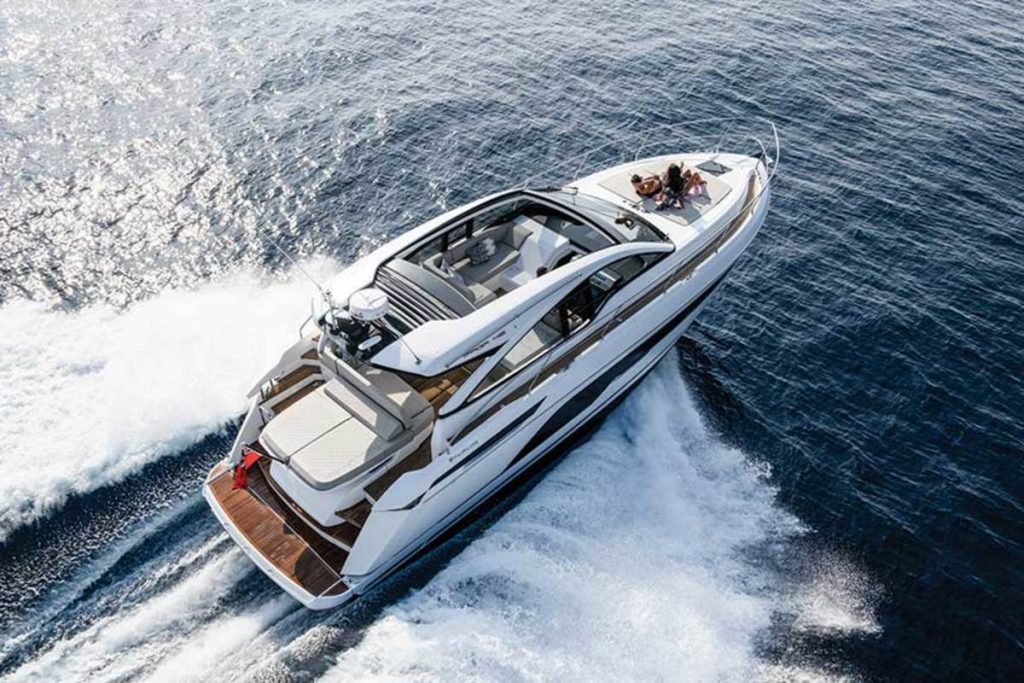
These vessels, often referred to as mini yachts or small luxury yachts, provide an accessible and versatile option for those looking to venture into the nautical lifestyle. Small yachts range from about 30 to 65 feet in length. They cater to a variety of needs, blending luxury aesthetics with the functionality and maneuverability of compact marine vessels.
Understanding the unique characteristics of small yachts is essential for potential buyers and enthusiasts. Their design and construction prioritize space efficiency and creativity. This enables a comfortable living experience aboard, without sacrificing performance and handling capabilities.
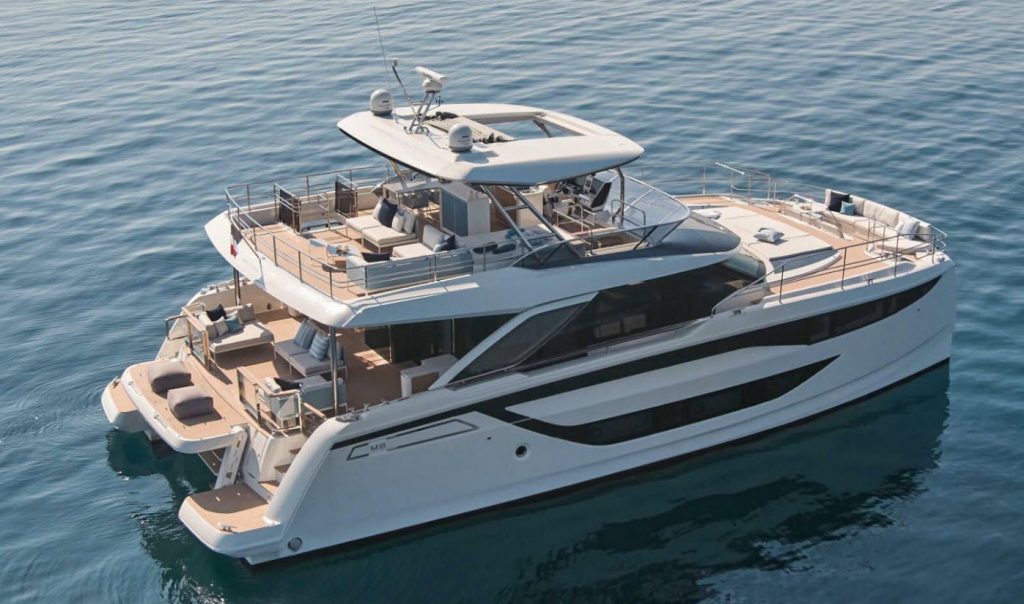
Therefore, it's crucial to examine factors such as yacht size, layout, amenities, fuel efficiency, and sailing range when exploring the market for small luxury yachts.
Key Takeaways
- Small yachts provide a versatile and accessible option for exploring the nautical lifestyle.
- Design and construction balance luxury aesthetics with functionality and maneuverability.
- Essential factors to consider include size, layout, amenities, fuel efficiency, and sailing range.
Understanding Small Yachts
Defining Small Yachts
Small yachts, also known as mini yachts, are vessels designed to offer the luxury and amenities of a superyacht in a more compact and manageable size. These yachts typically range from 20 to 60 feet in length, which is much more modest when compared to the vast size of superyachts 1 .
Although smaller in size, these yachts still boast a variety of features and can include a range of models, from motor yachts to sailing yachts.
Small Yachts vs. Superyachts
The differences between small yachts and superyachts are not just about size. Superyachts tend to offer more extravagant amenities, such as onboard cinemas, helipads, and multiple swimming pools. On the other hand, small yachts focus on providing a comfortable and luxurious experience while being more budget-friendly and easier to handle 2 .
Here are some key differences between small yachts and superyachts:
| Features | Small Yachts | Superyachts |
|---|---|---|
| Size | 20-60 feet | 100+ feet |
| Amenities | Basic to moderate luxury | Ultra-luxurious |
| Handling | Easier to maneuver | Requires crew |
| Price | $20,000 to $500,000 | $10 million+ |
Types of Small Yachts
There are two primary types of small yachts: motor yachts and sailing yachts. Each type offers unique features and advantages depending on the owner's preferences and intended use.
- Motor Yachts : These mini yachts are powered by engines, making them ideal for those who prioritize speed and convenience. Motor yachts often come with more creature comforts and can reach destinations quickly 9 .
- Sailing Yachts : Sailing yachts rely on wind power, offering a more traditional and eco-friendly sailing experience. They provide a sense of adventure and connection with the sea while still offering a range of comfort features 10 .
Both motor and sailing yachts can be further classified into various subcategories, such as powerboats and sailing catamarans, each with its own unique characteristics.
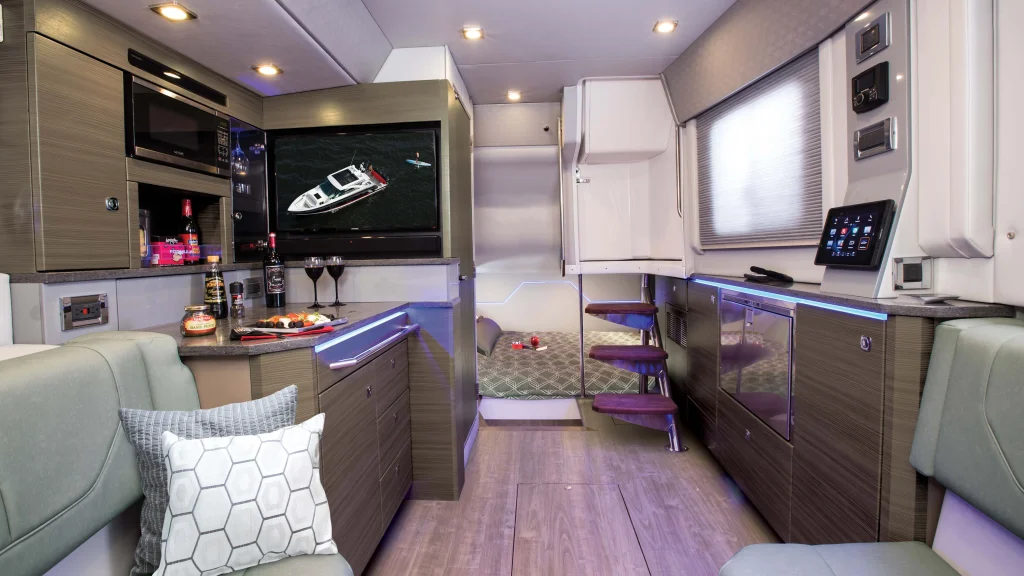
- Mini Yacht Buying Guide 2023 ↩ ↩ 2
- Small & Mini Yachts for Sale ↩ ↩ 2
- Superyacht Size Categories ↩
- Small Yacht: Luxurious Vessels for Leisure & Adventure ↩
- Luxury Superyacht Amenities ↩
- Superyacht Crew Requirements ↩
- Small Yacht Price Range ↩
- Superyacht Prices ↩
- Motor Yacht vs. Sailing Yacht ↩
- Advantages of Sailing Yachts ↩
Design & Construction
Hull Design and Material
When it comes to the design and construction of small yachts, hull design and material selection are of utmost importance. Most small yacht builders, such as Small Trimaran Design , focus on creating efficient and stable hull designs. These can be found in various forms, such as monohulls and multihulls.
Various materials can be used in the construction of yacht hulls. Common options include wood, steel, aluminum, and composites like fiberglass, GRP (Glass Reinforced Plastic), and carbon fiber . The choice of material can have a significant impact on the yacht's performance, durability, and maintenance requirements.
Deck Layout and Features
A well-designed deck layout contributes greatly to the comfort and functionality of a small yacht.
Luxury yacht builders, such as Burgess and Fraser , pay special attention to optimizing deck space for both practical and aesthetic purposes.
Key features often found on small yachts include:
- Cabins : Depending on the size of the yacht, there may be one or more cabins for sleeping, typically offering a comfortable and cozy environment.
- Outdoor living : Designers strive to maximize outdoor living spaces, such as lounge areas and sun decks, allowing passengers to enjoy the surroundings and fresh air.
- Coachroof : A raised section of the deck, the coachroof often houses the entrance to the yacht's interior and provides additional headroom below deck.
- Interiors : Small yacht interiors can be designed with efficient use of space, incorporating luxury finishes and furniture to create a comfortable and stylish atmosphere.
Some yachts even make use of advanced materials like foam in their construction, which can offer benefits in terms of weight reduction and insulation.
Performance and Handling
Sailing Performance
Small yachts are known for their agility and responsiveness in a variety of sailing conditions.
The lifting keel plays a crucial role in enhancing their performance, allowing them to access shallow waters and engage in creek crawling .
The versatility of these compact vessels allows sailors to enjoy the thrill of sailing on open water, as well as navigating through narrow channels and shallow creeks.
Some popular small yachts with remarkable sailing performance include the Sadler 26 and the Rustler 37 .
The maneuverability and ease of handling make these yachts perfect for both inexperienced and seasoned sailors.
Motor Yachting Efficiency
While small yachts are primarily designed for sailing, many of them can also function as motor yachts when needed. This allows for greater versatility, especially in situations where wind conditions are unfavorable.
In comparison to larger powerboats and cruisers, small motor yachts are generally more fuel-efficient, easier to maneuver, and require less maintenance.
Motor yachting efficiency can be affected by factors such as:
- Engine type and size
- Weight distribution
A well-designed small yacht strikes a balance between sailing performance and motor yachting efficiency, making it an excellent choice for those who enjoy the best of both worlds.
The Hobie Cat , for example, is a popular small sailboat that can be easily powered by a small outboard motor when needed.
Living Aboard a Small Yacht
Comfort and Accommodations
Living aboard a small yacht offers a unique and enjoyable lifestyle .
One of the key aspects of a comfortable liveaboard experience is having well-designed interiors and cabins. Most small yachts are designed with efficient use of space in mind, providing comfortable sleeping quarters, ample storage, and functional galleys for meal preparation. Some yachts even feature crew quarters for those who choose to sail with a crew.
It's important that the cabins offer a cozy and pleasant atmosphere, an essential factor when living aboard for extended periods.
When it comes to outdoor living spaces , many small yachts have cleverly designed decks and seating areas for lounging, enjoying the surroundings, or simply watching the sunset.
The yacht's galley should be well-equipped, featuring appliances such as a stove, refrigerator, and sink, making it possible to prepare meals just like at home.
Many small yachts also come with well-appointed saloons that provide additional space for dining, relaxing, and socializing with friends and family.

Entertainment and Social Spaces
Small yachts designers often prioritize creating social spaces, both indoors and outdoors, that cater to various needs.
The saloon is typically the heart of the yacht's interior, offering a comfortable space where everyone can gather for meals, play games, or watch movies.
Outdoor living is another essential aspect of the liveaboard lifestyle. Many small yachts are designed with spacious deck areas for sunbathing, enjoying the fresh air, and taking in the surroundings. These spaces can also be great for hosting outdoor events or simply relaxing with a good book.
The Buying Process
Choosing the Right Model
When purchasing a small yacht, it's essential to focus on choosing the right model that suits your needs.
Major yacht brands like Azimut and Ferretti offer various models with different features and specifications.
Consider factors such as the yacht's size, intended use (coastal cruising, blue-water passage-making, or competitive racing), and your budget.
On average, a small brand-new sailing yacht can cost anywhere from $50,000 to $200,000 or more .
Inspecting a Small Yacht
Before making a purchase, it's crucial to inspect the condition of the small yacht. Factors to consider include:
- Age: Older yachts may require more maintenance and have outdated features.
- Model: Different models come with various features and layouts, so choose one that fits your needs.
- Condition: Check for signs of wear and tear, as well as any repairs or replacements needed.
When searching for small yachts for sale , it's highly recommended to hire a marine surveyor to carry out a thorough inspection of the yacht. They will provide a detailed report on the vessel's condition and recommend any necessary repairs or improvements.
Securing a Purchase
Once you have chosen the right model and inspected the yacht, it's time to negotiate the yacht price and secure the purchase.
It's advisable to involve an experienced yacht broker who can simplify the process, handle negotiations, and aid with post-sale support.
When determining the final purchase price, bear in mind factors like the yacht's age, model, condition, and any additional features.
Maintenance and Upkeep
When owning a small yacht, it's crucial to ensure proper maintenance and upkeep to keep the vessel in great condition.
The age and condition of your yacht will greatly influence the maintenance schedule and tasks required. This section will cover the basics of routine maintenance and necessary repairs and refits.
Routine Maintenance
Regular inspection and maintenance of your yacht's essential systems can help prevent major problems in the long run.
It is important to follow a maintenance schedule and to use a calendar or reminder app to stay on track with your maintenance tasks. Yacht maintenance schedules often include the following key areas:
- Hull and Engine Inspection: Perform regular checks for any signs of leaks, corrosion, or damage. Clean and repaint the hull periodically to prevent fouling.
- Electronics, Sails, and Rigging: Inspect all electronics, sails, and rigging for wear and tear or any signs of damage. Replace or repair them as needed.
- Interior and Exterior Lights: Ensure all lights are functional, and replace any damaged or burned-out bulbs.
- Cleaning: Regularly clean the yacht's interior and exterior surfaces using gentle cleaning agents and fresh water to prevent dirt and salt buildup.
- Fuel and Water Tanks: Check and refill fuel and water tanks as needed, and inspect for leaks or contamination.
Repair and Refit
As your small yacht ages, it is essential to address any issues through repair and refit. Here are some common repair and refit tasks to help keep your yacht in the best possible condition:
- Engine Maintenance: Change oil, internal engine anodes, and check for any issues with engine mounts or fuel tanks. Maintain a proper 55-point skipper's checklist to ensure smooth engine operation.
- Electrical System: Replace or repair any malfunctioning electrical components. Ensure the wiring is in good condition and perform upgrades as necessary.
- Sail and Rigging Repair: Check for wear and tear or damaged parts, and replace any components that are no longer in good condition.
- Upholstery and Interior: Regularly clean, repair, or replace cushions, curtains, carpets, and other fabric materials on board.
Yachting Lifestyle
Destinations and Marinas
The yachting lifestyle offers numerous opportunities for exploring breathtaking destinations and marinas around the world.
Most yacht owners prefer to dock their vessels in well-equipped marinas. These marinas provide high-quality facilities, services, and security.
Some of the top destinations for small yachts include the Mediterranean, the Caribbean, and picturesque coastal towns in Europe and the United States.
The Mediterranean is home to famous yachting hotspots such as the French Riviera, the Greek Islands, and the Amalfi Coast . Meanwhile, the Caribbean offers a tropical paradise with its clear turquoise waters, white sand beaches, and hidden coves .
The Mediterranean
- French Riviera: Cannes, St. Tropez, Monaco
- Greek Islands: Santorini, Mykonos, Corfu
- Amalfi Coast: Positano, Capri, Sorrento
The Caribbean
- Virgin Islands: St. Thomas, British Virgin Islands
- Bahamas: Nassau, Exumas
- British West Indies: Barbados, Grenada, St. Lucia
Yachtsmen can also explore vibrant coastal towns in the United States, such as Newport, Rhode Island , or Annapolis, Maryland. These towns have a rich maritime history and provide access to world-class marinas.
When deciding on a marina, yacht owners should consider factors such as the amenities offered, proximity to popular destinations, and the depth of the harbor. Additionally, safety and environmental standards should not be overlooked.
Community and Events
Yachting is not only about the exploration of beautiful destinations but also about the experience of socializing with fellow yacht enthusiasts.
The yachting lifestyle fosters a strong sense of community, as yacht owners frequently mingle at marinas, yacht clubs, and exclusive events.
Yacht clubs and organizations often host events and regattas, where like-minded individuals can share their passion for sailing and create lasting bonds.
Participating in these events is a fantastic opportunity to expand one's social and professional network within the yachting world.
Notable yachting events include:
- The Monaco Yacht Show
- The Antigua Charter Yacht Show
- The Cannes Yachting Festival
- The Newport International Boat Show
These events showcase the latest trends and innovations in the yachting industry, providing attendees with both networking and learning experiences.
Charter and Rental Options
Comparing Ownership and Charter
Owning a small yacht can come with many advantages, such as having the freedom to sail whenever and wherever desired. However, ownership also involves significant costs, including maintenance, docking fees, and insurance.
On the other hand, chartering a yacht can offer a more cost-effective, low-commitment option. Yachts for rent are available in various sizes and price ranges, accommodating anything from a luxurious vacation to a simple day trip.
Chartering allows the enjoyment of the yachting experience without the burden of upkeep, while still providing access to luxury and customizable vacations.
There are different types of charters to consider:
- Bareboat Charter : The individual or group rents the yacht and operates it without a hired skipper or crew. This type is suitable for experienced sailors with the necessary certifications.
- Skippered Charter : Provides a professional skipper to help navigate the yacht, while the customers handle all other aspects, like provisioning and potentially crewing.
- Crewed Charter : More common in luxury and mega yachts, this all-inclusive option provides a complete crew, from a skipper and deckhands to a chef and hospitality staff.
Finding Yachts for Rent
In order to find the ideal yacht for a trip, it is crucial to research the available options.
One popular website for browsing yachts is YachtCharterFleet , offering a comprehensive list of luxury superyacht rentals. Their inventory includes everything from small yachts to mega yachts, catering to a wide range of budgets and group sizes.
Another option for discovering yacht charters is the Moorings platform, specializing in private yacht charters and vacations catering to a variety of boating preferences.
For those looking for more personalized sailing vacations, Moorings Crewed Yacht Charters provides customized, all-inclusive travel experiences, allowing guests to enjoy luxury and adventure at their desired destination.
When choosing the right yacht charter, some key factors to consider are the size and type of the yacht, the desired destination, length of the trip, budget, and any specific services or amenities included.
In any case, the options are virtually endless, ensuring that there is a perfect yacht rental available for any occasion.
Frequently Asked Questions
What factors affect the pricing of a small yacht?
Several factors contribute to the pricing of a small yacht, including its condition, age, size, brand, and the features and amenities it offers.
The materials used in construction, the engine's power, and the yacht's overall design can also influence the cost. Additionally, prices may vary depending on the manufacturer and market demand.
Where can I find listings for small yachts currently on sale?
You can find small yacht listings on various websites that specialize in boat sales and brokerage services, such as YATCO , Seattle Yachts , and Live Yachting .
It is essential to research different options to find the best deal and meet your exact requirements.
How does the buying process differ for new vs. used small yachts?
The primary difference between buying new and used small yachts lies in the warranty, customization options, and yacht history.
New yachts often come with factory warranties and a higher degree of customization. Meanwhile, used yachts typically have a lower initial cost but may require more maintenance or repairs.
It is crucial to inquire about the vessel's history, including previous owners, maintenance records, and any known issues when purchasing a used yacht.
What are some common features to expect in the interior of a small yacht?
Even though they are smaller in size, small yachts often have luxurious and well-designed interiors.
Common features may include a cozy living area, comfortable sleeping quarters , a functional kitchen or galley, and a compact bathroom.
Some yachts also provide entertainment systems, climate control, and advanced navigation equipment , ensuring comfort and convenience while sailing.
Which brands are well-known for manufacturing small yachts?
Several reputable brands produce small yachts, including Hanse , Catalina, Seawind, and Absolute.
Each brand may specialize in different types of yachts, such as sailing, motor yachts, trawlers, and catamarans. It is essential to research and compare various brands and models to find a yacht that best suits your preferences and needs.
What types of luxury amenities can be found on a small yacht?
Small yachts can still offer various luxury amenities, depending on the manufacturer and level of customization.
Some examples include high-end audio and entertainment systems, deck jacuzzis, underwater lighting, custom upholstery and finishes, water toys, and advanced navigation technology.
These amenities add to the overall comfort and enjoyment onboard, but they may also increase the yacht's price.
Related Articles

Top 10 Boats for Sale in Greensboro North Carolina: Ultimate Guide for Buyers

Beneteau Gran Turismo 50 Sportfly: A Comprehensive Review
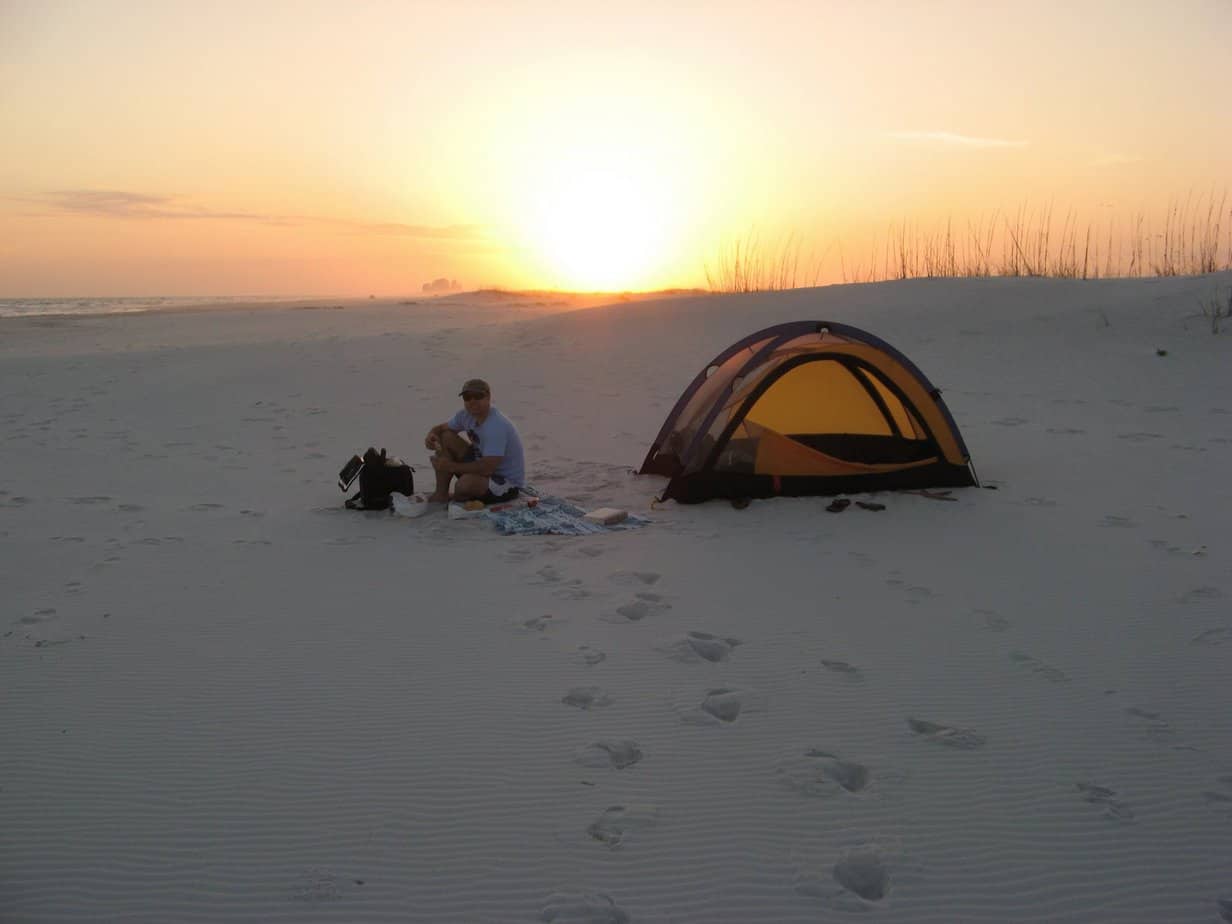
Beach Camping Florida: Your Guide to Sunshine State Shorelines
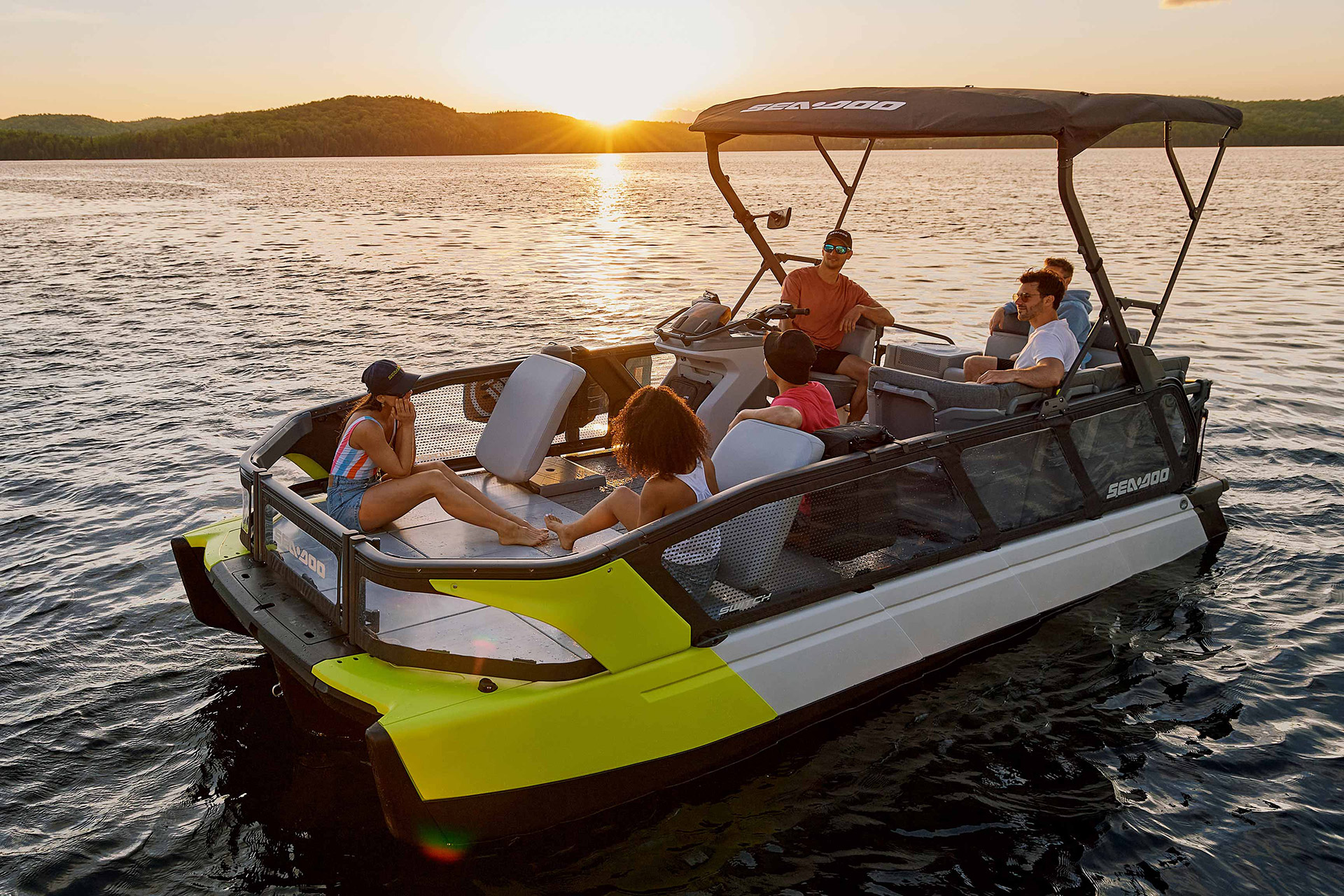
Sea Doo Pontoon Boat: Ultimate Guide for Buyers in 2023
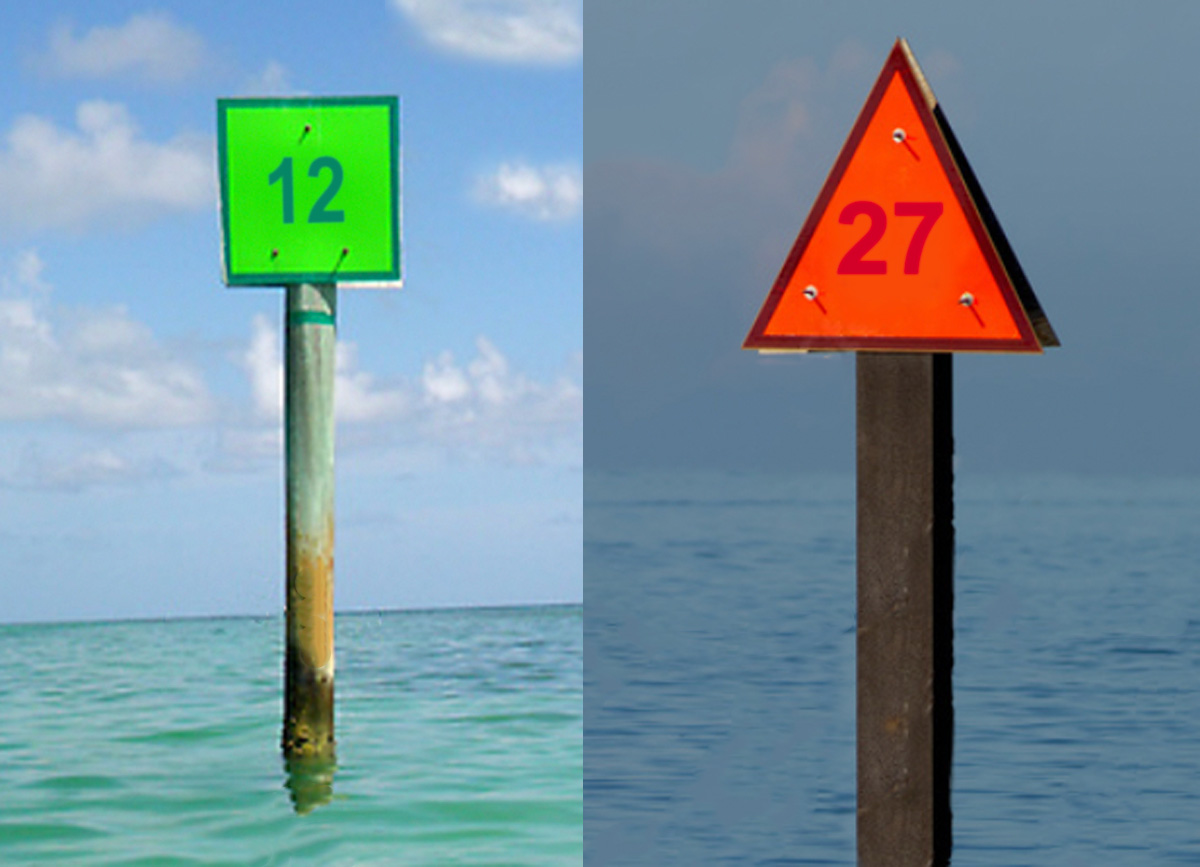
When Returning from Open Sea: Red Buoy Response Guide
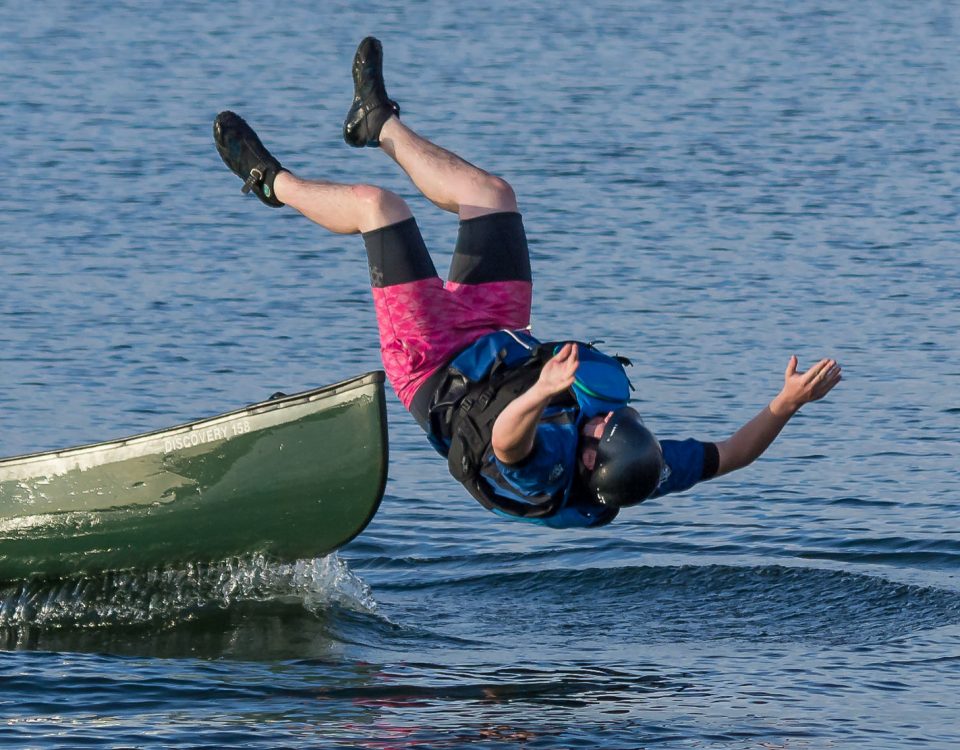
A Passenger on a Small Boat Falls Overboard: How to Safely Pull Them Back Aboard
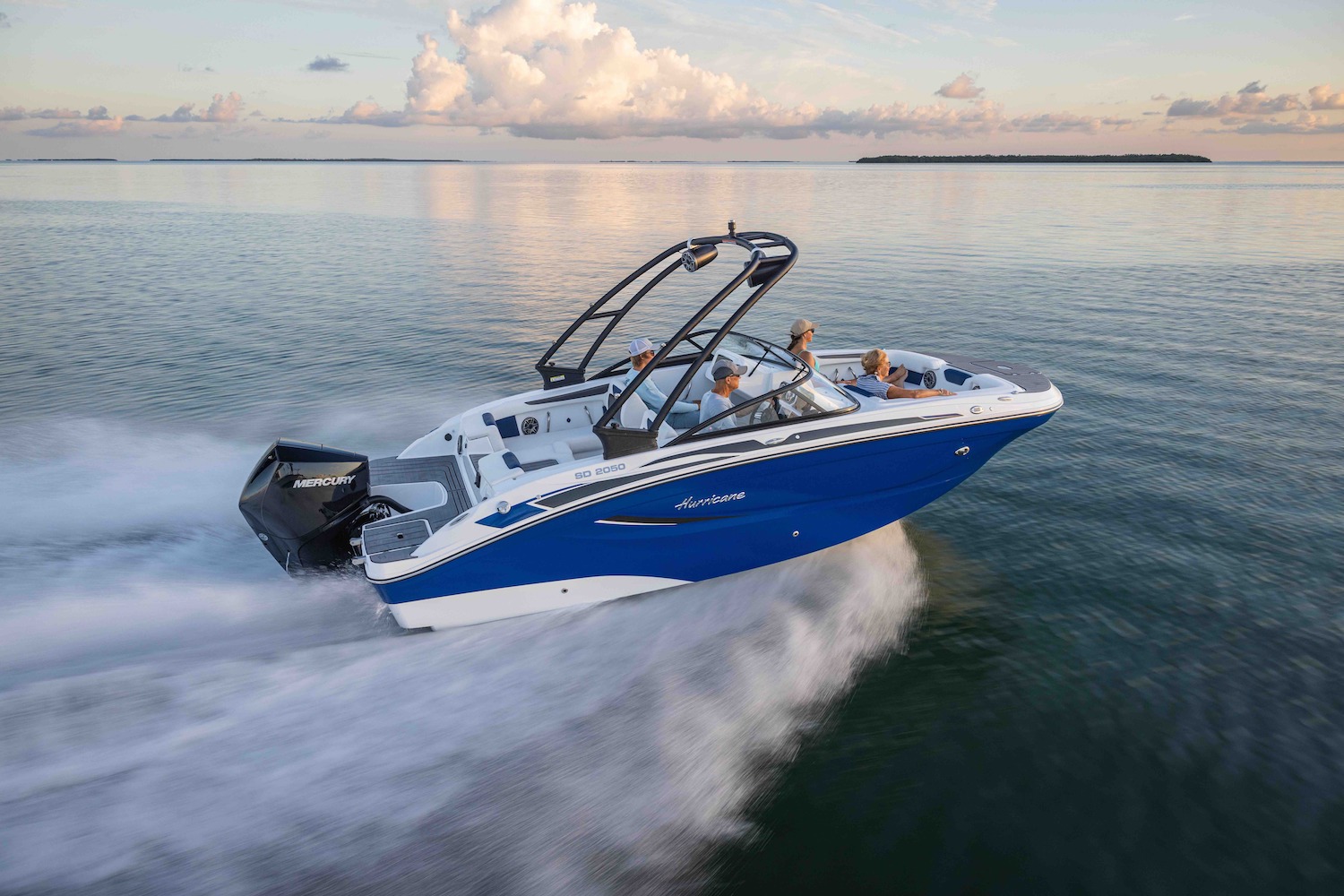
Deck Boats 2024 Ultimate Guide: Expert Insights for Top Models
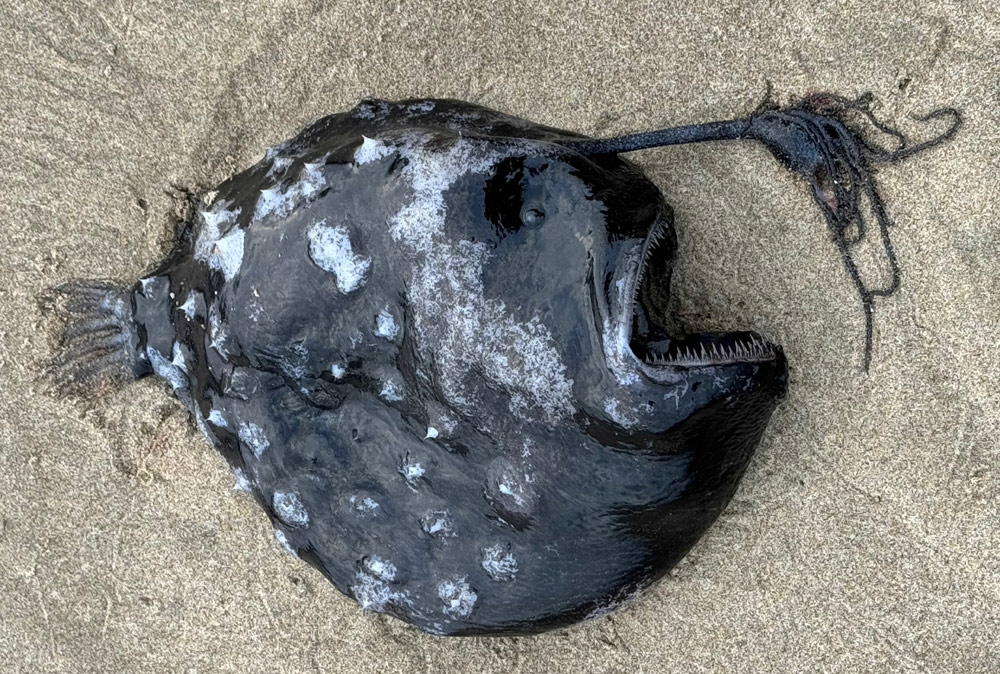
Rare Fish - Top 10 Astonishing Finds Beneath the Waves
- Articles and Guides
Small Sailboat Types: Sail Smaller and Savor It All
23rd jun 2024 by elaine lembo / toi williams.

You’ve got the sailing bug and you’ve learned there are many types of small sailboat you should consider buying to get started. Why is that? Because aboard a small boat, you and your senses and your elbow grease play every role, and then some. There’s just no downside to such pure activity so close to the surface of liquid Earth.
With each lesson, newcomers can discover how easy it is to maneuver a small craft because it is so responsive. Nudge the tiller and immediately experience a shift in course. Pull on a line and feel the hull speed change. The sailboat is your magic carpet, drawing energy from air to move you near and far, from lake and river to estuary and ocean.
Whether you race, cruise, embark on a high-speed or high-latitude adventure, charter for a holiday, or take a casual day sail, the act of getting outdoors and on the water keeps you fitter, healthier, and mentally sharper — attributes that give you an important edge in your more mature years, whether you trade up to a full-size cruising or performance sailboat, head far offshore, or keep sailing small boats in lakes, bays, and harbors.
Here's a rundown of the many affordable and diverse small sailboat design types on the market, each offering optimal simplicity and efficiency for learning basic skills.
Types of Small Sailboats
The term "small sailboat" encompasses a wide range of sailboat models. Generally, if a boat is less than 25 feet long, has a mast, rudder, and sail, and can be towed on a trailer, it is considered a small sailboat. Various types of small sailboats have different characteristics that may make them better for certain types of sailing. Let’s review some of the most popular small sailboat types.

Sailing dinghies
Sailing dinghies are frequently chosen because they are light and responsive. They are usually rigged with one mast and one sail, making them easy to handle, and they have a shallow draft, allowing them to be used almost anywhere. Sailing dinghies are also some of the least expensive sailboats because they tend to be simple with few features. Most are equipped with a retractable daggerboard or a centerboard.
The experience they deliver is one that puts the sailor closer to the surface of the water, whether from the roomy cockpit of a Beetle Cat, or from the more board-like surface of a Sunfish. Dinghy sailing also affords enthusiasts the chance to “hike out” on the hull. Leaning out alters the center of gravity in the boat and makes it go faster as the wind increases.
Beetle Cat : Beetle Cat sailing dinghies are a traditional design with a single sail (“cat rigged”), about 12 feet long with a draft of 2 feet. They are great for short coastal day cruisers as long as you’re comfortable sitting on the floorboards! A larger 14-foot model includes seats.
Laser : Laser sailing dinghies are fast, nearly 14 feet long and weigh about 130 pounds, making them easy to maneuver and transport. Raced in the Olympics by one sailor (the class is named the ILCA 6 and 7), the boats plane easily in a breeze and require mobility and athleticism in a breeze.
Optimist: The famed children’s dinghy, at less than 8 feet long, is designed for youth and can be raced under the rules of the International Optimist Dinghy Association by anyone up to 15 years old.
RS Venture: The Venture model from RS Sailing is 16 feet long and is often used in training classes for those new to sailing.
RS Aero: The Aero model from RS Sailing is nearly 14 feet long and is known for its speed, making it popular with experienced racers.
Sunfish: A 14-footer, the Sunfish has a short mast, a lateen rig with upper and lower booms and is ideal both or those learning how to sail and experienced racers.
Tiwal 3R: This award-winning inflatable boat for one or two crew is 10 feet long and 121 pounds when rigged. Its success, aside from performance, is its portability. No trailer needed here — it packs into two 5-foot duffel bags.
Topaz Taz: At slightly less than 10 feet, the Topaz Taz is a small, modern sailing dinghy primarily for training children and teenagers. Topaz boats for sale

Topaz Taz. Topper Saliboats photo.
Daysailer is a broad category of small sailboat types based on usage, size, and rig. Daysailers, also known as dayboats, are larger than sailing dinghies and sometimes include overnight accommodations. Keelboat daysailers have a fixed appendage on the bottom of the hull that provides sideways resistance to counter the force of the wind on the sails; centerboards on daysailers perform the same job while also being retractable in shallows. At Rightboat, we list a large selection of daysailers in a wide variety of styles.
Cape Cod DaySailer: This 16-foot centerboard sailboat available in standard and racing versions is one of the most affordable models for its size and has enough room to seat several people comfortably.
Montgomery 17: This small sloop has a length of roughly 17 feet and a retractable centerboard keel so it can be sailed in just 2 feet of water.
Sun Cat: This interpretation of a classic cat boat is a centerboard daysailer from Com-Pac Yachts. At nearly 18 feet long, it has twin 6-foot berths as well as a handful of other useful amenities.
West Wight Potter P19: The P19 model from West Wight Potter features a fractional rig and lifting keel. At just less 20 feet, it is equipped with four berths, galley, sink, and stove. It’s a cozy little cruiser for weekend and longer outings.
Flying Scot: At just less than 20 feet, the Flying Scot centerboarder is a low-displacement daysailer and popular one-design class. It races with two but can comfortably seat up to eight people.
Harbor 20: This stable one-design 20-footer with a 900-pound bulb keel is great for cruising and racing, solo or with a group of friends. Its easily handled self-tacking rig and latest marine technology below the waterline make for a swift and smooth ride.
BayRaider 20: The BayRaider centerboard boat is an award winner for its portability, performance, good looks, build quality and safety features. Its blend of modern technology and traditional appearance is highlighted by an open cockpit.
Catalina 22 Sport: The Catalina 22 Sport daysailer is nearly 22 feet long, can sleep four people, and has a retractable keel for a draft of less than two feet. Catalina boats for sale
Marblehead 22: The Marblehead 22 is a daysailer with an easily handled rig, bulb keel, and a cockpit that is nearly 12 feet long. It has plenty of room for a group.

Marblehead 22. Zurn photo.
Small Multihulls
Small catamarans and trimarans are a good choice for beginning sailors who want something different. These sailboats offer a wider base and can be rigged with one or two sails. They’re used for cruising, racing, even fishing. Newer to the scene are foiling multihulls such as the UFO foiling catamaran, a simply rigged and stowable lightweight craft that supplies the helmsperson stability on or above the water. Here are some models to consider:
Hobie Wave: The boomless 13-foot Hobie Wave comes with one sail, forgiving and durable rotomolded construction, and a mast float to keep it from turtling in the event of a capsize.
Hobie 16: The sloop-rigged Hobie 16 catamaran sparked the beach-cat revolution when designed in 1970 due to its speed off the beach with crew on a trapeze and successful promotion of the Hobie lifestyle. Made of fiberglass, the Hobie 16 is nearly 17 feet long and still known for its international one-design racing class.
Minicat: Its European manufacturer created a line of inflatable catamarans in various sizes. A key feature is easy assembly from the components, which fit in up to three completely portable bags.
Weta Trimaran: With a length a few inches beyond 14 feet, a beam less than 12 feet, this self-tacking, boom-less multihull offers easy recreation and international competition in the form of a global one-design fleet. It is capsize-resistant and packs up to the dimensions of a Laser.
More information: Buying A Sailing Catamaran

Hobie 16. Hobie photo.
This article, originally by Toi Williams, was published in March 2023 and then revamped by Elaine Lembo in June 2024.
Written By: Elaine Lembo / Toi Williams
Elaine Lembo, editor in chief of the Caribbean Compass , has built a career around sailing and journalism. She is an award-winning chartering editor for BoatUS Magazine and Cruising World magazine, among others. She is a fellow of the Metcalf Institute for Environmental Reporting at the University of Rhode Island Graduate School of Oceanography. Find out more at her social media profiles: LinkedIn | Facebook
Toi grew up in coastal New England, Her parents had a second home on Newfound Lake, in New Hampshire. Because of this, Toi was able to enjoy boating at sea as well as in the Lakes Region of New Hampshire. Today, she regularly wakeboards and waterskis on her Malibu wake surfing boat. She also sailed at sea in Maine, and taken many trips to the Isles of Shoals.
More from: Elaine Lembo / Toi Williams
Related Articles and Guides
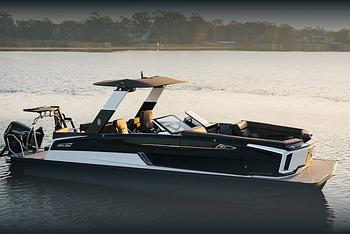
16th Aug 2024
Best Luxury Pontoon Boat Brands Have it All: Glamor, Speed, Fishing, Waterslides...
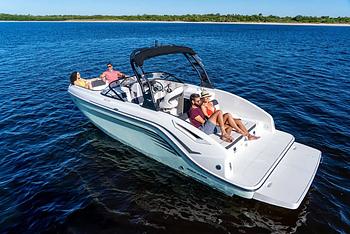
10th Aug 2024
Deck Boat vs. Bowrider: Which Runabout is Best?

19th Jul 2024
The World’s Best Yacht Brands
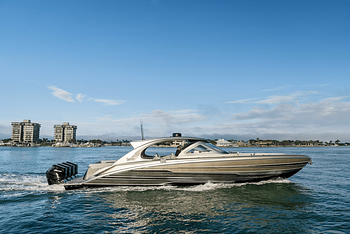
12th Jul 2024
Top Performance-Boat Brands, Where There’s Something For Everyone

- Explore Rightboat
- Boats for Sale
- Boating Articles
- Buyers Guide
- About RightBoat
- Sell Your Boat
- Boat Selling Advice
- All manufacturers
- All categories
Enter your email to keep up to date with the latest news
Join for free
Sign up now for free and discover how easy it is to keep up to date with THE latest boats for sale. Find your right boat, and tailor your voyage to finding your next boat.
Benefits of becoming a member:
- Set up tailored alerts
- Personalise your experience
- Download full specifications and broker details
- Keep tabs on your favourite boats
Are you a broker? Join as a Broker
Rightboat - join for free.
Do you have an account already? Login
Save this search
Save your search and receive new boats in your email..
You can unsubscribe from your alerts whenever you like. By pressing the button you accept the Legal Terms and conditions
January 22, 2024

Types Of Small Boats: Exploring Different Types for Your Next Adventure
Many boaters claim that small boats are the best, and they have valid reasons to support their claim. Firstly, small boats offer the best value for money, allowing you to enjoy the natural world of water at a minimal cost. Secondly, they require the least amount of time for maintenance compared to the time spent boating, making them very efficient. Additionally, small boats are naturally lightweight, portable, and easy to maneuver, making them convenient to store and transport. Lastly, they are excellent for learning boathandling skills, applicable to handling larger boats regardless of age.
The best thing about small boats is the variety available, catering to different water activities. Even those who own large boats often find small boats useful for specific activities and when dealing with the hassle of preparing the large boat seems unnecessary.
Wondering which type of small boat suits you best? The following guide is organized into a dozen categories, covering everything from rowing dinghies and sailing boats to kayaks and small powerboats.
Types of Small Watercraft
When it comes to small watercraft, there is no official size definition but generally, they are considered to be less than 30 feet long. The type of small watercraft that will suit you best depends on the activities you want to engage in and the location where you plan to launch your boat. Here are the main types of small watercraft you can explore during your search.
Jon boats typically feature an aluminum hull with a flat bottom and a squared-off bow, an outboard engine, and bench seats. These boats are lightweight and have a simple construction, making them easy to handle and requiring minimal maintenance. Depending on the engine price, they are also among the most budget-friendly options available when purchasing a boat with an engine.
If you're in search of a straightforward boat at a reasonable price, a skiff might be the ideal choice for you. Skiffs are generally defined as boats with a simple hull, an outboard engine, and seating. They are relatively easy to maneuver and maintain, and their small size allows for easy transportation and launching in various settings.
Dinghies encompass a wide range of boats, including sailboat racing classes. They typically reach a maximum length of about 10 feet, but those equipped with sails may extend to 15 feet or more. Dinghies can be powered by sails, a motor, oars, or paddles, and they are used for independent boating or as tenders for larger vessels to access shallow waters and the shore.
Inflatable Boats
Inflatable boats come in two basic types. The first type is completely inflatable and collapsible, designed for easy storage on larger vessels. The second type features a rigid hull surrounded by an inflatable ring. Inflatable boats range from 6 to 22 feet in length, with some models extending to over 40 feet to serve as tenders to large vessels such as sailboat racing yachts.
Aluminum Fishing Boats
Lightweight and easy to maintain, aluminum fishing boats are a practical choice for small watercraft. They are also cost-effective and fuel-efficient, making them an attractive option for fishing enthusiasts. These boats typically range from 8 to 24 feet in length.
Pontoon Boats
Available in various sizes and configurations, pontoon boats offer ample open space for multiple passengers. Ranging from mini fishing pontoons to performance pontoon boats, they are generally between 15 and 30 feet long and are known for their affordability, ease of trailering, and simple launching.
Canoes are a popular choice due to their ease of use, maintenance, and transportation. They are powered by paddles and can navigate through shallow waters. Canoes come in different shapes, each designed to cater to specific activities such as speed, coasting, or fishing.
Kayaks are favored for their maneuverability and typically accommodate one or two passengers. Propelled by a double-bladed paddle, kayaks offer a range of designs, including sit-on models and foot pedal-powered variations.
For those seeking speed and excitement, jet boats are an ideal option. Ranging from 14 to 24 feet long, these boats are built for maneuverability and thrilling rides, powered by jet engines that create high-pressure water thrust.
Personal Watercraft
Personal watercraft, also known as Jet Skis, are compact and fast, designed to accommodate one or two individuals. They are available in sit-down and stand-up versions, offering a thrilling experience on the water.
Deck boats, with their open deck space, provide ample room for passengers and equipment. Ranging up to 26 feet in length, these boats are equipped with high-powered engines and are well-suited for accommodating large groups of family and friends.
Bowrider Boats
Bowrider boats, while at the larger end of the small-boat category, offer versatility and maneuverability. With their V-shaped hulls, they can navigate various water conditions and are suitable for a wide range of water activities.
Exploring Different Types of Small Motorboats
When it comes to small motorboats, there are various types that fall under the umbrella terms of cruisers and runabouts. These terms encompass a wide range of boats that are categorized as relatively small powerboats, equipped with either inboard or outboard motors. Within the category of cruisers and runabouts, you'll find bowriders, deck boats, jet boats, and a host of other small boats that are powered by motors.
One of the most popular types of small motorboats is the bowrider, which is known for its open bow area and seating in the front. Then, there are deck boats that offer a spacious deck area for relaxation and entertaining. Additionally, jet boats are gaining popularity due to their unique propulsion system and maneuverability. These are just a few examples of the diverse range of small motorboats available in the market, each catering to different preferences and needs.
Exploring Different Types of Small Sailing Boats
Small sailing boats come in various types, each with its unique features and characteristics. From sailing dinghies to daysailers, small sloops, and multihulls, there is a wide range of options for sailing enthusiasts to choose from. Whether it's the traditional design of a small sloop or the stability offered by multihulls, each type of small sailing boat has something different to offer.
When it comes to small sailing boats, one thing that sailors should be prepared for is the potential for a wet ride, especially when the wind picks up. The compact size and design of these boats often mean that the crew may experience splashes of water as they navigate through the waves. It's all part of the exhilarating experience of sailing in a smaller vessel.
Choosing the Right Small Fishing Boat
When it comes to choosing the right small fishing boat, anglers have a variety of options to consider. While almost any small boat can be used for fishing, some types are better suited for this purpose than others. Among the most popular choices are aluminum fishing boats and jon boats, known for their versatility in different types of water, such as narrow inlets, bays, flats, and shallow shorelines. These boats come in various forms, from kayaks to skiffs, and can be equipped with features specifically designed for fishermen.
Considerations for Anglers
Anglers should consider the specific features and capabilities of each type of small fishing boat before making a decision. For example, kayaks are known for their maneuverability and portability, making them ideal for reaching remote fishing spots. On the other hand, jon boats and skiffs offer more stability and storage space, making them suitable for longer fishing trips. Additionally, anglers may want to look for boats with built-in rod holders, live wells, and other fishing-specific amenities to enhance their fishing experience.
Choosing the Right Small Boat for Your Lake Adventures
When it comes to navigating the tranquil waters of a lake, the choice of boat is crucial. For smaller lakes, where maneuverability is key, a manually powered boat such as a canoe or kayak is an excellent option. These lightweight and agile crafts allow you to explore every nook and cranny of the lake with ease. On the other hand, if you're dealing with larger lakes and potentially choppier waters, a more substantial powerboat like a deck boat might be the better choice. These sturdy vessels are built to handle larger waves and provide a smoother ride in open waters. However, if you want the flexibility to navigate both small and large lakes, a mid-range small boat could be the perfect compromise, ensuring you feel comfortable and confident no matter the size of the lake.
Considering the size of the waves and the type of lake you'll be exploring is essential in making the right choice. Whether it's a serene small lake or a vast expanse of water, having the right small boat will enhance your overall experience and allow you to make the most of your lake adventures.

Exploring Small River Boats
When navigating a river, it's essential to keep in mind that the current will consistently push you downstream. If you plan to travel both upstream and downstream, a motorized boat is necessary. Luckily, there are several types of small river boats that can be equipped with a motor for this purpose. Some of the most popular options for small river boats are jon boats, pontoon boats, deck boats, and jet boats.
Was this page helpful?
Save my name, email, and website in this browser for the next time I comment.
Save up to 50% on boat storage
- Boat Buying
9 Types of Small Boats for Every Adventure
For those seeking thrilling escapades on the water without breaking the bank, small boats are your gateway to an array of unforgettable experiences. Not only are they more affordable, but they are also easier to handle, tow, load, and store.
Small boats extend a world of possibilities for leisure, fishing, and serenity with their small size.
In this comprehensive guide, we’ll explore the realm of boats, highlighting ten exceptional types of small boats that cater to diverse preferences. From specialized fishing boats and cabin cruisers to versatile kayaks and rowboats, you can learn about your ideal choice!
Types of Small Boats
If you’ve ever yearned to conquer the vast open waters, whether to seek thrilling fishing expeditions, tranquil paddling escapes, or lively gatherings on the water, your dream boat is within reach!
Here are ten types of small boats to cater for your every adventure:
1. Fishing Vessel
A fishing vessel is a paradise for avid anglers who crave the exhilaration of the catch. Designed to maximize your fishing experience, these types of small boats come equipped with features like rod holders, live wells for keeping bait fresh, and ample storage for gear. These small boat types also provide a reliable platform for casting lines and battling fish.
Typically with a V-shaped hull, some models even boast cutting-edge fish-finding technology and an outboard engine, ensuring you never miss a good spot.
Whether you’re a novice or a seasoned pro, a fishing vessel promises a rewarding journey on the water, providing exceptional comfort, making them ideal for extended hours spent fishing in various water conditions.
Unfortunately, fishing vessels require frequent cleaning, encouraging owners to disinfect the boat once or twice a month.
How Neighbor is changing boat storage
Transparent monthly savings.
Renters save 30-50% on boat storage, on average. No rate hikes.
Keep your boat nearby
25,000 locations means that your boat is always close by.
Storage made simple
Don't settle for stone age tech and long contracts. Neighbor makes it easy.
2 . Pontoon Boat
Set sail on a pontoon boat and indulge in endless fun and leisure. Supported by buoyant tubes, the flat deck provides an incredibly safe platform, making it ideal for families, friends, and pets.
This type of sailing boat features comfortable seating, often accompanied by plush cushions, creating a cozy ambience for relaxation and socializing.
Some models even offer water slides, allowing you to dive into the inviting waters and create cherished memories with loved ones. With their flat platform supported by pontoons, these small boat types are perfect for parties, picnics, and leisurely cruises. They offer abundant seating, easy boarding, disembarking and open deck space.
3 . Jon Boat
For those yearning for intimate encounters with nature, a Jon boat can be your trusted companion. This small boat type is lightweight and primarily used for fishing in shallow waters.
With bench seats, an outboard or electric outboard engine and an aluminum hull with a flat bottom and a squared-off bow, this small size boat excels in navigating shallow waters and tight spots, granting access to secluded fishing spots or wildlife havens.
They are easy to maneuver, making them popular among both anglers and hunters. These types of small boats are often used in serene marshes or tranquil lakes.
Jon boats can also be customized to fit your specific needs and preferences, whether outfitting them with a trolling motor for silent gliding or adding casting platforms for the ultimate fishing advantage.
4. Bass Boat
A bass boat is an unrivaled choice for passionate anglers determined to conquer the waters in pursuit of bass. Bass boats are specifically designed for bass fishing enthusiasts. Engineered for high speed and equipped with powerful outboard motors, these types of small fishing boats feature aerodynamic designs to chase after the elusive trophy fish.
With an aerodynamic hull, advanced navigation systems, and numerous storage compartments, bass boats are built to enhance your fishing prowess. With their speed and agility, these boats allow anglers to swiftly reach their favorite fishing spots.
5. Inflatable Boat
Inflatable boats, also known as dinghies, are easily transportable, portable, and ready for any water adventure. These types of small boats offer unparalleled convenience.
Crafted from materials such as PVC or Hypalon, these types of small sailing boats can be easily inflated and deflated, making them effortless to transport and convenient to store. Inflatable boats come in various sizes, from compact one-person crafts to larger models that accommodate a group.
They are also suitable for various activities like fishing, leisurely rides, and even serving as yacht tenders. Whether you seek fishing escapades, leisurely cruises along the shoreline, or simply a reliable tender for a larger vessel, an inflatable boat is a fine choice.
Save up to $1,200/year on boat storage
6. kayak.
Kayaks come in different styles, such as sit-on-top or sit-inside, and are perfect for solo adventures or tandem trips. This small boat type allows you to explore narrow waterways and embrace the natural surroundings, offering a serene experience.
These boats cater to different preferences and skill levels, serving advantages like maneuverability, compact size, low maintenance and environmentally friendliness. In both calm waters and rivers, kayaks will perform well.
So, go ahead. Paddle along tranquil lakes, glide through gentle rivers, or embrace the excitement of whitewater rapids. The choice is yours.
7 . Canoe
With a distinct design, canoes offer a classic mode of transportation on the water. With a rich history backing this small boat type, canoes are ideal for recreational and wilderness exploration. Whether embarking on a leisurely paddle along a river or planning a multi-day expedition, canoes provide a spacious stable platform for multiple passengers (and their gear).
Because of a canoe’s adaptability in different water conditions, you can paddle through lakes, rivers and even tackle whitewater rapids.
8 . Deck Boat
Deck boats combine pontoon boats’ spaciousness with traditional powerboats’ performance. This small boat type promises spacious deck areas, a multitude of storage and comfortable seating. Whether you’re planning to use the deck boat for cruising, engaging in watersports, and enjoying quality time with friends and family, this small boat will do the job. Not to mention, deck boats boast ample deck space and comfortable seating place, making it suitable for watersports and versatile enough for leisurely activities.
9 . Bowriders Boat
This type of small sailing boat embodies the perfect combination, the ideal balance of solace, versatility and enjoyment when sailing. With its unique design, Bowrider boats are characterized by its roomy seating area. On a bowrider boat, there is seating located at the front, providing ample space for passengers to relax and enjoy the sun. The adaptability of this type of small boat makes it ideal for a wide range of activities, from peaceful coastal excursions to exhilarating water sports adventures.
Wrapping Up
As we conclude our voyage through the diverse type of small boats, keep in mind that choosing a small boat isn’t a decision to take lightly, given that a small boat can translate to a big price tag.
Whether your passion lies in fishing, leisurely cruising, or exploring serene waterways, you can find the perfect boat for your seaside adventures.
Even after excluding honorable mentions like jet skis and skiffs, it’s clear that there are enough types of small sailing boats to leave any aspiring sailor feeling spoiled for choice.
Whatever small boat graces the top of your wish list, consider Neighbor , a peer-to-peer storage marketplace, for all of your boat storage needs. As any trained seaman would, be sure to arrange boat storage before purchasing the boat itself.
People Also Ask
1. What are those small boats called?
Small boats are often referred to as dinghies. However, smaller vessels have distinct names depending on their qualities and features.
2. What are the small fast boats called?
The small fast boats are referred to as speedboats.
3. What are small motor boats called?
Small motor boats are commonly referred to as runabouts.
4. What is a small boat similar to a canoe?
A kayak is similar to a canoe. However, canoe is an open boat typically designed with an elongated shape and pointed ends. It is paddled using a single-bladed paddle, where the paddler sits on a raised seat or kneels inside the canoe. Canoes generally offer more space and stability, making them suitable for activities like leisurely paddling, fishing, or transporting larger loads.
On the other hand, a kayak is a closed boat with a covered deck, often featuring a cockpit where the paddler sits. They have a narrower profile, allowing for greater speed and maneuverability. They are propelled using a double-bladed paddle, with the paddler sitting low and having their legs positioned forward inside the cockpit. Kayaks are popular for activities like touring, whitewater adventures, or racing, as their design allows for enhanced agility and efficient paddling.

Related Posts
The best types of boats for lakes: exploring your options, ultimate guide for types of fishing boats.
- Other Vehicles
Canoe vs Kayak: Uncovering the Best Fit for Your Paddling Adventures
12 types of kayaks: choosing the right one for you, the 11 best kayak brands for 2024, the 4 classes of boats: a complete overview.

Justin earns $650/mo on Neighbor. Find out how you can too!
Stay in the loop ↓
Refastening a Wooden Hull - Season 4, Episode 1 Now Available!
Small Boat Shapes, an Overview of Types and Terms
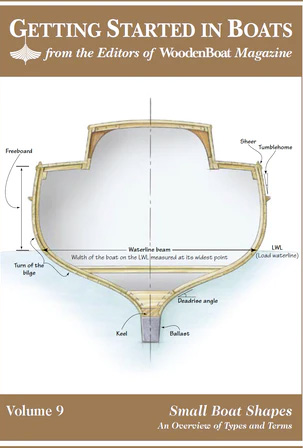
The original print version of this quide can be viewed as a PDF or purchased from the WoodenBoat Store.
When I was getting started in boatbuilding, I struggled to understand how different small-boat shapes might perform and their level of difficulty in construction. I remember feeling nearly overwhelmed by a sea of foreign words and unknown concepts. It would have been nice to have had an illustrated guide to basic small-boat shapes: hulls, bows, sterns, and some terminology that defines form. So, if you are new to boatbuilding, or if you feel unclear on some of these basic concepts, this guide is for you.
From the moment man discovered that he could traverse a river on a floating log, boat shapes have continued to evolve. Early boats took on a wide variety of forms, utilizing any available material that could be made to float. Among these craft were rafts made from inflated animal skins, bamboo, papyrus reeds, and even terra cotta pots. Later came dugout canoes, skin, wood, and bone kayaks first used by Eskimo hunters, and basket-shaped coracles (also skin boats) built in Ireland and Wales.
While boat and ship building became refined over the centuries, early designers and builders still took a Darwinian approach: If a new ship returned from her maiden voyage, she might be copied and built again. If she failed to return, well, then she might not be reproduced.
We still haven’t conquered the sea, and I doubt that we ever will. However, we do have more tools at our disposal to help us build boats that are safer to use and perform better. Hours spent on construction represent only a fraction of time in the life of a small wooden boat. It isn’t difficult to grasp the utility of basic small-boat shapes, and it will be helpful to know something about them when choosing a boatbuilding project.
Please remember that this is an article about small-boat shapes, not small-boat design. While some overlapping concepts are mentioned here, we will not cover even the rudiments of what it takes to create a lines drawing. If this piece whets your appetite for learning something about small-boat design, then I encourage you to read Harry Bryan’s article on the subject in WB No.196, page 44, and to consider the titles provided at the conclusion.

The Origins of Hull Shapes
Hull shapes (in section) are made up of some combination of three basic forms. These are: flat-bottomed, V-bottomed, and round-bottomed.
Flat-bottomed Form

Strengths: The flat-bottomed boat’s principal asset is that it is easy to build. Therefore it is generally inexpensive for its size. It also has a lot of interior volume and can have good initial stability (and not feel tender, that is, tippy). The flat bottom shape is most often used for small rowboats, but many larger craft have also successfully used this most basic of forms. This skiff is based on a flat-bottomed form. The form is augmented by rocker, canted topsides, and a bit of flare in the forward section.
Weaknesses: The flat-bottomed boat has some serious drawbacks, too. Its large, flat panels are hard to support structurally; when heeled too much, it can easily fill and capsize; and the flat bottom pounds even at moderate speeds in waves. Because of these drawbacks, the flat-bottomed boat shape is generally not considered as sea-worthy as the other basic shapes.
V-bottomed Form

Strengths: V-bottomed boats, when properly shaped, can be inherently stronger than a boat with a flat-panel bottom and will slice through the water with much less pounding. Because of this, they are considered more seaworthy than equivalent-sized flat-bottomed boats. Boats and yachts of all sizes have been designed and built with V-bottoms. Virtually all high-speed power craft built today employ some type of V-bottomed shape.
Weaknesses: In smooth water, V-bottomed boats require more power for the higher speed ranges than flat-bottomed boats do. Also, the V-shape offers greater difficulty in construction. Because of this, V-bottomed boats tend to be more expensive than the flat-bottomed type. Also, the V-bottomed boat may be less roomy, and harder to clean and paint than a similarly sized flattie.
Round-bottomed Form

Strengths: The curved shape of a round bottom is intrinsically strong and allows the boat an easier motion than its V-bottomed and flat-bottomed cousins. This shape is generally used for higher-displacement boats (displacement boats do not plane) that are designed to go at moderate speeds through the water rather than over it like the higher-speed V-bottoms can.
Weaknesses: Round-bottomed boats are the hardest to construct and are, by far, the most expensive to build. Virtually all hulls borrow from these pure forms. Let’s look at some of the many elements of small-boat hull shapes and the characteristics that distinguish one from the other.
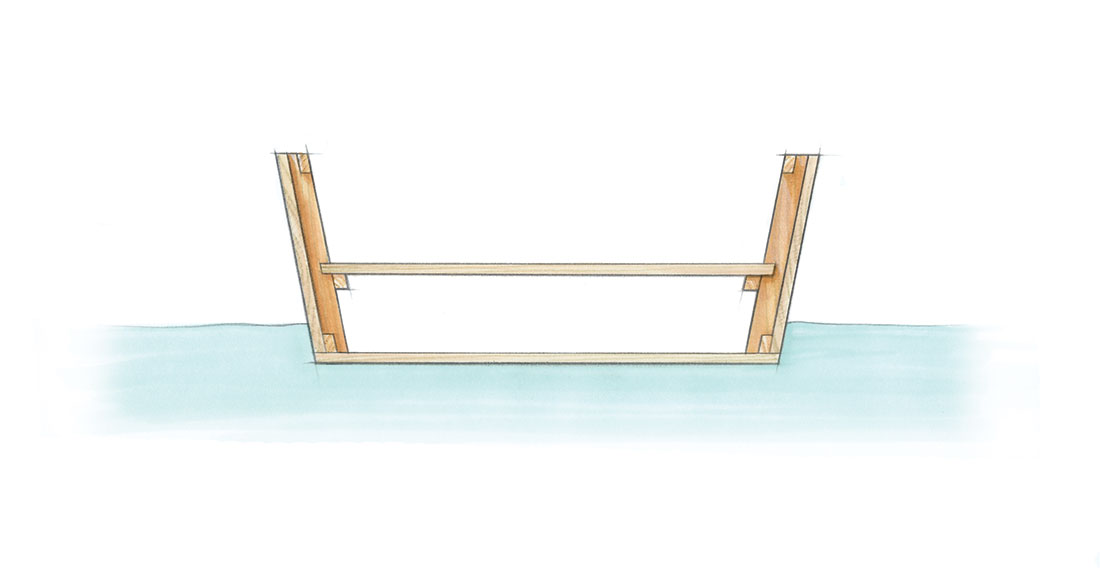
This simple-to-construct, flat-bottomed hull type tends to be a slow mover that will pound in waves, but it is very stable in calm waters on a breezeless day.
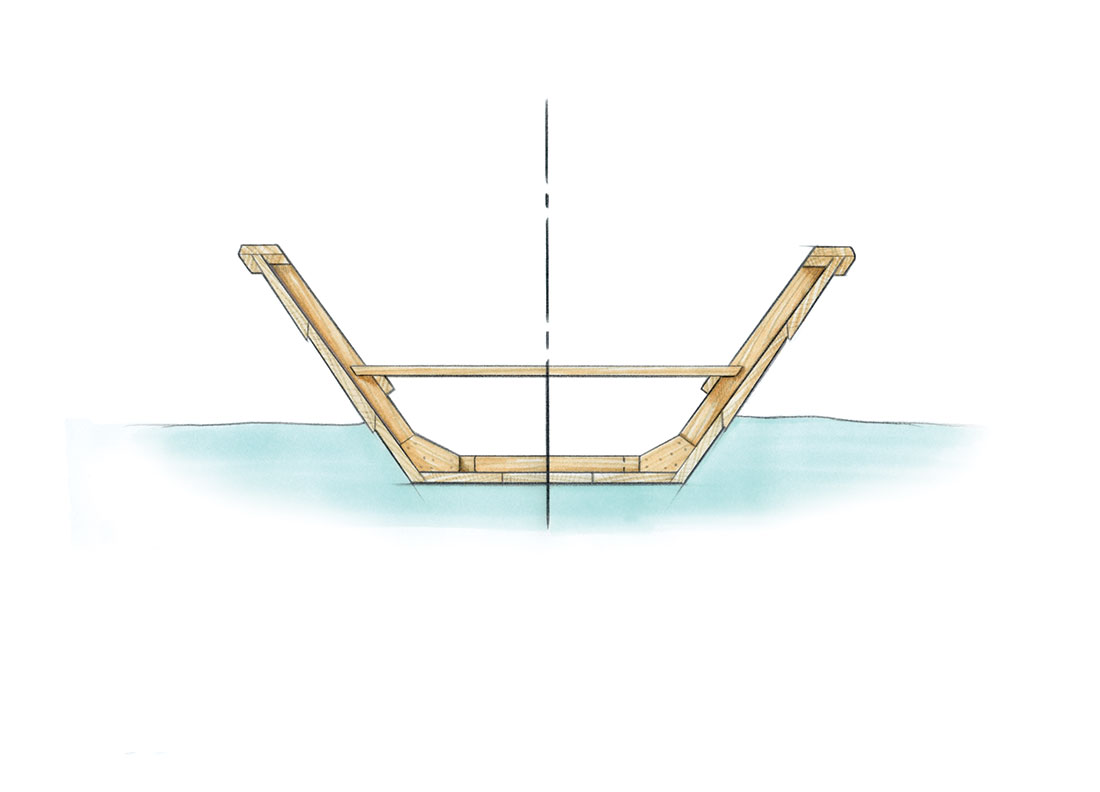
While both the flat-bottomed skiff (see illustration on previous page) and the dory (above) are somewhat more difficult to construct than the scow, their sweeping bottom shapes and canted sides enable them to ride the waves more easily than their slab-sided counterpart. A dory has some similarities to a skiff. However, it has a narrower bottom and transom, employs some different construction techniques, and is made for use in heavier seas. A dory’s flaring sides make it increasingly stable the more it is tipped, so while you might be alarmed at this boat’s initial nervousness, you may find yourself able to stand on its rail without water coming aboard.
Arc-bottomed Centerboard Sailboat
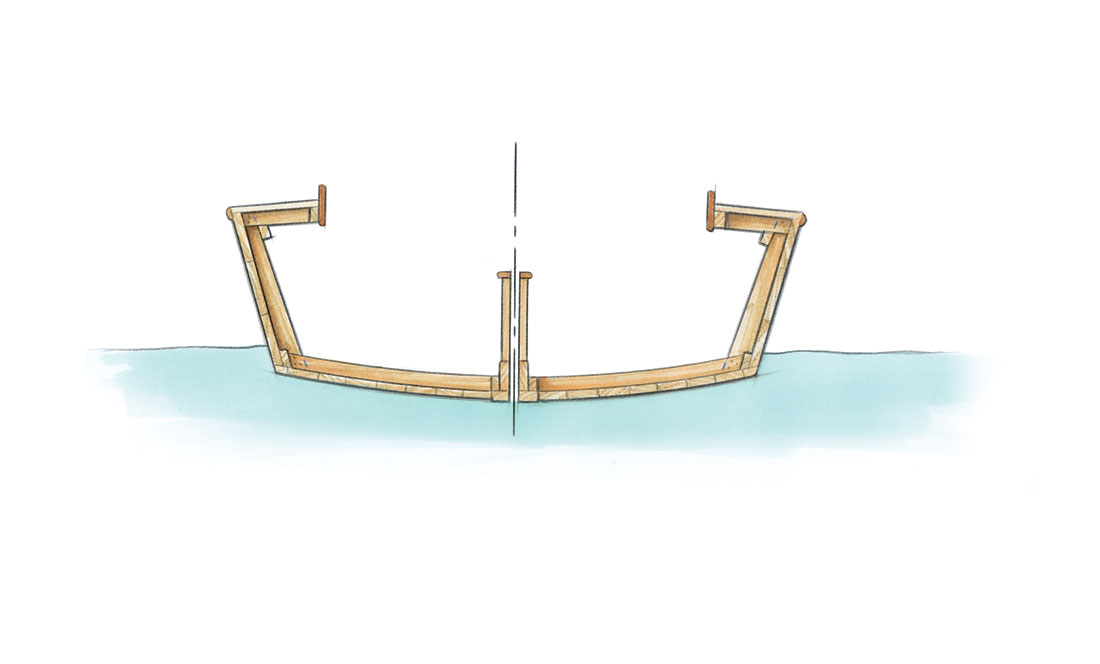
Of the flat-bottomed hull configurations presented here, the arc bottom is the most difficult to construct. It is also the most sea-friendly and comfortable of these flat-bottomed types.
V-bottomed Motorboat

The deadrise angle (see page 6) of the V-shaped bottom allows this hull shape to move forward through waves more easily than a flat-bottomed type, while still providing good stability. Many planing boats, such as runabouts, combine the deep V-bottom in the forward area of the boat, while unrolling the shape to a flatter deadrise angle toward the stern (as illustrated). This combination gives a boat the dual benefits of speed in waves and stability.
Multichined Kayak

Up to this point, we have not discussed chines. Chines are the intersections of the bottom and sides. All of the boats we have discussed so far are single-chined, meaning that they have only one hard turn, or corner, where the bottom meets the sides. The bottom of a multichined boat is made up of a number of narrower panels. Depending on the design, the multichined shape, as in the kayak shown above, can produce a hull whose performance approaches that of a round- bottomed boat.
Round-bottomed Canoe
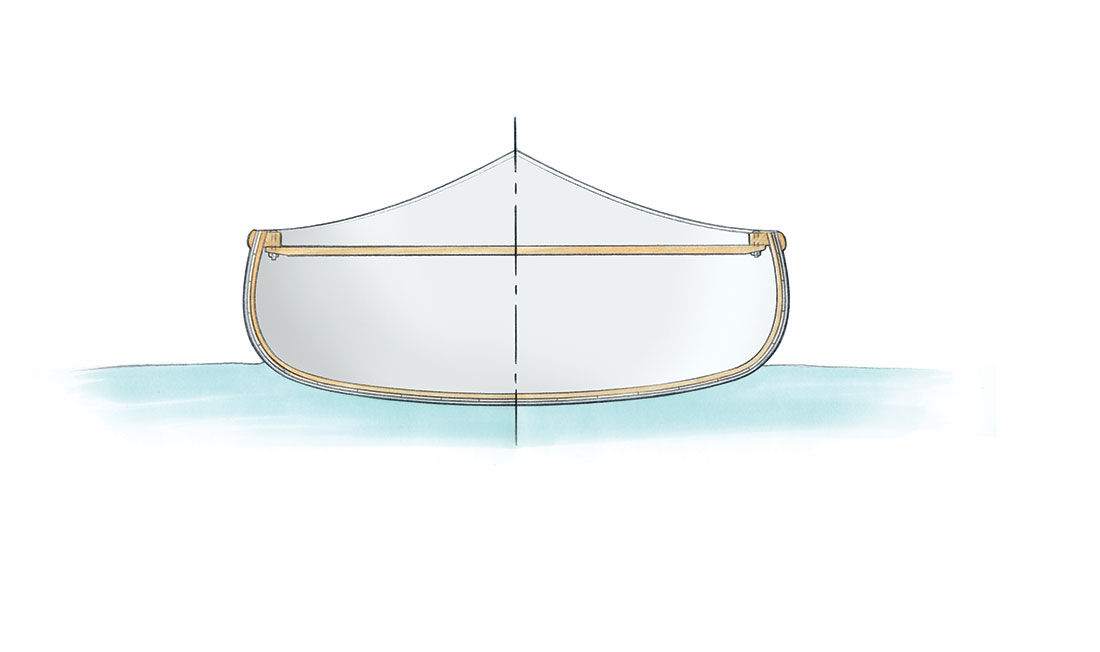
Round hull shapes are more difficult to build than either flat-bottomed or V-shaped hulls. Often, flat-bottomed or V-shaped hulls can be built on their own permanent frames, or their frames are easily sawn and fitted. A much more complex mold system must be set up before a round-bottomed hull can be built. For a well-constructed round-bottomed boat, the builder must have a higher level of woodworking skill and a good understanding of wood characteristics. Yet round-bottomed boats are the usual preference of people who spend a lot of time on the water. Why? Partly because this shape responds to the undulations of the water more gracefully than any other type of small boat. Also, they tend to be more comfortable and many people prefer their looks.
Round-bottomed Keel Sailboat

Adding a keel with built-in ballast to a round-bottomed boat adds complexity to the construction process. Also, if you look at the turn of the bilge (see cover illustration), you’ll notice that some of the planking has been hollowed out (“backed out”) in order to follow the round shape of the hull. Still, it’s easy to see that this shape would make a comfortable and stable boat, even in rolling seas. Whoever came up with the phrase, “Go with the flow,” might have sailed a round-bottomed sailboat. Its curved shape allows water to easily roll along its surface while its ballast keel acts as a pendulum and (usually) prevents the boat from tipping over while under sail.
Reverse-curved Sailboat
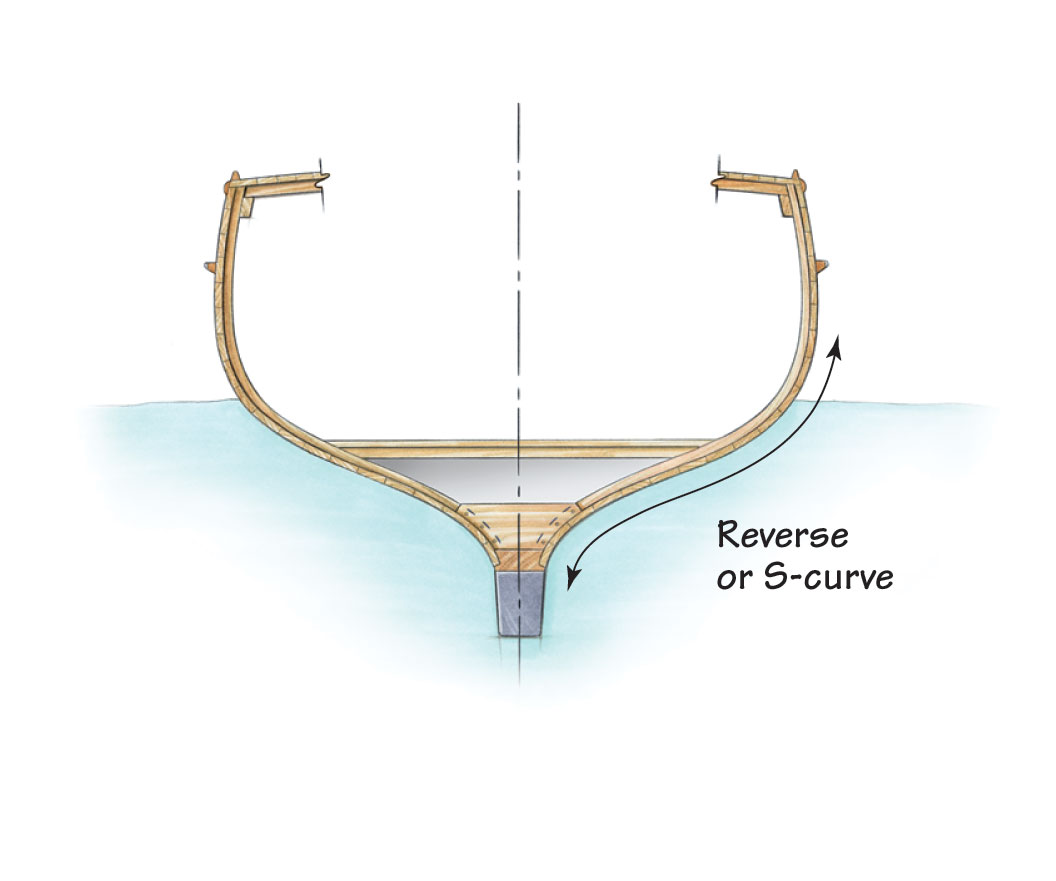
This type of hull shape represents the toughest building challenge of all the boat shapes presented here. Notice the reverse (S) curves of the hull. The backbone and deadwood (keel area) and the planking, framing, and fitting out (adding interior elements) all require a higher degree of skill and workmanship. Add to that the fact that a sail, through its rigging, will be pulling on the structure over its lifespan. Yet, of all the shapes presented here, this one may be the most seakindly. The great weight of the ballast keel combined with the compound and complex curves of her hull shape allow the boat to take better advantage of breezes in both calm waters and heavier seas.
Small-Craft Stability
Naval architect C.W. Paine defined small-craft stability as “The propensity of the vessel to remain upright.” Two major types of stability apply to small boats: initial stability (how tender or not-tender a boat feels), and ultimate stability (the ability of a boat to return upright after being turned over). Because most small boats will remain inverted when turned over, initial stability is of primary interest to their users. On small boats, waterline beam (or the width of a boat at its LWL; see opening illustrations) is the principal factor in determining initial stability. A small increase in waterline beam can greatly increase initial stability. The shape of the sections also plays a part. For example, sections with good flare regain stability quickly when they are tipped, while slab or vertical sided boats do not.
Flare, Flam, and Tumblehome

Other Characteristics That Affect Boat Shape
See also illustrations on cover and page 3
Sheer is easily seen in the side view of a boat. The sheerline is the topmost line of the planking, where the planking meets the deck (or the rails if the boat has no deck). It is the dominant line (of many) that determines the look of a boat.
Freeboard is the distance or height of the sides of the boat from the waterline to the sheer or deck line. Too little freeboard leads to easy entrance of water when the boat is heeled. Too much freeboard causes excess windage (as a wall to the wind) and weight of construction. It detracts from a boat’s appearance, too.
Topsides, sometimes confused with freeboard, is the surface area of the hull from the water-line to the sheer, or rail (the part that you see). Freeboard is always a distance; topsides is an area.
Rocker is the amount of fore-and-aft curvature to a boat’s underbody. The amount of rocker will help to determine how easily a boat will make turns. Too little rocker will render a boat that never wants to turn without a fight. Too much, and it will yaw (twist back and forth) and resist running on a straight course.
Deadrise angle describes the upwardness of the bottom (in section) from horizontal. On a flat-bottomed scow, skiff, or dory, deadrise angle is zero. On a V-bottomed powerboat, the deadrise angle may be as much as 20–25°, and even more on an extreme hull shape.
Overview of Bow Types
At daybreak, there is hardly a prettier sight than watching a boat cut the first seam in flat water like sharp scissors cutting satin. Literally and figuratively, a boat makes a first impression with its bow.

Bow with Tumblehome
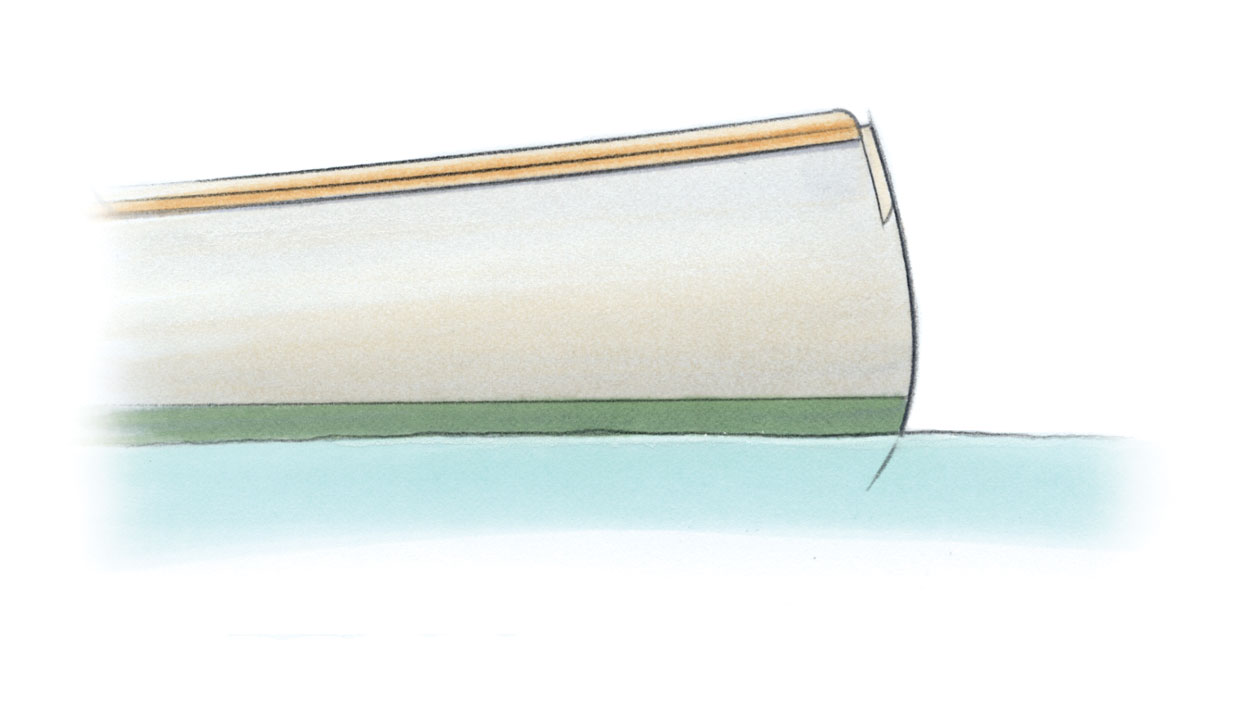
Transom Shapes
The Transom As the bow makes a first impression, the transom makes a final, and lasting one. Here are some transom shapes that are common to small boats.
Skiff and Dory
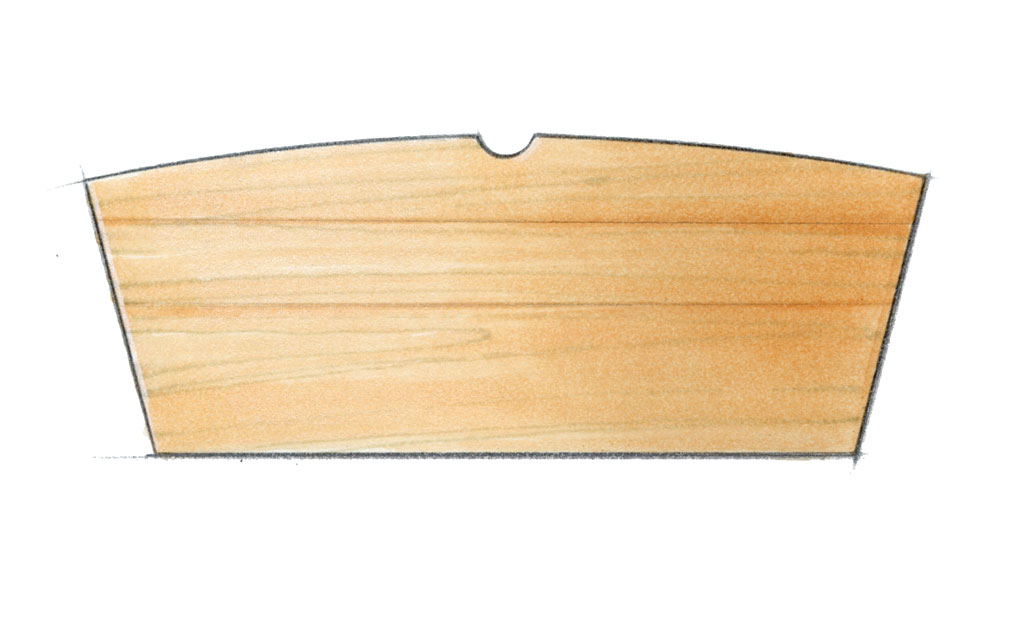
Round-bottomed

Wineglass Shape

In many ways, each boat is as unique as her designer or builder. We have covered only a few of the most common forms here. Still, having a basic understanding of these small-boat shapes, we hope, will enable you to look at all boats in a new light. Depending upon your boat’s intended use, you’ll be able to use this guide to choose the characteristics that best serve your purpose. Then, as you look at boat plans, you’ll recognize more of these telling features and be able to proceed with confidence as you decide upon your first (or next) boatbuilding project.
Karen Wales is WoodenBoat’s Associate Editor. Further Reading Understanding Boat Design, 4th Edition, Ted Brewer. The Boatbuilder’s Apprentice, Greg Rössel. Boatbuilding Manual, Fourth Edition, Robert M. Steward. (All titles are available at The WoodenBoat Store. <www.woodenboatstore.com>.)
Sheathing a Plywood Deck
Building a butterfly skylight, a sliding tool tray, a blacksmithing primer, subscribe for full access.
Flipbooks are available to paid subscribers only. Subscribe now or log in for access.
A Complete Guide to Yacht Types and Sizes
- by yachtman
- August 28, 2023 June 22, 2024

Yachts, symbols of luxury and leisure, provide a stunning escape. From motor yachts to sailing yachts, the world of yachting is both diverse and captivating. Journey with us as we explore the different types and sizes of yachts, uncovering their secrets.
Climb onboard a superyacht , the queen of the seas. These floating palaces boast remarkable dimensions, with amenities such as swimming pools, helipads, and even submarines. Ideal for those seeking indulgence, superyachts are the epitome of yachting excellence.
For a more intimate experience, try a luxury motor yacht . With powerful engines, they let you visit multiple destinations quickly. Enjoy the lap of luxury as you cruise across the sea, appreciating every moment on board these vessels.
Sailing lovers will appreciate classic sailing yachts . Watch their silhouettes gracefully cut through the waves, powered by wind. Feel the passion for sailing, and the freedom, on an adventure akin to ancient seafarers. Uncover your inner explorer while savoring unparalleled serenity.
Catamarans are ideal for sailing with precision and finesse. With twin hulls offering stability and space, catamarans offer great comfort. Enjoy vibrant sunsets to tranquil anchorages, and bliss on water, with these versatile vessels.
For those keen on exploration, expedition yachts are perfect. Built tough and with advanced tech, they are designed for explorations to remote areas. Discover untouched landscapes, encounter wildlife, and make memories in the far-flung corners of the world.
Types of Yachts
Sailboats to mega-yachts – there’s a large choice of yachts. Let’s delve into the types and sizes that meet different needs.
Take a gander at the table below for an overview of yachts:
| Type | Size Range |
|---|---|
| Sailing Yacht | 20-100+ feet |
| Motor Yacht | 35-200+ feet |
| Catamaran | 30-80+ feet |
| Trawler Yacht | 40-100+ feet |
| Expedition Yacht | 70-400+ feet |
| Flybridge Yacht | 50-150+ feet |
| Sports Fisher Yacht | 30-70+ feet |
A guide to yacht anchor types and sizes is vital for understanding the different types and sizes available in the yacht industry. For more information, check out a guide to yacht tenders .
Sailing yachts are graceful and use wind power. Motor yachts are speedy and powered by engines.
Catamarans stand out with their steadiness and roominess – great for a leisurely cruise. Trawler yachts are great for long-distance trips because they’re fuel-efficient and have comfy living areas.
Adventurous souls should check out expedition yachts . Flybridge yachts have an extra deck level for entertainment and relaxation.
Sports fisher yachts are designed for fishing, with special gear and amenities.
Don’t miss out on your dream yacht – find the perfect one and go on amazing sea experiences. Start your journey now!
Sizes of Yachts
Yachts come in plenty of sizes, each with its own unique features and capabilities. To discover the perfect yacht for your needs, let us explore the sizes of yachts via a table showcasing their specifications.
Here’s what the table looks like:
| Size | Length | Capacity | Features |
| Tenders | Up to 30 ft | Up to 10 guests | Short trips and transportation to shore |
| Day Boats | 30-60 ft | Up to 12 guests | Day trips, water sports, and entertaining |
| Cruisers | 60-130 ft | Accommodates 8 Guests | Long journeys and luxury living |
| Superyachts | Over 130 ft | Large groups of guests | Swimming pools, helipads, and decks |
Moreover, take into account that certain yachts have stability systems, others prioritize speed, and some are customized. I once met a yacht owner who wanted a retractable roof! With the help of creative builders, his dream was fulfilled and he got to enjoy a unique experience on the open seas.
Factors to Consider in Choosing the Right Yacht
Making the right yacht choice involves many key points to think about. These include size, type, budget, use and preferences, like amenities . To decide wisely, assess each factor and see how important they are. Here’s a table of the main considerations when choosing a yacht:
| Factors | Description |
|---|---|
| Size | Think about how many guests you’ll have and if you want a larger or smaller yacht. |
| Type | Pick between motor, sail, catamaran or mega yachts based on your cruise plans and activities. |
| Budget | Establish a realistic budget that covers purchase costs, upkeep, crew wages, insurance fees and mooring. |
| Intended Use | Decide if you’ll mostly cruise or if you have special activities in mind like fishing or water sports. |
| Amenities and Features | Figure out what features and amenities are essential for your comfort onboard, such as cabins, entertainment systems, water toys or a jacuzzi. |
In addition, there are unique details you should consider, like if you plan to charter your yacht when not in use, go for a popular model. If privacy is important, choose a yacht with separate crew quarters. So, here are some tips for making the right choice:
- Get expert advice from experienced yacht brokers or naval architects.
- Choose respected brands that hold their value in case you resell.
- Visit boat shows and yacht exhibitions to explore different models and talk to professionals.
By taking all factors into account and following these suggestions, you can find the perfect yacht that fits your needs. Whether for leisure or adventure, the right yacht will give you amazing memories on the sea.
So many options! In this guide, we explore yacht types and sizes, helping you find the perfect vessel. From sailing yachts to motor yachts , each one offers a unique experience. Plus, you can customize your yacht for a truly special journey.
Let me tell you about James . He dreamed of a yacht that matched his adventurous spirit. So, he found a builder who specialized in customization. The result was amazing – a sleek motor yacht with state-of-the-art diving gear, space for fishing equipment, and luxurious comforts. On his customized vessel, James cruised beautiful coastlines and made memories that will last forever.
When you search for your yacht, remember that customization is key. You can have a tranquil sailing experience or a thrilling adventure. Dive into the ocean of possibilities – your imagination is the only limit.
Frequently Asked Questions
FAQ 1: What are the different types of yachts?
There are various types of yachts, including motor yachts, sailing yachts, catamarans, trimarans, superyachts, and expedition yachts. Each type offers unique features and advantages.
FAQ 2: What is the difference between a motor yacht and a sailing yacht?
A motor yacht, as the name suggests, is powered by an engine and offers more speed and convenience. On the other hand, a sailing yacht relies on wind power and provides a traditional sailing experience with a slower pace.
FAQ 3: What is a superyacht?
A superyacht is a luxury yacht with high-end amenities and extravagant features. These yachts often offer spacious cabins, multiple decks, swimming pools, helipads, and other luxurious facilities.
FAQ 4: What is the average size of a yacht?
Yachts can vary greatly in size. The average size of a yacht ranges from 30 to 60 feet. However, larger yachts, known as superyachts, can measure over 100 feet in length.
FAQ 5: What is the advantage of a catamaran or trimaran?
Catamarans and trimarans provide more stability due to their dual or triple hull design. They offer spacious interiors, increased deck space, and enhanced fuel efficiency compared to traditional monohull yachts.
FAQ 6: What is an expedition yacht?
An expedition yacht is designed for long-range cruising and exploring remote destinations. These yachts feature robust construction, advanced navigation systems, and ample storage for supplies and equipment.
Leave a Reply Cancel reply
Your email address will not be published. Required fields are marked *
Save my name, email, and website in this browser for the next time I comment.
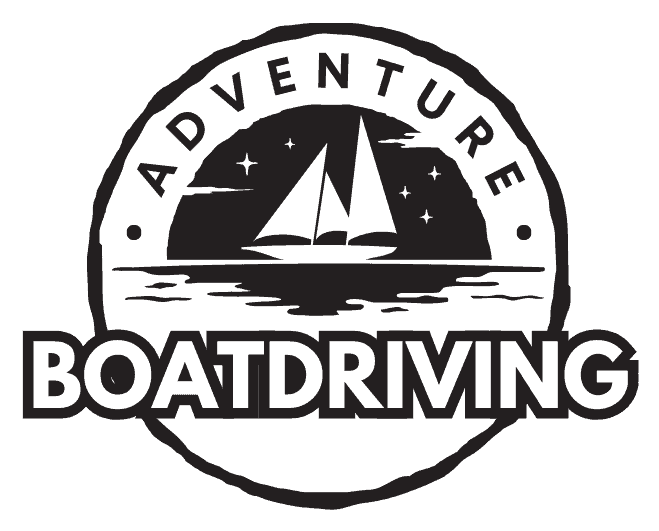
10 Common Types of Small Boats
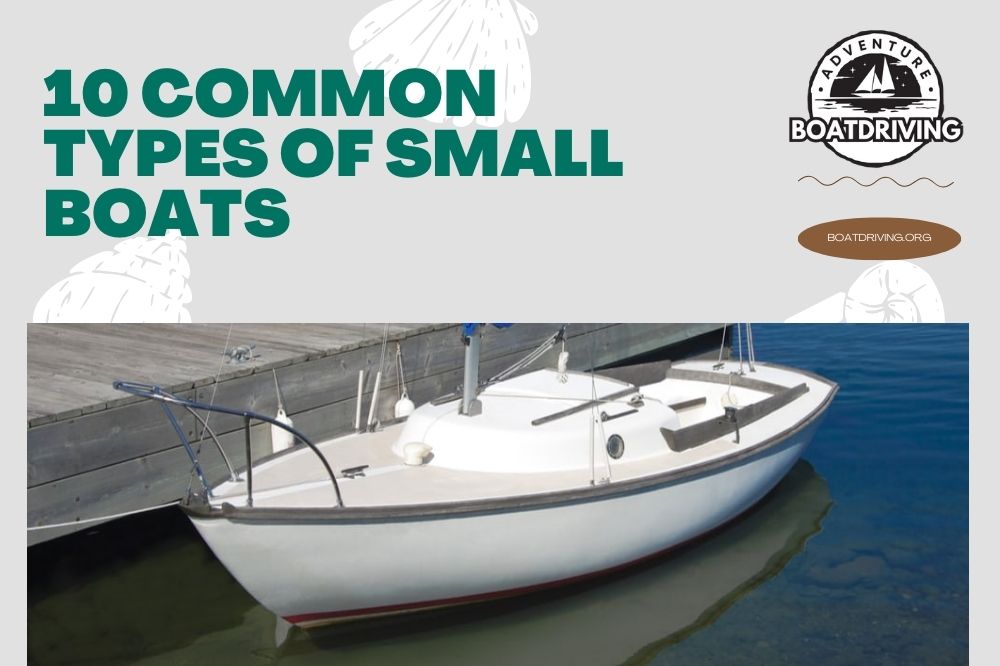
Are you among the many people who seek to get their love for water through small boats? Do you know which small boat will suit your interest?
Well, you are about to make your soul happy. Here, we’ll talk about ten different types of small boats.
These boats are nice because they are cheaper and easier to use than large boats. The type of small boat you choose will vary with your needs. You may use it for fun or fishing business.
Once you start looking for the best small boat, the many kinds will overwhelm you. So, to help you, read on to have a closer look at the types.
Types of Small Boats
1. fishing boat.
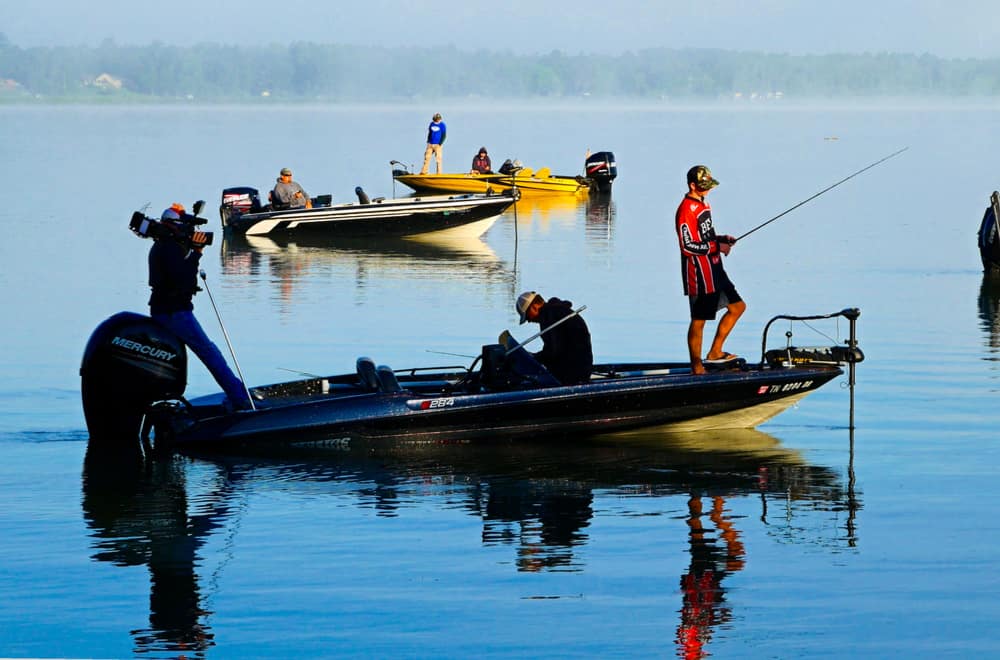
Do you want a boat to help you improve your fishing skills? Then, look no further than a fishing boat .
The boats come in many sizes and shapes to fish in salt and freshwaters. You can get the general fishing boats for every use. Also, they are taller than those used in fishing in rivers.
These all-use fishing boats have motor systems, rod lockers, live wells, and front bows. So, expect to have an easy time as you fish while on this boat.
There are also alum and bass fishing boats . The ones with alum are stable and strong. This material is light and makes the boat cheap.
As for the bass boats , they have slim bodies. Also, they have two to three anglers for easy fishing. These bass fishing boats also move at a fast speed .
2. Dinghy Boat
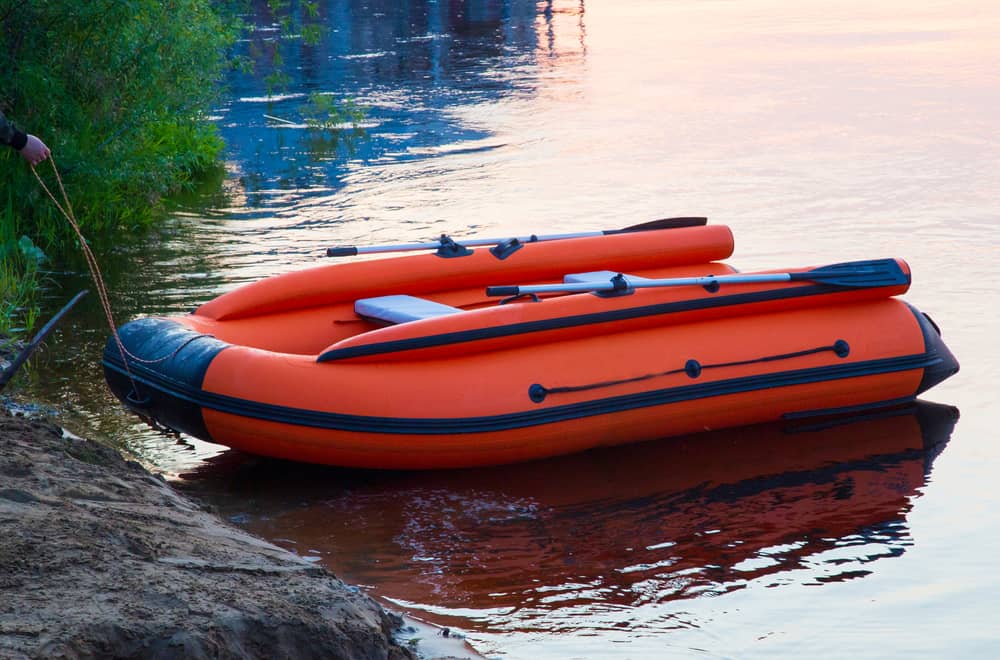
Dinghy boats are also small boats that can help you have fun in the waters. Its tiny size and flat bottom make it unique from other small boats.
Most dinghies get the shape after you inflate them. That’s why most of them are called inflatables. Also, some people call them sailboats, inflatables, or rowboats.
Remember, the boats are made from fiberglass, aluminum, or plywood . Also, most of them are eight to ten feet long. Don’t forget that these small boats come in many shapes and sizes.
You can get the ones you move by rowing, sailing, or using the motor . It will depend on your interests and budget.
People use them to move through areas that big boats and ships can’t move. You can also use them in camping and fishing in shallow waters . It’s because they are small, light, and cheap.
3. Skiff Boat
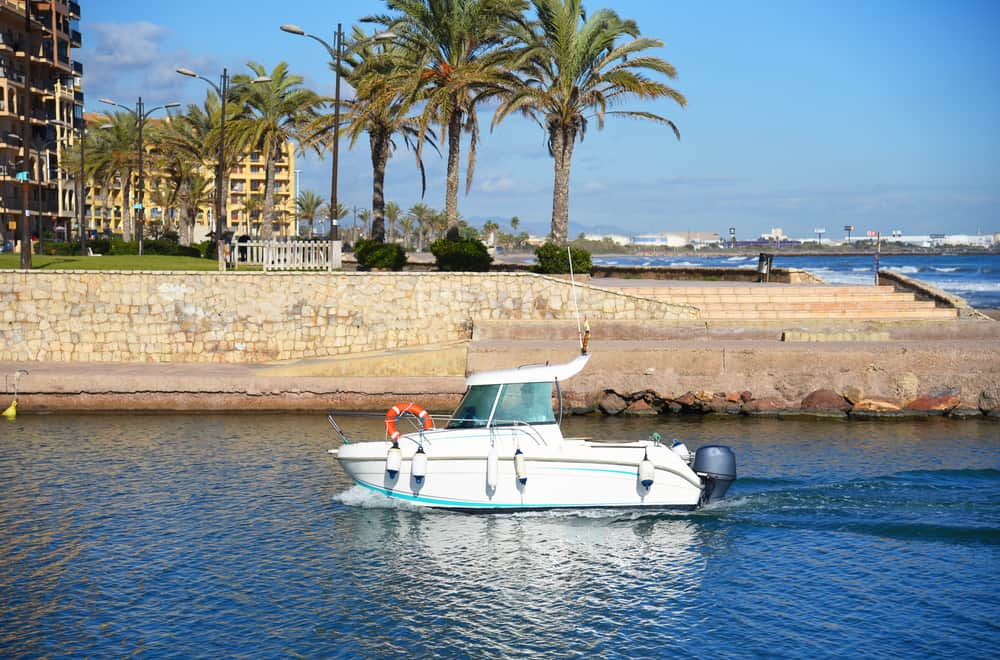
These small boats are also simple and easy to move and use. They are called skiffs because they are small and open. So, if you are looking to fish or have a good time on waters on a small budget, get a skiff boat.
Remember, because it’s light and small, you can keep it in your garage. You’ll also have an easy time maintaining these boats. After using a skiff boat , you’ll only need to clean and ensure that the motor is okay.
Thanks to their tiny body, it makes it easy to move on the waters. They are also cheaper than many other small boats.
Since it’s a small boat, it can’t hold many people and items. Remember, you can’t use them in rough waters and harsh weather. But when things are okay, it’s a great boat to use.
4. Personal Watercraft Boat (PWC)
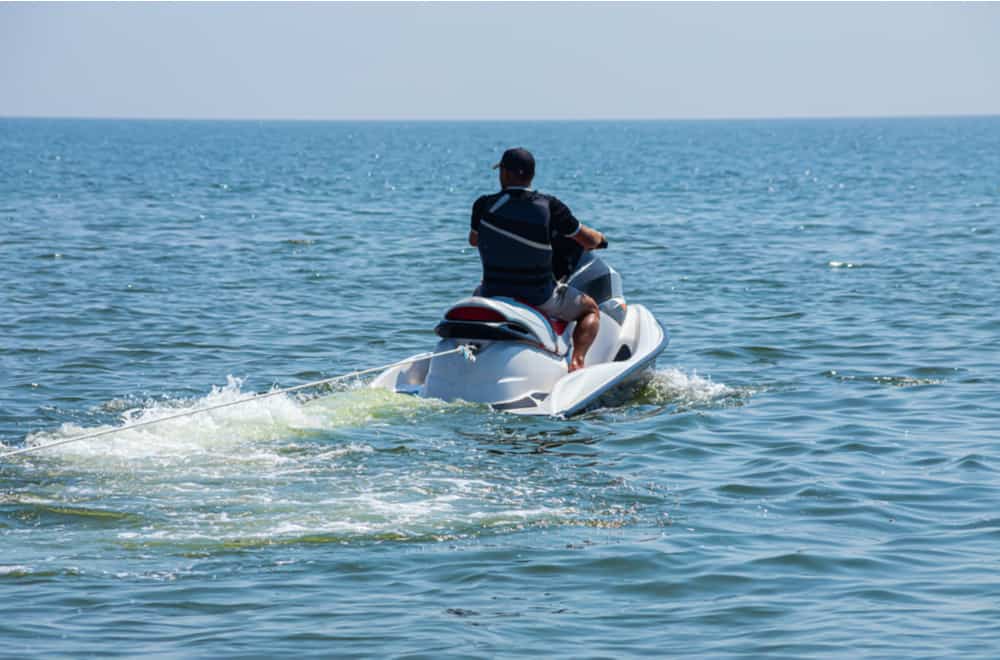
If you want a small boat to have fun and move fast on the waters, then pick on a PWC. Since they are fast, you can also call them jet skis or water motorcycles.
The engines have a strong horsepower of 60 to 300. Remember, the fastest PWC can cover 80 m/h in three seconds.
Also, the speeds and motor power allow you to use this boat in many water sports. You can use the boat for fishing in waters with harsh waves.
This small boat comes in two types. There is the stand-up PWC and sit-down PWC.
As for the stand-up Jet Ski, it can only fit one person. The sit-down type can hold a total of two people at least. Remember, this boat is more costly than other small boats because of its engine.
5. Center Console Boat
Do you want a small boat to take you through saltwater bodies? Then, a center console will be the best choice for you.
One unique aspect of this boat is its excellent fishing platform. It’s because the console’s hull has no cabin or foredeck.
Also, the control station is in the middle of the boat. The much space on the console also allows you to store many items or even hold a small party . This boat will enable you to host up to seven people.
You can use this boat for sports, fishing along offshore waters with more fish. Its excellent engine power allows it to move at high speeds. There is a strong power at the deck that acts as a fridge or sound system.
6. Jet Boat
This boat will suit you if you love to speed on the water. What makes jet boats unique is that they use jet engines as their motor. The machine is in a hull to protect it from any damage.
So, as these boats move, expect them to thrill by removing high-pressure water via a nozzle. Well, it’s because they don’t use propellers , unlike other small boats.
Expect them to come in sizes of 14 to 24 feet. Also, a jet boat is one of the best boats to us on shallow waters and watersports. If you use it well, be sure to be a winner in every race.
Remember, a jet boat is best for speed games but not fishing. But it has ample sitting space.
7. Pontoon Boat
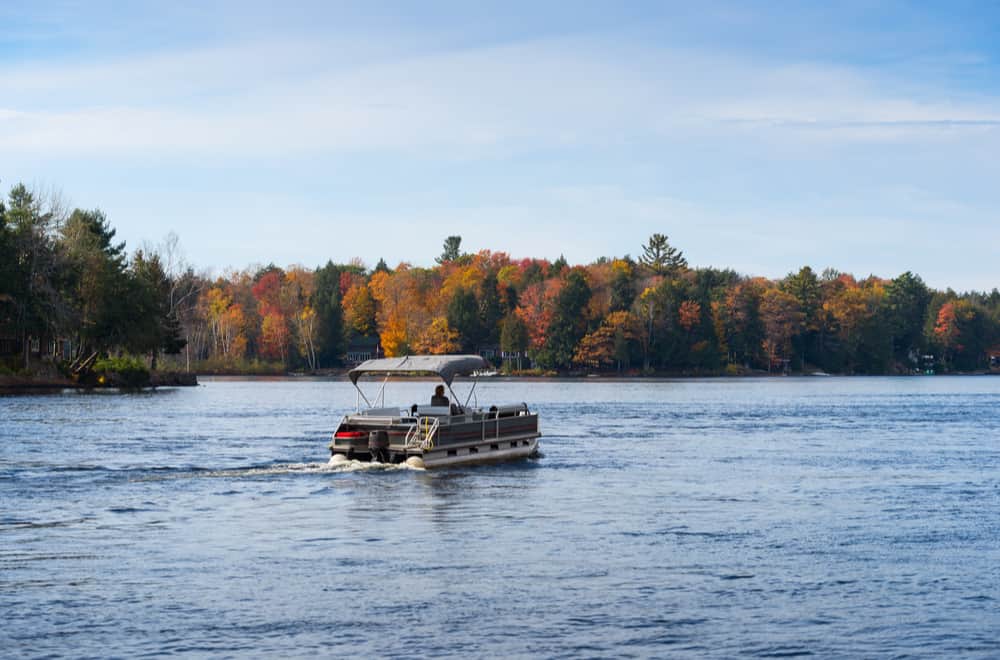
Like many other small boats, it’s easy to manage pontoon boats . Also, it can hold many people and items as you enjoy your time on the water.
So, because of their size, you can use pontoon boats in watersports, swimming, or busking in the sun. Most pontoons are about 15 to 30 feet long. But you can only use them in areas with small waters.
Also, these boats have some tubes made of aluminum . These are the things that make it stable on the water.
Pontoons are one of the best boats for fun and fishing. The models range from mini fishing ones to small performance pontoons.
Remember, the shape of these boats allows people to sit well and even leave some space to arrange the goods. But you can’t use them for long distance cruising.
8. Deck Boat
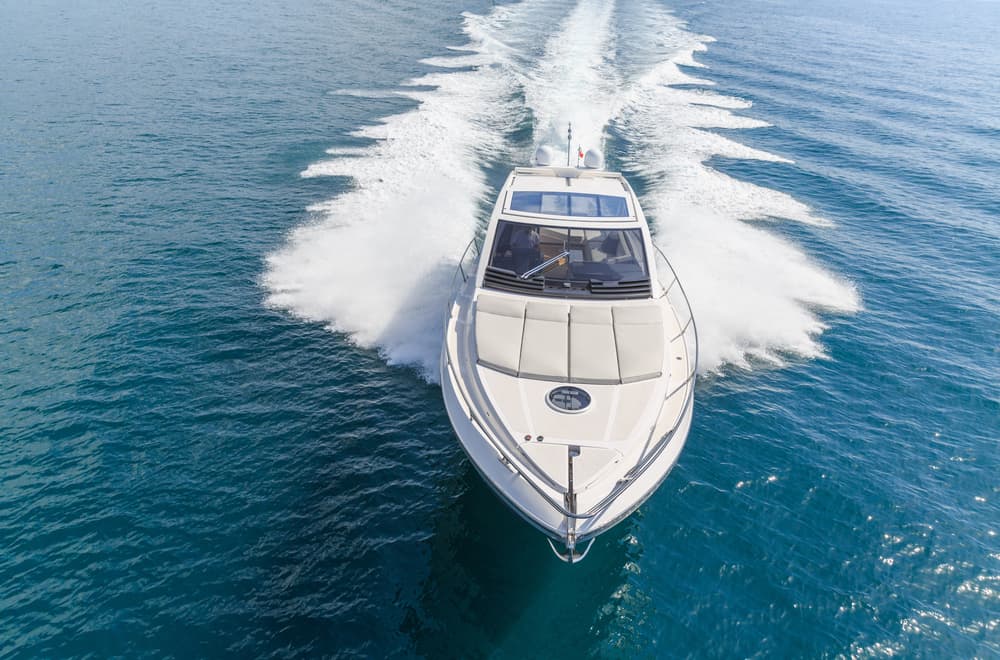
Are you looking for a speed boat with more comfortable sitting spaces? Well, you might fall for the deck boats.
As the name sounds, this boat has a wide deck that allows you to view the waters. Also, its V shape hull gives you more sitting space to even host a party as you ride. Most of them are between 25 to 35 feet long.
This boat’s engine makes it fast on the waters. Also, the propulsion system on the boats suits them for watersports, long-distance travel, fun, and fishing. Besides the yachts, deck boats are also the best for you to host your family.
The boats are also easy to maintain and operate. So, it suits the boat for many adventures.
9. Bowrider Boat
Like the deck boats , bowriders are the best suited for families who love to speed on waters. These boats have a large space bow area that can host more than eight people.
You’ll see that the boat looks like a runabout and a deck boat hybrid if you are keen enough. A bowrider boat also has a V-hull shape like a deck and runabout boat.
So, it’s also best for family events, watersports, and long way cruising, and fishing activities. It’s because of the speed and the ease of handling it on water.
Also, you’ll explore your more boat riding skills while using this boat. It’s because of the swimming platform on these boards.
10. Kayaks and Canoes
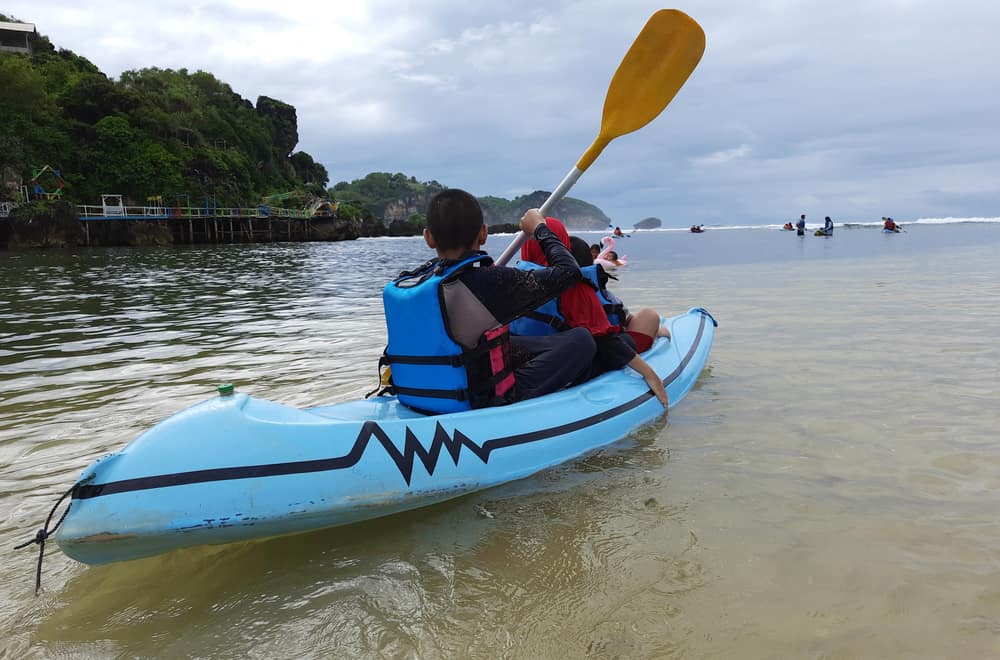
Canoes and kayaks boats are similar in the way they work. But you can go for either of them if you want to feel the water while on the boat.
These boats allow you to do things that will make you fit as you have more fun. Riding both boats makes your chest, arm, and shoulders stronger.
Remember, there are some differences between these two boats. Well, with the canoe boats, it gives you an open space to sit or kneel while rowing. You’ll row using a one-bladed paddle.
On the other hand, kayaks deny your leg freedom. While on the boat, you sit inside while your legs go out in front of you.
Also, when riding a kayak, you’ll use a double-bladed paddle for rowing the boat. These boats can only fit one person, while canoes can carry many people.
Kayaks are also smaller than canoes . But both boats come from the same material.
Most small boats help you have fun and explore your boat riding skills. Your choice will depend on your interests and budget.
These boats will allow you to go fishing in deep or shallow waters. Like the Jet Ski, most of them will enable you to participate in watersport races because of their speed. Also, these boats won’t give you a hard time using and maintaining them.
Yes, it can be hard to choose which is best for you. But either way, it doesn’t matter the small boat you pick; expect your love of the waters to grow.
So, which one among these boats is the best for you? Please let us know your choice and why.
Related posts:
- 3 Tips to Choose The Best Marine Battery Charger For Your Boat
- 10 Simple Steps to Paint a Boat
- Can You Go on a Boat While Pregnant? (10 Tips)
- 10 Tips to Choose the Right Generator for Your Boat
Similar Posts
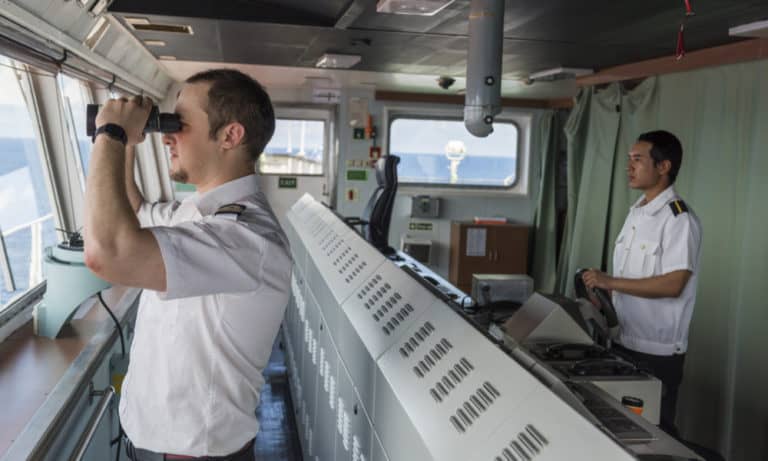
What Does A Ship Captain Do?
Do you aspire of becoming a ship captain? Or, are you simply curious regarding what duties and responsibilities this job holder must fulfil? Whatever be the case, you definitely want to know what ship captains do, aren’t you? In this post, we’ll discuss every small detail regarding ship captainship, including how to become one. So,…

6 Best Boat Wood For Boat Building
Do you want to build a wooden boat from scratch? Buying a boat is easier, but building one will give you even greater satisfaction. Whether you are looking for a challenging weekend DIY project or you want to put your handy skills to use in building something practical, boat building is a perfect choice. The…
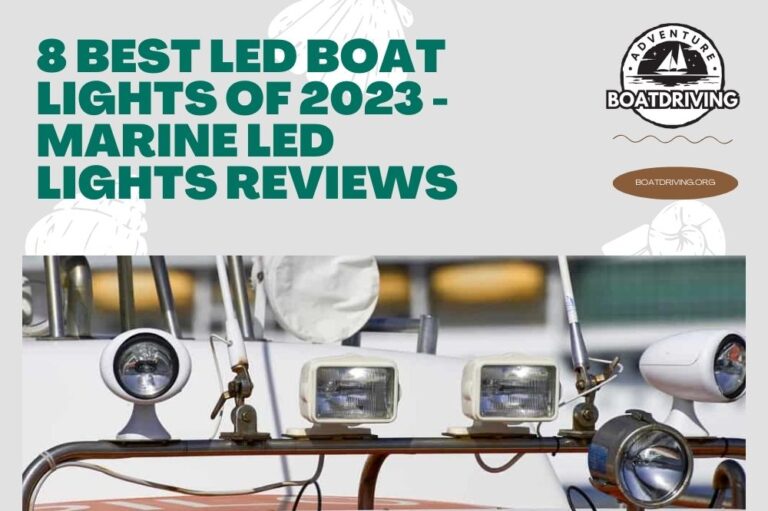
8 Best LED Boat Lights of 2023 – Marine Led Lights Reviews
Lights serve a range of very practical purposes on boats. And they can also make your craft look a real beauty when the sun goes down. But if you’re looking for new lights, the choice on offer can be bewildering. Fortunately, we’re here to help! We’re going to check out eight of the best LED…

What Size Battery Do I Need for My Boat? (Chart)
What size battery do I need for my boat is one of the crucial questions for boat owners. It is necessary to determine the boat’s electrical load to know how much power you need. Only the battery of the right type and size fits the battery compartment, provides enough power to your vessel, and allows…

7 Ways to Remove Mildew From Boat Seats
Despite our hundreds of efforts to maintain and keep our boat seats as new as possible, mildew always finds a way to destroy our boat aesthetics, don’t they? Panicky and in search of solutions to remove the mildew – the struggle is real! Given constant moisture exposure, even the slightest of carelessness can result in…
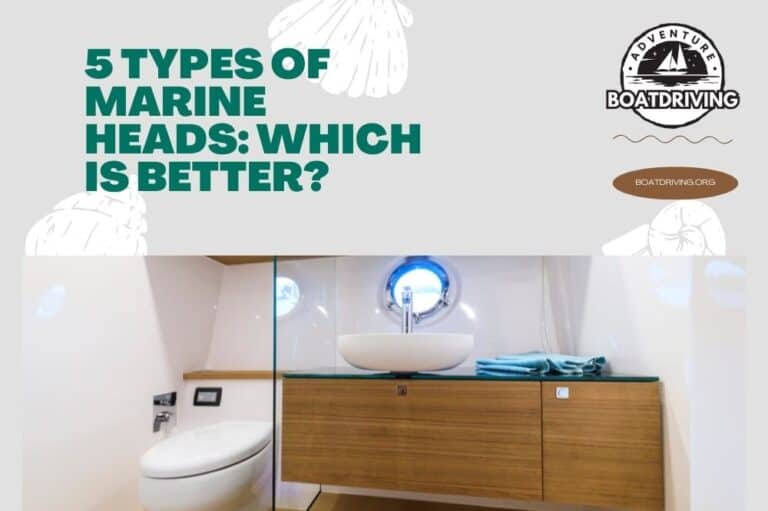
5 Types of Marine Heads: Which is Better?
If you have ever been on a train, airplane, or other forms of public transportation and had to use the bathroom, your nostrils have probably never forgiven you for the experience. In addition, your elbows may still be calloused from smacking up against the sides every time you had to make a minor adjustment. Unfortunately,…
Leave a Reply Cancel reply
Your email address will not be published. Required fields are marked *
Save my name, email, and website in this browser for the next time I comment.

11 Different Types of Yachts
Posted on Published: April 13, 2022 - Last updated: June 13, 2022

The Dutch navy first used the yacht in order to catch pirates . Until the 1950s, the primary materials used for building a yacht was wood. Today, yachts of all types and sizes are constructed of various materials including steel, aluminum, plywood , and veneers.
When Charles II used it for his own personal use, the yacht became a luxury boat often owned by important people all over the world. As a result, yachts are often associated with luxury . According to UBS and Wealth-X’s annual World Ultra Wealth Report for 2014, the world’s super-rich spends the most on their yachts at $22 billion a year.
Related: Floating Home Ideas | Types of Houseboats | Kayak Storage Ideas | Parts of a Boat Trailer
Sailing Yacht

The sailing yacht is one of the most traditional types of yachts that people purchase. When people want to be able to go out on the water and have a classic sailing adventure, owning a sailing yacht is going to be able to make that happen. These types of yachts are sailed with traditional sails, which can be quite challenging if you don’t know what you are doing. Sailing a ship using only the wind and your sails is a very interesting experience.
The fact that it is challenging and that it replicates the old way of doing things is precisely what is so appealing about sailing yachts. People who are very into sailing will absolutely adore owning one of these yachts. There are a few different types of sailing yachts that you will be able to choose from, as well. The traditional ones will only have sails to hoist and will not feature a motor.
You will also be able to purchase hybrid yachts that are primarily meant for sailing, but they also feature a motor. This can be very handy to have in case of an emergency. Being able to use the motor when you need to can be very convenient. If you run into issues with your sails or bad weather, it can be beneficial to be able to get back to port as quickly as possible.
There are also yachts that have sails, but they also have modern instruments to make navigation and sailing easier. You will be able to find a sailing yacht that will suit your tastes. Just think about what type of experience you want to have. Once you have looked over all of your options, you should come across the perfect sailing yacht for your journey.
Expedition Yacht

An expedition yacht isn’t the type of vessel that most people will purchase for random pleasure weekends. They would work just fine for those purposes, of course, but they are really meant for longer journeys. These yachts are capable of sailing for really long periods of time while remaining self-sufficient. This is crucial for people who are planning long sea voyages around the globe.
Expedition yachts are incredibly powerful, and if you ever get the chance to sail on one, you will be very impressed with it. These ships are capable of sailing very efficiently, as well. They make good use of the resources available in order to complete long journeys without any hassle. Vessels like this make it simple for people to stay out at sea for long periods of time without being inconvenienced.
One of the advantages of taking an expedition yacht on such a long journey is that you won’t have to sacrifice your comforts in any way. These yachts can be loaded up with everything that you need to stay entertained and happy on a long voyage. These luxury ships are able to combine efficiency and practicality with all of the luxuries that you enjoy. Some of the expedition yachts are so lavish that it isn’t unlike staying in a luxury hotel.
People use these expedition yachts to go all over the world. When someone wants to go on a journey to a faraway place in style, taking an expedition yacht is going to be one of the best options. These yachts are very pricey, and most people will not be able to afford them. A lavish expedition yacht is going to be even more expensive than most of the other yachts on this list.
Motor Yacht

A motor yacht is a modern version of the sailing yachts that everyone knows and loves. These types of yachts are among the most common. They are very nice to use for parties and even just casual getaways. People often charter these motor yachts for special occasions in order to have a really good time.
When most people think of a yacht, they think about some type of party ship. Many companies that charter out vessels such as these use them for upscale parties. These ships are just the right size to be able to host a fairly sizeable group. You will be able to have a fantastic time if you have a special event out on the water in one of these motor yachts.
Yachts like these usually include all sorts of fun things for people to enjoy. It isn’t uncommon for these yachts to have hot tubs, dance floors, bars, and even swimming pools. If you want to make your next birthday party truly special, then chartering a motor yacht may be your best bet. It can certainly help you to create some fantastic memories.
These motor yachts can be good for helping you to take a vacation, as well. Those who own these types of yachts will use them to sail to different destinations. They may not be well-suited to travel to certain places in the world depending on the type of hull that it has. Simply take all of the important factors into account before planning a voyage with your new motor yacht, and you will always have a great time.
Classic Yacht

Classic yachts are generally considered to be yachts that were built in the past. Some people have different definition and standards for what makes a yacht a classic. The older the yacht is, the more likely it is to be considered a classic yacht. There are yachts that were built in the 1920’s that are still being used as recreational vessels in the modern era.
People who own certain yachts from the 1970’s also consider their ships to be classics. The basics that you need to understand are actually fairly simple . A classic yacht has a certain feeling to it that you don’t get when you sail on a modern ship. These vessels are sometimes made mostly out of wood, and other classic yachts are made out of steel.
Many of these classic yachts were completely handcrafted. There is speculation that the handcrafted nature of these yachts is what ultimately gives them their charm. Whatever your feelings on the issue are, it is undeniable that the older style of yachts can be very appealing. These ships have a very interesting aura and seem to exude a classic sense of luxury.
Sometimes the interiors of these classic yachts will be kept the same as they were in the year that it was made. This can lead to some interesting design choices that may not mesh well with modern sensibilities. Regardless, if you want to get the full experience of the classic yacht, keeping things as they once did have some merit. If you want to get a feeling for what yachting was like in the past, then chartering a classic yacht can be a very intriguing experience.
Fishing Yacht

If you want to go on a fishing trip for your vacation, then you may want to consider doing so on a fishing yacht. There are yachts that are specifically designed for the purpose of fishing. Fishing is one of the oldest traditions that humanity has. So many people enjoy fishing for recreational purposes and being able to do so on a luxurious yacht is really something else.
There are yachts that are used for more casual fishing trips. You will also find that people use sports fishing yachts to go on fantastic fishing adventures. Sometimes people will use yachts to go to interesting places in the world where the fishing is said to be particularly noteworthy. Wherever you decide to take a fishing yacht will be interesting due to how fun these ships are to use.
You’ll have the normal luxuries that you will want to make use of in any yacht. These yachts can still be a great deal of fun for anyone who wants to have a party. The added benefit is that the deck of the ship is designed in a way that is conducive to fishing. You’ll be able to access the waters properly and will potentially be able to haul in some truly impressive catches.
The yacht will have plenty of room for all of your fishing gear, as well. When people charter a fishing yacht, it will sometimes come with all of the gear that you will need. You should check with the owners ahead of time so that you will know what you need to bring with you. If you’re a true fisherman, then you will definitely want to purchase one of these for yourself if possible.
Gulet Yacht

The Gulet yacht is something that originally comes from Turkey. This yacht is interesting because it can feature two or more masts. In the past, these vessels were used to transport goods. They are very worthy vessels that were originally designed to keep cargo safe from harm during transport.
Modern Gulet yachts are used more for pleasure. They are sought-after because of their beautiful wooden hulls. These hulls can be very ornate while still being practical and safe. People who appreciate the beauty of a finely- crafted ship will love owning one of these Gulet yachts.
This is an incredibly stable ship to sail in too. If you want to sail on a ship that is going to feel as natural as possible, then a Gulet yacht is a good choice to make. It is very sturdy and will be completely capable of getting you to your destination safely using only the wind in its sails. Modern Gulet yachts will also be equipped with motors, in most cases.
Gulet yachts are becoming more and more popular. People are starting to charter these yachts more frequently, and many yacht enthusiasts are pining to add a Gulet yacht to their fleet. The beauty of the ship combined with its fantastic capabilities makes it easy to see why it is so sought-after. These yachts are truly exceptional, and you will want to experience one first-hand when you get the chance.

If you don’t know a whole lot about ships, then you might see a catamaran yacht and wonder exactly what it is. A catamaran yacht is a vessel that has more than one hull. A design featuring two hulls can be ideal for certain situations. These yachts are very interesting from a visual perspective, and many of the design choices are quite fun.
Many catamaran yachts will have more room than a traditional yacht. This means that people will have more space to spread out, and it can be even more fun for parties. The overall layout of these catamaran yachts lends itself well to being a party vessel. This makes catamaran yachts among the most popular chartered ships each year.
Of course, there are different styles of catamaran yachts that you will be able to choose from. You will find that there are catamaran yachts with traditional sails and ones that feature a motor. Both of these types are actually fairly common, and sometimes a catamaran will feature both. The type of catamaran that you will want to charter will largely depend on your intentions for your excursion.
The interior of the yacht will typically be very stylish to accommodate the needs of its guests. This is definitely a luxury vessel through and through. No matter what style of catamaran you decide to go with, you will have an excellent time. It’s a good vessel to choose for those who get seasick, as well, since the increased hull space makes things feel less cramped.

Cruisers are yachts that are typically used for taking a small group out to have some fun. Unlike some of the incredibly large yachts listed earlier, cruisers can be a bit smaller inside. There are also large yachts that are classified as cruisers, but generally, you will be using cruisers for small recreational trips. If you want to go out on the water to have some fun with your closest friends, then owning a cruiser is going to be perfect for your needs.
These types of yachts are great when you want to be able to have some versatility. You will easily be able to access the water when you’re sailing a cruiser. This makes them perfect for those that want to go out fishing or even swimming in the ocean. You will be able to get where you need to go and will have a good time once you get there.
Yachts like these are typically a bit shorter than most of the other yachts featured here. Some of the fishing yachts will be around the same length. A cruiser may be between 30-feet and 60-feet long, although there are plenty of variances. Regardless of the size, it is still a great ship to own, and the fact that it is not overly long can be an advantage in some ways.
These are fun yachts that will be the perfect purchase for a first-time yacht owner. You can make a lot of fantastic memories when you have a vessel like this to use. The ship is generally very easy to handle, too, so it’s great for a newcomer to own for that reason. The cost of a nice cruiser is going to be agreeable as well, as it isn’t quite as costly as many of the other yachts that have been featured so far.
There are those who think of cruisers are more similar to speedboats. It is true that there are similarities between cruiser yachts and speedboats, but this is definitely distinct enough to be considered to be its own thing. You’ll be able to enjoy this cruiser yacht to its full potential without much worry. Whether you want to enjoy a romantic getaway or you are looking forward to a little party with your closest friends, you’ll love owning a cruiser yacht.

The flybridge design is very interesting because it will allow you to go fishing very easily. This is one of the most popular styles for fishing yachts. It makes accessing the water easier than it would otherwise be. You’ll be able to have a great view out onto the water and will have an easy time fishing.
There are some occasions where a motor yacht will also have a flybridge. Even so, this style is most closely associated with fishing yachts. It just works so well for that purpose that it makes sense overall. You’ll be able to have a really good fishing trip if you choose a yacht in this style.
The large cockpit is one of the standout features of a flybridge style yacht. It makes it simple to haul in the fish in comparison to other styles. You’ll also have enough visual range to be able to spot your lines and other important things. If you want to have a nice fishing vacation with your friends, then chartering this type of yacht is highly recommended.
You’ll be able to enjoy the overall power of these types of ships, as well. They are designed to be able to handle rough weather well and will be able to get you back home fast when you need to leave. You’ll have nothing to worry about when you charter a nice yacht like this. It’ll be a good experience so long as the fish are biting.

Tri-deck yachts can really be quite impressive to see up close. Multi-level yachts aren’t too uncommon, but when you have a three-leveled deck , it can be a sight to behold. These yachts are really interesting to sail on, and you will often see tri-deck designs on luxury cruisers. They will give passengers a lot of space to enjoy themselves.
Tri-deck style yachts are really common on vessels that are meant for upscale vacations or parties. Giving guests enough room to have a lot of fun is important. These yachts will often have plenty of interesting recreational facilities. You might even find a tri-deck yacht with multiple lavish swimming pools or something like a tennis court.
Owning a large yacht like this will require quite a large investment. When you want to be able to have the best, you’re going to need to be able to pay for it. Even so, these yachts are well worth the high asking price. They’re excellent for recreational purposes and will always be able to help you have a good time.
The sheer amount of enclosed living space available on a yacht of this type is impressive. You’ll be able to host many people on a yacht of this size. This makes hosting corporate parties on yachts such as these very popular. It can be a great vessel to own when you want to seal the deal on an important business deal.

Having a sky lounge on your yacht can potentially be a lot of fun. A sky lounge will generally be located at the top of the yacht. This design features windows that can open in order to feel the cool air. This is a completely livable space, though, making it a fun room to stay in when you’re spending time on the yacht.
The view from the sky lounge is usually quite gorgeous . Most of the yachts that feature a sky lounge design will ensure that this room has all of the amenities that you would expect. It will be climate controlled and will be perfect to stay the night in. People often enjoy spending time in the sky lounge with their significant other due to the romantic qualities that it has.
Some of these sky lounges may even have sunroofs. This can be really nice when you want to be able to look up at the stars at night. It’s a really neat feature to have on your yacht, so you will want to keep it in mind. It isn’t the most common yacht feature but you should be able to find a fantastic vessel that has a sky lounge for you to enjoy without too much of a hassle.
If you find a nice yacht to charter that has a sky lounge, then it will definitely be worth your while to enjoy it. Yachts with this convenient feature will always be sought-after. It can help to make an already romantic situation even more so. You’ll love the atmosphere that the sky lounge can provide you.
Floating resorts vs yacht-like vessels: How to pick between big and small cruise ships

- Small ships are more like quaint towns, with easier navigation and more personalized service.
- Large ships offer a wide range of eateries, bars and entertainment.
The right ship comes down to the type of vacation experience you want.
I took two cruises in July, and they couldn’t have been more different.
After spending 10 days on Seabourn Pursuit, the cruise line’s 264-guest expedition vessel, I returned home for a few days before boarding Royal Caribbean International’s Utopia of the Seas , which can accommodate over 20 times that.
Cruise ships range in size from yacht-like vessels to mega-ships that are more like floating resorts. And as much as cruises may be about the ports they visit, the ship you pick can shape the destination you can access and ultimately, the kind of trip you have. Here’s how they differ and how to know which is right for you.
What are small-ship cruises like?
If mega-ships can feel like cities at sea, small ships are perhaps more like quaint towns. It’s easier to find your way around, faces become familiar quickly and the server at the nearby eatery knows how you like your eggs.
“The service is just 100% going to be much more intense than any other type of sailing,” said Joanna Kuther, a New York City-based travel agent and owner of Port Side Travel Consultants. The majority of cruise lines sailing ships with capacities in the 200 to 700 range are luxury brands that already put a premium on service – though that can vary by operator – but there are practical reasons too.
Many of those ships have higher crew-to-guest ratios, making it easier to give customers a personalized experience. “We want people to feel that it’s (a) yacht-like atmosphere,” Natalya Leahy, president of Seabourn, told USA TODAY on board.
Small-ship cruises generally bundle more in their fares than those on larger vessels, from food to drinks like wine and spirits, select excursions and more. Some inclusions can be particularly extravagant.
On Seabourn, for example, guests can order caviar for delivery any time of day at no additional cost (I had to try it out for research purposes during an expedition through Western Australia’s Kimberley region ).
That doesn’t necessarily mean the price tags will be higher, though. While the upfront fare may cost more, by the time guests add up drink packages , specialty dining, Wi-Fi and other extras that are typically charged separately on large mainstream ships, their expenses may not be so different.
“Don't worry about what you're paying when you go on,” Kuther said. “It's what you pay when you come off.”
If the prospect of thousands of cabins and fellow guests seems overwhelming, a small ship can also offer a more manageable experience. Lines and crowds are a relative rarity and there’s less chance of getting lost trying to find your room (a situation I’ve encountered more than once on large ships).
Getting on and off is easier, Kuther added, with the vessels often docking closer to the city center or in ports that can’t accommodate larger vessels. They also stay overnight more frequently, relieving the pressure of packing sightseeing into a shorter window.
“That is amazing because if you've ever gotten off of a mega-ship tendering into Santorini, it's like the most insane thing,” she said. “Like, you're fighting for your life to get into the funicular. So, it’s definitely an elevated experience.”
While many are well-appointed, they do have a more limited number of amenities and dining options. On an Aurora Expeditions Antarctica cruise in December, the Sylvia Earle ship had only two restaurants. I enjoyed the food and some offerings rotated, but by the end of the 11-day trip I was ready to change it up.
Travelers with children may find the ships lacking in kid-friendly activities, too.
What are big-ship cruises like?
By contrast, guests on big ships are spoiled for choice. “You can't beat the variety if that's what you're looking for,” said Kuther.
Larger ships offer a wide range of eateries, bars and entertainment. Carnival Cruise Line’s Jubilee ship, for example, has more than 20 dining options, from Guy’s Burger Joint to tacos and burritos at BlueIguana Cantina and Coastal Slice pizza – not to mention the BOLT: Ultimate Sea Coaster , a water park, and Loft 19, a quieter retreat at the top of the vessel.
Those kinds of ships can be particularly well-suited to families or large groups who want options. Royal Caribbean divided its Oasis Class – and later Icon Class – into neighborhoods with that in mind.
“Everyone has got something to do and are excited to do during the day … And then in the evening, everybody can come together in one of I don’t know how many restaurants and have a great family meal or a date night or just a burger, and then they have a fantastic show,” president and CEO Michael Bayley said in a media briefing on board Utopia.
Large ships have more to offer passengers “who really want to party” as well, Kuther noted.
The scale also allows cruise lines to create more immersive experiences. On Utopia, the second-largest cruise ship in the world , I had dinner outside one night at the Chops Grille steakhouse in the vessel’s Central Park neighborhood. With a breeze blowing through the open-air walkway and the sound of crickets in the background – which the cruise line pipes in – I could’ve been convinced I wasn’t on a ship.
Guests are less likely to feel the movement of the waves at that size, which also can be helpful for passengers who are fearful of water or prone to seasickness , Kuther said.
A number of cruise lines have ship-within-a-ship concepts , too, that allow guests to escape the crowds in exclusive accommodations, restaurants and sun decks, while still having access to the wider range of onboard offerings (though some offer a greater degree of separation than others).
It’s worth noting, however, that “small” and “big” are relative terms, and many mainstream cruise lines operate ships in the 1,500-to-2,500-passenger range. Those can offer a kind of middle ground, with a more intimate experience often at a lower price point (though Kuther noted that’s partly because those ships tend to be older).
Still, the overall experience of a bigger ship may cause sensory overload for some travelers.
Which is right for me?
- If you’re looking for adventure on an expedition or want to be pampered on a quiet, lower-key vessel, small ships are the way to go.
- If you want lots of things to do, places to eat and ways to party, consider a bigger ship . But there’s sure to be one that suits you.
As Kuther put it, “(If) people say they don't like cruising, I will always 100% say, ‘You just weren't on the right cruise.’”
Nathan Diller is a consumer travel reporter for USA TODAY based in Nashville. You can reach him at [email protected].
The Key Points at the top of this article were created with the assistance of Artificial Intelligence (AI) and reviewed by a journalist before publication. No other parts of the article were generated using AI. Learn more .
Superyacht sinks latest: Hopes that air pockets offer slim chance of survival; divers form strategy to enter wreckage
Search efforts have entered a third day for six tourists missing after a yacht sank off the coast of Sicily. Experts hope air pockets may offer a chance of survival, while divers have warned a "world of objects" stand in their way. Listen to a Daily podcast on the search as you scroll.
Wednesday 21 August 2024 07:24, UK
- Superyacht sinking
- Missing's brother hopes air pockets offer chance for survival
- 'World of objects' stand in way of divers - as strategy formed
- Watch: CCTV captures yacht seconds before it sinks
- Six missing - including tech boss, Morgan Stanley executive and top lawyer
- Crew survivor 'spared by grace of God' - as staff named
- Captain speaks out for first time
- Explained: What causes waterspouts? | Inside the superyacht
- Listen to the Daily podcast above and tap here to follow wherever you get your podcasts
- Live reporting by Brad Young
The divers' priority is to reach the cabins, where the missing tourists may have been sleeping at the time of the storm, says news correspondent Ashna Hurynag.
But they have been hampered by the amount of debris and furniture in the boat.
Search and rescue teams speculate some of that furniture was dislodged as the yacht capsized, blocking doorways and preventing people from escaping, says Hurynag.
" They're really being hampered by the amount of furniture, the amount of debris that is underwater within that vessel.
"The yacht is also in a complicated position. It's tilted on its side."
She adds: "They're having to work under very tight conditions and in searing heat."
Equipment has been shipped to the east coast of Palermo to aid their efforts, including an underwater remote-controlled search vehicle.
" People are expecting perhaps to see the hull of the ship being lifted up, the vessel itself being lifted out of the water: That's not going to be anything we're going to see for a very, very long time," says Hurynag.
" The priority is to try and preserve its position as much as possible because it is intact, and try and access it from outside."
As the search operation continues, investigators are attempting to figure out how the boat sank.
The captain will be key to this investigation, says Hurynag - as well as questions over the design of the boat and the weather - but he "was in an incredible amount of shock" when he spoke yesterday.
Italy's fire brigade Vigili del Fuoco said it has developed a plan to enter the wreckage of the yacht.
Nineteen divers have been going down in groups of three and attempting to open a passage at the stern, La Repubblica reported.
This involves breaking through a glass window in the lounge area of the main deck to access the interior of the 56-meter yacht.
But efforts to reach the cabins are still obstructed by a "world of objects", fire department diver Marco Tilotta told Reuters news agency.
"So, getting inside and descending into the compartment below from the stairs that are narrow and going into all of the cabins is a really hard and difficult job.
"We are not stopping. We have resources, manpower and means."
The Italian coastguard has not ruled out the possibility that those missing may still be alive, with experts speculating air pockets could have formed as the yacht sank.
That the vessel sank at speed and remains intact on its side "could favour the formation of small air pockets inside", said Dr Jean-Baptiste Souppez, a senior lecturer of mechanical, biomedical and design engineering at Aston University.
"This is obviously highly speculative and impossible to predict accurately."
Jeremy Bloomer, the twin brother of missing Morgan Stanley International bank chairman Jonathan Bloomer, told the BBC his fingers were crossed.
"It's a slow process and it will take time. So there might be air pockets, but we don't know. It's still wait and see, so fingers crossed."
David Tabizel, who established software company Autonomy with missing British tycoon Mike Lynch, told Sky News: "I'm just heartbroken for him and his family and I hope there's a miracle about to occur.
"If anyone has the resilience to survive this - he does. And I hope he's found an air pocket."
Dr Souppez said a sign the rescuers may be looking for is a "banging noise at regular intervals".
"This is common practice on submarines and was one of the signs the search mission for the Titan submarine was looking for after it went missing last year."
Yesterday, Vincenzo Zagarola of the Italian coastguard said the missing were unlikely to be alive.
"Never say never, but reasonably the answer should be not."
Welcome back to our live coverage of the Bayesian shipwreck, as the search for six missing tourists, including four Britons, enters its third day.
Still unaccounted for are British tycoon Mike Lynch and his 18-year-old daughter Hannah; Morgan Stanley International bank chairman Jonathan Bloomer and his wife, Judy Bloomer; and Clifford Chance lawyer Chris Morvillo and his wife, Neda Morvillo.
Divers spent Tuesday struggling to enter the cabins of the superyacht on the seabed off the Sicilian coast, after confirming the bridge was empty.
Italian authorities said their working theory is the missing are still inside the boat, as search crews cut a hole in the hull in an attempt to gain access.
An engineer who led the salvage operation for the wrecked cruise ship Costa Concordia in 2012 warned rescue divers entered a "critical" 24 hours yesterday.
The coastguard confirmed a body found after the yacht sank yesterday was that of chef Recaldo Thomas, a Canadian-Antiguan national who was working on the Bayesian superyacht.
And the captain of the Bayesian spoke for the first time on Tuesday, saying of the storm: "We didn't see it coming."
We're pausing our coverage for tonight but here is a recap of what we know:
- Six people are still missing after the sinking of the Bayesian superyacht, with rescue teams searching off the Sicilian coast for survivors;
- The Italian coastguard confirmed that the body found after the yacht sank yesterday is that of chef Recaldo Thomas;
- The coastguard also named more survivors - Leah Randall, Katja Chicken and Leo Eppel;
- An engineer who led the salvage operation for the wrecked cruise ship Costa Concordia said rescue divers have entered a "critical" 24 hours;
- The captain of Bayesian spoke for the first time, saying: "We didn't see it coming" in reference to the storm that sank the boat.
Images are emerging of emergency crews working near the site where the yacht sank in Porticello.
Search and rescue efforts by sea and air have so far delivered no results and experts have said we are in a "critical" 24 hours.
Bayesian was moored around half-a-mile off the coast of Porticello when it sank at around 5am local time yesterday.
A friend of Recaldo Thomas, the chef who was killed as the yacht sank, has described him as a "calm spirit" who had a "smile that lit up the room".
Gareth Williams, who grew up with Mr Thomas in Antigua, told the BBC : "I can talk for everyone that knew him when I say he was a well-loved, kind human being with a calm spirit.
"He would come over to mine over the weekend and he would sing. He had the deepest, most sultry voice in the world, and a smile that lit up the room.
"He told me just the other day that he needed to work two more seasons to fix up his late parents' house. He loved yachting, but he was tired."
Mr Thomas was also a Canadian citizen. The country's foreign ministry said it was "aware of reports that a Canadian citizen has died" and that consular officials were in contact with local authorities.
Mike Lynch "lost the last 12 years fighting a ridiculous case", his co-founder has told Sky News.
David Tabizel, who founded the software company Autonomy with Mr Lynch - the sale of which became the subject of the US fraud case - said he was a "legend" and that he had a "very soft spot for him".
"I'm just heartbroken for him and his family and I hope there's a miracle about to occur," he said.
Mr Tabizel said Mr Lynch's "resilience" and "importance to British economy cannot be overstated".
"Now he has passed through this great trauma we were hoping he would lead a new national revolution to help Britain out of its current moribund state," he said.
Mr Tabizel added: "He has been one of the most influential, intelligent and most honourable human beings I have ever had the honour of knowing."
Mr Lynch sold Autonomy to US computing giant Hewlett-Packard for $11bn (£8.6bn).
He was accused of conspiracy and attempted fraud over the sale to HP and an intense, multiyear legal battle in the US ensued.
He was acquitted of multiple fraud charges in June after more than a year under house arrest.
CCTV footage showing the yacht moments before it sank has been released.
We reported on separate footage earlier, shot from a villa 200m away from the site of the disaster in Porticello.
The owner of the villa told outlet Giornale Di Sicilia the shots showed the boat sinking in 60 seconds: "You can clearly see what is happening. There was nothing that could be done for the vessel. It disappeared in a very short time."
Experts have said we're in a critical 24 hours in the search for survivors.
Earlier, Nick Sloane, who led the salvage operation for the wrecked cruise ship Costa Concordia, said survivors might be trapped in air pockets, but that time was running out to save them (see post at 12.50pm).
Now Dr Jean-Baptiste Souppez, senior lecturer in mechanical engineering at Aston University, has said the speed at which the vessel sank (a few minutes, according to accounts) and the fact that it remains intact "could favour the formation of small air pockets inside".
While the formation is "highly speculative", he says, there are records of survivors found in such pockets.
"A sign the rescuers may be looking for is a banging noise at regular intervals: this is common practice on submarines, and was one of the signs the search mission for the Titan submarine was looking for after it went missing last year," he says.
"But whether air pockets formed on the Bayesian is simply impossible to predict."
Be the first to get Breaking News
Install the Sky News app for free


IMAGES
COMMENTS
Small pleasure boats can refer to a variety of boats on the list above. While there is no official designation for what makes a "small" boat, most people agree that smaller than the upper 20s in feet is the cut-off. Some small pleasure boats may include bowriders, runabouts, jet boats, and car toppers among many more.
Fishing Boat. Dinghy Boat. Deck Boat. PWC or Personal Watercraft Boat. Pontoon Boat. Jet Boat. Runabout. Any of these boat types would be great for fishing or leisure boating. They provide easy access to small streams and backwaters, are low-maintenance, and promote quality time with friends and family.
Its enduring popularity, strong class association, and supportive community make it a beloved classic in the world of small sailboats, embodying a perfect blend of performance, comfort, and inclusivity for sailors of all levels. 8. Hobie Cat. Start a fun hobby with the Hobbie Cat. Length: 16.7ft / 5.04 m.
The cost of a charter on board a small yacht depends on the size, location, number of crew and time of year. You can expect a yacht charter for a small yacht to start at around $15,000 and could be up to $60,000 for a brand new vessel. This cost does not include food, fees and tips for the yacht crew.
The most common small boat types and their uses. Jon boats - a flat-bottomed boat that is typically used for fishing, hunting, or utility purposes. Skiffs - a small open boat typically used for recreational boating, fishing, and other water activities. Dinghies - a small, lightweight boat often used as a tender to transport people and ...
Boatsetter is a unique boat-sharing platform that gives everyone — whether you own a boat or you're just renting — the chance to experience life on the water. You can list a boat, book a boat, or make money as a captain. List your boat & start earning an avg. of $20K yearly with Boatsetter. Charles Plueddeman.
Catalina 16.5. jlodrummer. Catalina Yachts are synonymous with bigger boats but they have some great and smaller boats too such as Catalina 16.5. This is one of the best small sailboats that are ideal for family outings given that it has a big and roomy cockpit, as well as a large storage locker.
Types of small boats Small fishing boats. Small fishing boats are designed with features and amenities tailored specifically for fishermen. They offer stability, manoeuvrability and plenty of storage space for all your fishing equipment. These boats come in a variety of configurations, including bass boats, jon boats and boat boats, so you can ...
Small boat types offer a unique blend of versatility, affordability, and accessibility, making them ideal for seasoned sailors and newcomers alike. From the gentle swaying of a kayak to the exciting speed of a motorboat, these compact crafts promise a personal and intimate experience with the water.
Types of Small Sailing Boats. Small sailboats, usually under 25 feet long, embrace masts, rudders, and sails. Varieties include daysailers, small sloops, " cat " rig boats, and multihulls with two or three hulls for stability. Expect the possibility of a lively journey when the wind picks up.
Small boats are a popular choice for leisure boating and fishing enthusiasts. With a variety of types available on the market, it can be challenging to determine which one is the best fit for your needs. In this article, we will explore the seven most common types of small boats and their features. Understanding Small Boats Small boats are typically defined as boats that are less than 26 feet ...
Types of Small Yachts. There are two primary types of small yachts: motor yachts and sailing yachts. Each type offers unique features and advantages depending on the owner's preferences and intended use. Motor Yachts: These mini yachts are powered by engines, making them ideal for those who prioritize speed and convenience.
The term "small sailboat" encompasses a wide range of sailboat models. Generally, if a boat is less than 25 feet long, has a mast, rudder, and sail, and can be towed on a trailer, it is considered a small sailboat. Various types of small sailboats have different characteristics that may make them better for certain types of sailing.
A displacement boat of this size will be designed to travel at up to 8.04 knots, but never beyond that. Displacement boats can be very fuel efficient, certainly much more efficient than planning hulls. Their obvious drawback is the speed limitation. Flat Bottom Hulls. In the world of small boats, flat bottoms generally mean a bumpy, wet ride.
Small sailing boats come in various types, each with its unique features and characteristics. From sailing dinghies to daysailers, small sloops, and multihulls, there is a wide range of options for sailing enthusiasts to choose from. Whether it's the traditional design of a small sloop or the stability offered by multihulls, each type of small ...
Here are ten types of small boats to cater for your every adventure: 1. Fishing Vessel. A fishing vessel is a paradise for avid anglers who crave the exhilaration of the catch. Designed to maximize your fishing experience, these types of small boats come equipped with features like rod holders, live wells for keeping bait fresh, and ample ...
Naval architect C.W. Paine defined small-craft stability as "The propensity of the vessel to remain upright.". Two major types of stability apply to small boats: initial stability (how tender or not-tender a boat feels), and ultimate stability (the ability of a boat to return upright after being turned over).
40-100+ feet. Expedition Yacht. 70-400+ feet. Flybridge Yacht. 50-150+ feet. Sports Fisher Yacht. 30-70+ feet. A guide to yacht anchor types and sizes is vital for understanding the different types and sizes available in the yacht industry. For more information, check out a guide to yacht tenders.
7. Pontoon Boat. Like many other small boats, it's easy to manage pontoon boats. Also, it can hold many people and items as you enjoy your time on the water. So, because of their size, you can use pontoon boats in watersports, swimming, or busking in the sun. Most pontoons are about 15 to 30 feet long.
Check out these small fishing boat options to find your ideal angling machine. Whether you're looking at freshwater fishing boats or saltwater fishing boats , the bulk of the choices on the market are going of 20 feet long or smaller. Smaller boats cost less to purchase, operate, store, and maintain. Since they're less complex they break ...
The Dutch navy first used the yacht in order to catch pirates.Until the 1950s, the primary materials used for building a yacht was wood. Today, yachts of all types and sizes are constructed of various materials including steel, aluminum, plywood, and veneers. When Charles II used it for his own personal use, the yacht became a luxury boat often owned by important people all over the world.
The 29 XC Cross Cabin includes a hideaway cabin in the front of the console accessed by a flip-up door which hides the optional head and sink, but the area can also convert to a bunk for two or a large storage area. The aft deck comes standard with fishing or gear hauling space, but the optional aft cabin, which also sleeps two, is accessed either from inside the wheelhouse or from the aft ...
Small ships are more like quaint towns, with easier navigation and more personalized service. Large ships offer a wide range of eateries, bars and entertainment. The right ship comes down to the ...
The yacht was anchored about a half a mile from the port of Porticello on the Mediterranean island. ... A small waterspout - one of several types of tornadoes - developed over the area Monday ...
The life raft on which survivors are understood to have escaped the sinking yacht has been pictured in the harbour at Porticello in Sicily. Earlier, Karsten Borner, the captain of a boat that came ...
Two migrants have died attempting to cross the English Channel in a small boat. The incident happened offshore between Calais and Dunkirk, in France, on Sunday morning, a French maritime official ...